Rapid Warming Alert: India Heats Up by 0.9°C Over Last Ten Years
Latest News: 22nd November 2025, UPSC Preparation


A new multi-institutional climate study reports that India’s average temperature rose by nearly 0.9°C between 2015 and 2024. The findings highlight a sharp increase in warm days and a surge in regionally varied extreme weather events, underscoring the urgency for climate adaptation strategies nationwide.
Significant Warming Trends Across Regions
The study notes that the hottest day of the year has warmed by 1.5–2°C in western and northeast India since the 1950s. Researchers observe clear escalation in heatwaves, with warm days increasing by 5–10 days per decade. Mountain regions, coastal belts and plains each show distinct climate stress patterns, driven by rising temperatures and altered rainfall behaviour.
Regional Climate Impacts Intensify
The Hindukush Himalayas are experiencing accelerated warming and glacier retreat, while the Indo-Gangetic plains report heightened heat stress and declining monsoon-season rainfall. Northwest and western India show an increase in warm days, warm nights and extreme rainfall. Coastal zones, particularly the western coast, face rising sea levels and more severe tropical cyclones.
Growing Threat of Compound Extremes
Researchers warn of rising “compound extremes”, where simultaneous or sequential hazards—such as concurrent heatwaves and droughts—amplify socio-economic impacts. These events strain agriculture, water systems and public health, often overwhelming existing response capacities. Climate projections suggest that the frequency and intensity of such extremes will escalate further as global temperatures rise.
Exam Oriented Facts
India’s average temperature rose by about 0.9°C during 2015–2024.
Warm days have increased by 5–10 days per decade across many regions.
The tropical Indian Ocean is warming at 0.12°C per decade, one of the fastest rates globally.
Marine heatwaves may reach nearly 200 days per year by 2050.
Ocean Warming and Extreme Sea-Level Events
The tropical Indian Ocean’s rapid warming is triggering more frequent marine heatwaves, threatening coral reefs and fisheries crucial to coastal livelihoods. The Arabian Sea has become a hotspot for intense cyclones, with pre-monsoon cyclone intensity rising by 40 per cent in recent decades. Extreme sea-level events historically seen once in a century are projected to occur annually by mid-century, prompting calls for region-specific adaptation, resilient infrastructure and improved early warning systems.
(NNI / Latest news / Latest news india / India latest news/UPSC Preparation)
FSSAI Tightens Rules, Raids Begin Over Misleading ORS Drink Claims
Latest News: 21st November 2025, UPSC Preparation
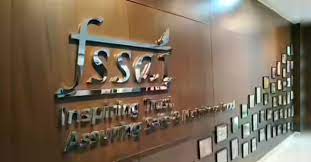

India’s food safety regulator has taken a decisive step to curb misleading health claims by ordering the removal of beverages falsely marketed as oral rehydration solutions. The directive targets fruit-based drinks, energy drinks and electrolyte beverages that misuse the medically significant term “ORS” without meeting approved standards.
Regulator Targets Misleading Product Labels
The order clarifies that no beverage may use the term “ORS” in its name or branding unless it follows the medically established formulation. Several products were found to contain excessive sugar and flavouring agents, creating a false impression of therapeutic value.
Strict Compliance for Food Business Operators
All manufacturers, retailers and digital platforms must immediately withdraw non-compliant items. Enforcement teams have been instructed to inspect outlets, remove mislabelled drinks and ensure only WHO-standard ORS products remain available.
Consumer Risks Linked to False ORS Claims
The regulator highlights that true ORS requires a precise combination of glucose and essential salts. Drinks that do not meet this standard may worsen dehydration, particularly in children, when used during illness. Misbranding also leads to confusion at point of purchase.
Exam Oriented Facts
Only WHO-approved oral rehydration formulations may legally use the “ORS” label.
Misuse of medical terminology in food labels violates the Food Safety and Standards Act, 2006.
Excessive sugar in drinks can aggravate dehydration during diarrhoeal illness.
Regulatory action includes inspections across retail, pharmacy and e-commerce platforms.
Guidance for Consumers Amid Market Clean-Up
Shoppers are encouraged to read labels carefully and verify electrolyte content before purchase. Experts advise relying on trusted ORS sachets for effective rehydration rather than sweetened beverages. Public reporting of non-compliant products can further support enforcement efforts as markets transition to clearer and safer labelling practices.
(NNI / Latest news / Latest news india / India latest news/UPSC Preparation)
Hope for Millions: Indigenous Sickle Cell Gene Therapy Launched in India
Latest News: 20th November 2025, UPSC Preparation
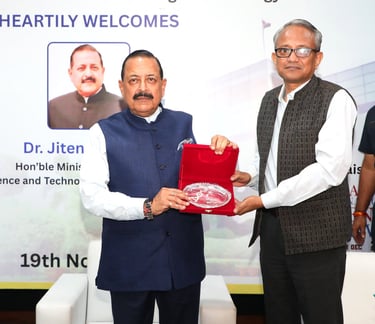

India has launched its first indigenous CRISPR-based gene therapy for Sickle Cell Disease, marking a landmark moment for national genomic medicine and tribal healthcare. The therapy, named BIRSA 101 in honour of Birsa Munda, strengthens the country’s position in advanced therapeutic innovation.
Breakthrough Launch and Scientific Significance
Unveiled by the Union Minister of State for Science and Technology, the therapy represents a major milestone in the Atmanirbhar Bharat initiative. It uses precise gene-editing technology to correct the defective gene responsible for Sickle Cell Disease. The innovation is designed to serve as a long-term curative solution for hereditary blood disorders.
Burden of Sickle Cell Disease in India
Sickle Cell Disease severely impacts tribal regions across central and eastern India. It causes chronic anaemia, painful crises and progressive organ damage. The therapy aims to support national efforts to reduce the burden of the disorder, particularly among underserved communities with limited access to advanced medical care.
Development, Affordability and Public-Private Collaboration
Developed by the CSIR-Institute of Genomics and Integrative Biology, the therapy showcases India’s ability to deliver high-end medical solutions at a fraction of global prices. A collaboration agreement with a leading vaccine and biotech manufacturer will enable large-scale production. This partnership supports the transition of the enFnCas9 CRISPR platform into widely available, low-cost therapies for multiple genetic disorders.
Exam Oriented Facts
BIRSA 101 is India’s first indigenous CRISPR-based gene therapy.
The therapy supports the National Sickle Cell Anaemia Elimination Mission.
Global gene therapies can cost over Rs 20 crore, while the Indian version is low-cost.
The technology is based on the engineered enFnCas9 CRISPR platform developed by CSIR-IGIB.
National Mission and Future Health Impact
The launch advances the goal of a Sickle Cell–free India by 2047. Integrated with nationwide screening and prevention programmes across tribal districts, the therapy provides a pathway to accessible, curative treatment. Its development establishes India as a leader in developing advanced, affordable genetic technologies for vulnerable populations.
(NNI / Latest news / Latest news india / India latest news/UPSC Preparation)
India Loses Ground In Climate Performance, Drops 13 Places On Global List
Latest News: 19th November 2025, UPSC Preparation


India has dropped 13 positions to rank 23rd in the latest Climate Change Performance Index (CCPI) 2026, marking its steepest fall in recent years. The assessment highlights a continued dependence on coal, rising greenhouse gas (GHG) emissions and weak price signals on carbon, despite strong progress in renewable energy capacity.
What Is The Climate Change Performance Index?
The CCPI 2026 has been released on the sidelines of the UN climate conference (COP30) in Belem, Brazil. It evaluates the climate mitigation performance of 63 countries and the European Union, which together account for over 90% of global GHG emissions. Countries are assessed in four categories: GHG emissions, renewable energy, energy use and climate policy. No country occupies the top three slots, as none is considered compatible with limiting dangerous climate change.
India’s Ranking And Score In CCPI 2026
India now stands at 23rd position with an overall score of 61.31, moving from the “high” to the “medium” performance bracket. It receives a medium rating for GHG emissions, energy use and climate policy, but scores low on renewable energy. The report also lists India among the world’s largest producers of coal, oil and gas, underlining the tension between its development pathway and global climate goals.
Progress On Renewables, But Coal Remains Central
The index notes that India has expanded renewable energy significantly. Non-fossil sources now account for more than half of installed power capacity, and renewables have grown to around 14% of the energy mix over recent years. The country has reached 50% non-fossil installed power capacity ahead of its 2030 target and has rapidly scaled solar, including rooftop installations. However, the national energy pathway is still anchored in coal, with no coal exit date, continued auction of new blocks and plans to increase production.
Exam Oriented Facts
India ranks 23rd in CCPI 2026, falling 13 places from the previous year.
CCPI assesses 63 countries and the EU on GHG emissions, renewable energy, energy use and climate policy.
Denmark, the UK and Morocco hold 4th, 5th and 6th ranks; the top three positions are vacant.
India has achieved 50% of installed power capacity from non-fossil sources before its 2030 target.
Key Concerns And Recommendations For India
Experts criticise the absence of a time-bound coal phase-down, uneven carbon price signals and fossil fuel subsidies that lock in high-emission infrastructure. They also flag social and environmental conflicts linked to large grid-scale renewable projects. The report calls for a clear coal phase-out plan with a no-new-coal date and a peak coal year, stronger safeguards for renewable siting, binding sectoral and state-level decarbonisation milestones for 2035 and 2040, and a just transition that protects workers, smallholders, women and vulnerable communities.
(NNI / Latest news / Latest news india / India latest news/UPSC Preparation)
UNEP’s 2025 Methane Report Warns of Rising Global Emissions
Latest News: 18th November 2025, UPSC Preparation


A new global assessment by the UN Environment Programme and the Climate and Clean Air Coalition has highlighted critical gaps in methane reduction efforts ahead of the 2030 deadline. Launched during COP30, the Global Methane Status Report 2025 shows that while action has accelerated, current commitments are still insufficient to meet global climate goals.
Rising Emissions and 2030 Targets
Methane levels reached about 352 million tonnes in 2020 and are projected to rise to 369 million tonnes by 2030 under existing policies. Agriculture and waste are expected to drive much of this increase. The target of reducing methane emissions by at least 30 per cent from 2020 levels by 2030 remains at risk without faster action across all major emitting sectors.
Global Commitments and Potential Gains
Since 2021, a growing number of countries have incorporated methane-specific measures into their national climate commitments. If current pledges are fully implemented, emissions could fall by 8 per cent below 2020 levels this decade. UNEP notes that fully deploying feasible measures could reduce emissions by 32 per cent, enough to deliver the Global Methane Pledge.
Exam Oriented Facts
Methane accounts for nearly one-third of current global warming.
Global methane emissions were about 352 Mt in 2020.
Agriculture contributes 42 per cent of global methane emissions.
Energy-sector mitigation could deliver over 72 per cent of available 2030 reductions.
Sector-Wise Mitigation Opportunities
The energy sector offers the largest and most cost-effective reductions through leak detection, flaring controls, improved distribution networks, and methane capture from fossil fuel operations. Waste-sector actions such as landfill gas capture and organic waste diversion could yield steady long-term gains. Agriculture remains the hardest area to reform, with measures such as feed additives, improved breeding, and better rice-field water management offering substantial but slow-to-adopt benefits.
Need for Better Data and Finance
The report stresses that accurate methane measurement remains uneven, especially in the fossil fuel sector. Improved monitoring systems and transparent data are necessary to guide targeted interventions. Current finance directed at methane reduction remains below requirements, with a large gap between available funds and what is needed to implement mitigation at scale.
(NNI / Latest news / Latest news india / India latest news/UPSC Preparation)
Legendary Environmentalist Thimmakka, 114, Breathes Her Last In Bengaluru
Latest News: 14th November 2025
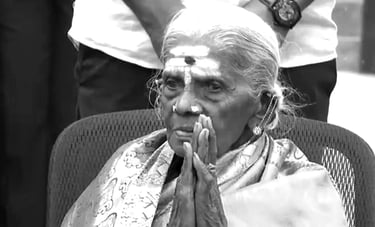

India’s beloved environmentalist and Padma Shri awardee Saalumarada Thimmakka, renowned worldwide for planting and nurturing thousands of banyan trees, passed away at the age of 114 in Bengaluru on Monday. Fondly known as the “Mother of Trees,” Thimmakka dedicated her life to environmental conservation despite having no formal education. Her remarkable work began with planting 384 banyan trees along a highway in Karnataka, a lifelong mission that earned her national admiration and global recognition. She had been undergoing treatment for age-related ailments when she breathed her last.
Leaders, activists and citizens across the country paid rich tributes to Thimmakka, acknowledging her as a symbol of selfless service and ecological commitment. Her legacy, they said, is not merely in the thousands of trees she planted, but in the environmental consciousness she inspired across generations. Karnataka officials announced plans to honour her memory through tree-planting drives and conservation projects. As India mourns her passing, Thimmakka’s life stands as a testament to how one individual’s determination can shape an entire ecological movement.
(NNI / Latest news / Latest news india / India latest news/UPSC Preparation)
World Diabetes Day Highlights Link Between High Blood Sugar and Heart Disease
Latest News: 13th November 2025, UPSC Preparation


World Diabetes Day, observed on 14 November each year, brings global attention to the rising prevalence of diabetes and its long-term health risks. With millions living with undiagnosed or uncontrolled diabetes, experts continue to emphasise the condition’s serious impact on multiple organs, especially the heart.
Rising Diabetes Burden Across Age Groups
Diabetes occurs when the body fails to produce sufficient insulin or cannot use it effectively. This causes persistent high blood sugar levels. Recent estimates show that more than one-tenth of the adult population is living with diabetes, with projections indicating a sharp increase in the coming decades. A large number of individuals remain unaware of their condition, increasing the chances of complications.
How High Blood Sugar Affects Overall Health
Prolonged hyperglycaemia affects the eyes, nerves, kidneys and cardiovascular system. In severe forms, it can lead to kidney failure, nerve damage, stroke and vision impairment. These complications arise slowly and often remain unnoticed until significant damage has occurred, making regular monitoring essential.
Mechanisms Linking Diabetes to Heart Disease
High blood glucose damages the inner walls of blood vessels and affects the nerves that control heart function. This leads to narrowing and stiffening of arteries, restricting blood flow and raising the likelihood of heart attacks. Reduced delivery of oxygen and nutrients further weakens cardiac performance.
Exam Oriented Facts
World Diabetes Day is observed on 14 November every year.
Persistent high blood sugar damages blood vessels and nerves linked to heart function.
People with diabetes face higher risks of heart attack, stroke and heart failure.
Atherosclerosis and chronic inflammation are key pathways connecting diabetes to heart disease.
Plaque formation due to cholesterol imbalance is common among people with diabetes, with elevated LDL and triglyceride levels accelerating artery blockage. Insulin resistance impairs heart metabolism, contributing to cardiomyopathy. Chronic inflammation and oxidative stress further degrade blood vessel integrity, while autonomic nerve damage disrupts heart rate regulation, increasing susceptibility to arrhythmias and cardiovascular emergencies.
(NNI / Latest news / Latest news india / India latest news/UPSC Preparation)
World Diabetes Day Highlights Link Between High Blood Sugar and Heart Disease
Latest News: 13th November 2025, UPSC Preparation


World Diabetes Day, observed on 14 November each year, brings global attention to the rising prevalence of diabetes and its long-term health risks. With millions living with undiagnosed or uncontrolled diabetes, experts continue to emphasise the condition’s serious impact on multiple organs, especially the heart.
Rising Diabetes Burden Across Age Groups
Diabetes occurs when the body fails to produce sufficient insulin or cannot use it effectively. This causes persistent high blood sugar levels. Recent estimates show that more than one-tenth of the adult population is living with diabetes, with projections indicating a sharp increase in the coming decades. A large number of individuals remain unaware of their condition, increasing the chances of complications.
How High Blood Sugar Affects Overall Health
Prolonged hyperglycaemia affects the eyes, nerves, kidneys and cardiovascular system. In severe forms, it can lead to kidney failure, nerve damage, stroke and vision impairment. These complications arise slowly and often remain unnoticed until significant damage has occurred, making regular monitoring essential.
Mechanisms Linking Diabetes to Heart Disease
High blood glucose damages the inner walls of blood vessels and affects the nerves that control heart function. This leads to narrowing and stiffening of arteries, restricting blood flow and raising the likelihood of heart attacks. Reduced delivery of oxygen and nutrients further weakens cardiac performance.
Exam Oriented Facts
World Diabetes Day is observed on 14 November every year.
Persistent high blood sugar damages blood vessels and nerves linked to heart function.
People with diabetes face higher risks of heart attack, stroke and heart failure.
Atherosclerosis and chronic inflammation are key pathways connecting diabetes to heart disease.
Plaque formation due to cholesterol imbalance is common among people with diabetes, with elevated LDL and triglyceride levels accelerating artery blockage. Insulin resistance impairs heart metabolism, contributing to cardiomyopathy. Chronic inflammation and oxidative stress further degrade blood vessel integrity, while autonomic nerve damage disrupts heart rate regulation, increasing susceptibility to arrhythmias and cardiovascular emergencies.
(NNI / Latest news / Latest news india / India latest news/UPSC Preparation)
COP30 begins in Belem with global leaders uniting for climate action
Latest News: 10th November 2025, UPSC Preparation


The 30th United Nations Climate Change Conference, widely known as COP30, has officially opened in Belem, Brazil, bringing together world leaders, scientists, business figures, and activists from more than 190 countries. The conference, held from November 10 to 21, 2025, seeks to strengthen global cooperation and commitments to address climate change, rising temperatures, and environmental degradation.
Focus of COP30
This year’s COP aims to accelerate progress on implementing the Paris Agreement and chart a clear course for achieving net-zero emissions by mid-century. Delegates will discuss enhanced nationally determined contributions (NDCs), funding for climate adaptation, and strategies for sustainable development. The Belem Declaration, expected at the conclusion of the summit, will outline new pledges from governments to reinforce global unity on climate resilience.
Key participants and themes
Notable attendees include UK Prime Minister Sir Keir Starmer, high-level delegations from China and the United States, and representatives from major intergovernmental and civil society organisations. The summit agenda covers renewable energy transition, deforestation control, and equitable climate financing for developing nations. Belem’s location, in the heart of the Amazon region, symbolises the growing emphasis on protecting biodiversity as a central pillar of climate action.
Belem’s significance and environmental vision
Hosting COP30 in the Amazon Basin underlines Brazil’s intent to lead by example in balancing economic growth with environmental protection. The conference venue has been transformed into a “green zone,” showcasing indigenous-led initiatives, sustainable agriculture, and low-carbon innovation. Brazil’s government aims to use the platform to advocate stronger global frameworks against deforestation and to secure investment in rainforest conservation.
Exam Oriented Facts
The 30th UN Climate Change Conference (COP30) is held in Belem, Brazil, from November 10–21, 2025.
Over 190 countries are participating in the summit.
The conference focuses on accelerating Paris Agreement implementation and net-zero commitments.
Belem’s Amazon location highlights biodiversity and rainforest conservation.
Expectations from COP30
COP30 is expected to produce a roadmap linking the Baku outcomes of COP29 with Belem’s forward-looking agenda, focusing on finance, technology transfer, and carbon-market mechanisms. As nations face increasing climate emergencies, the conference aims to translate pledges into concrete action. Leaders are under pressure to ensure accountability in emission cuts, deliver climate finance commitments, and reinforce trust in the global response to the climate crisis.
(NNI / Latest news / Latest news india / India latest news/UPSC Preparation)
Modi launches ₹1 lakh-crore RDI fund at ESTIC
Latest News: 04th November 2025, UPSC Preparation

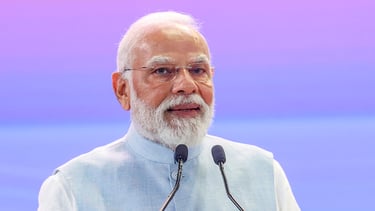
Prime Minister Narendra Modi inaugurated the Emerging Science & Technology Innovation Conclave (ESTIC) 2025 at Bharat Mandapam, New Delhi, unveiling a ₹1 lakh-crore Research, Development and Innovation (RDI) Scheme Fund to catalyse private R&D. He also announced the Anusandhan Research Foundation to strengthen research across universities and industry.
Big push for private-sector research
The RDI Fund targets high-risk, high-impact projects that often struggle for capital. It aims to derisk early stages, crowd-in private money, and accelerate commercialisation. The Prime Minister framed the corpus as a bridge from lab to market, signalling policy support for deep-tech, hardware and frontier science.
Anusandhan Research Foundation for academia-industry links
The new foundation will coordinate competitive grants, fellowships and centres of excellence. It is designed to tighten links among universities, startups and industry. The goal is steady pipelines of translational research, better IP generation, and faster scale-up of breakthroughs into domestic manufacturing.
ESTIC 2025: themes and participants
Over 3,000 delegates, including Nobel laureates, scientists and industry leaders, are attending. Sessions span eleven themes: advanced materials and manufacturing; artificial intelligence; bio-manufacturing; blue economy; digital communications; electronics and semiconductors; emerging agriculture tech; energy; environment and climate; health and medical technologies; quantum science and technology; and space technologies. A vision document and a coffee table book on scientific achievements were released.
Exam Oriented Facts
Event: ESTIC 2025 inauguration in New Delhi on 3 November 2025.
Key measure: ₹1 lakh-crore RDI Fund to boost private-sector R&D.
Institution: Anusandhan Research Foundation to support academia-industry research.
Themes: 11 areas including AI, semiconductors, quantum, space and energy.
Strategic context and recent milestones
The Prime Minister positioned India as a technology pioneer, citing pandemic-era vaccine delivery built on digital public infrastructure. He referenced the successful launch of GSAT-7R, underlining momentum in space communications. The package signals a shift from consumption-led tech to research-intensive innovation, with policy focus on deep-tech, resilient supply chains, and scale-ready platforms. The three-day conclave now moves to partnerships, deal flow, and roadmaps to absorb the new corpus into time-bound programmes.
(NNI / Latest news / Latest news india / India latest news/UPSC Preparation)
PM Modi Launches Rs 35,440 Crore Agriculture Schemes
Latest News: 13th October 2025, UPSC Preparation

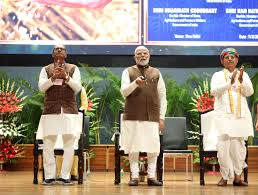
The Government of India launched two agricultural schemes in 2025. Prime Minister Narendra Modi revealed the PM Dhan Dhaanya Krishi Yojana and the Mission for Aatmanirbharta in Pulses. These initiatives aim to boost productivity, strengthen rural economies, and enhance farmers’ incomes across the country. The schemes come with a combined investment of over Rs 35,000 crore and target 100 specially selected districts.
Recent Agricultural Initiatives
The PM Dhan Dhaanya Krishi Yojana focuses on crop diversification, sustainable farming, irrigation, storage, and credit availability. It integrates 36 government schemes for a unified approach. The Dalhan Atmanirbharata Mission aims to increase pulse production by expanding cultivation area and improving procurement and processing. It targets nutritional security and benefits nearly two crore pulse farmers.
Focus on Aspirational Districts
The schemes draw inspiration from the Aspirational Districts Programme. Over 100 districts once labelled backward are now priority areas for development. The approach combines convergence, collaboration, and competition among districts to accelerate progress. Infrastructure improvements include roads, electrification of schools, and healthcare coverage, transforming rural livelihoods.
Agricultural Growth and Diversification
India’s agricultural sector has seen remarkable growth since 2014. Foodgrain production rose by 90 million tonnes. Milk production leads globally, and fish output ranks second worldwide. Honey and egg production have doubled. New fertiliser plants and micro-irrigation cover vast areas. Insurance claims under crop insurance schemes have supported farmers during adverse conditions.
Empowering Farmers and Women
More than 10,000 Farmer Producer Organisations (FPOs) have been formed to improve market access. Women play a key role in rural transformation as leaders in farming and natural agriculture. Initiatives such as the ‘Lakhpati Didis’ campaign and drone technology for spraying have increased efficiency and income for rural women. Training clusters and Krishi Sakhis promote eco-friendly farming practices.
Supportive Infrastructure and Technology
Major projects worth over Rs 5,450 crore were inaugurated in animal husbandry, fisheries, food processing, and agriculture. Foundations were laid for cold chains, aquaparks, and integrated fishing harbours. Certification programmes for natural farming and AI technicians have been launched. PACS have been transformed into multi-service centres, enhancing rural credit and support systems.
Economic Relief and Market Expansion
Recent GST reforms reduced costs of tractors, irrigation equipment, organic fertilisers, and bio-pesticides. This has eased financial burdens on farmers and rural households. The government encourages diversification beyond staples to boost exports and reduce imports. Honey exports have tripled, reflecting growing value addition and global market integration.
(NNI / Latest news / Latest news india / India latest news/UPSC Preparation)
India Launches ₹1,500 Crore Critical Mineral Recycling Scheme
Latest News: 07th October 2025, UPSC Preparation

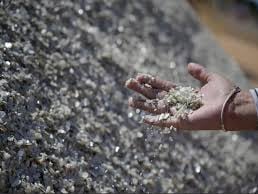
The Government of India has introduced a ₹1,500 crore incentive scheme to boost critical mineral recycling. This move aims to reduce the country’s dependence on imports and build self-reliance in the critical minerals sector. The scheme is part of the National Critical Mineral Mission and was approved by the Union Cabinet in September 2025. It focuses on developing recycling capacity from secondary sources such as e-waste and spent lithium-ion batteries.
Scheme Objectives and Scope
The scheme targets the extraction and production of critical minerals from recycled materials. It promotes recycling of e-waste, spent lithium-ion batteries, and other scrap. Both large and small recyclers, including start-ups, are eligible. Support extends to new units, capacity expansion, modernisation, and diversification of existing units. The scheme excludes incentives for black mass production alone, focusing on actual mineral extraction processes.
Guidelines and Application Process
Detailed guidelines have been issued after consultations with industry and stakeholders. These outline incentive allocation, application, evaluation, disbursement, and performance monitoring. Applications opened on 2 October 2025 and will close by 1 April 2026. The Ministry of Mines hosts the guidelines and application portal online. The scheme ensures transparency and institutional oversight to maintain efficiency.
Incentive Structure and Caps
Incentives cover capital expenditure (Capex) and operational expenditure (Opex) subsidies. Large entities can receive up to ₹50 crore in total, with a maximum Opex subsidy of ₹10 crore. Small entities have a total ceiling of ₹25 crore and an Opex cap of ₹5 crore. This structure aims to encourage wider participation and equitable distribution of benefits.
Expected Outcomes and Impact
The scheme aims to develop 270 kilo tonnes of annual recycling capacity. This is projected to yield 40 kilo tonnes of critical minerals yearly. It is expected to attract investments worth around ₹8,000 crore. The initiative will create approximately 70,000 direct and indirect jobs. This will strengthen India’s strategic mineral supply chain and support sustainable industrial growth.
Significance for National Mineral Security
India’s dependence on imports for critical minerals poses economic and security risks. Recycling reduces reliance on foreign sources and mitigates supply disruptions. It promotes circular economy principles by recovering valuable materials from waste. The scheme aligns with global trends towards sustainable resource management and technological innovation.
(NNI / Latest news / Latest news india / India latest news/UPSC Preparation)
India’s Major Disaster Resilience Projects Approved
Latest News: 05th October 2025, UPSC Preparation
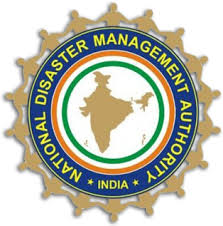

The Union Home Minister-led High-Level Committee (HLC) in 2025 approved disaster mitigation and recovery projects worth Rs 4,645.60 crore. These projects benefit nine states and align with the national goal of a disaster-resilient India. The committee includes key ministers and uses funds from the National Disaster Mitigation Fund (NDMF). The focus is on flood control, ecosystem protection, and infrastructure rebuilding.
Key Project Approvals and Funding
The largest share, Rs 692.05 crore, was allocated to Assam for restoring 24 wetlands in the Brahmaputra basin. This pilot project aims to improve flood storage, reduce erosion, protect aquatic life, and boost fisheries. The Centre will fund 75 per cent, with the state contributing 25 per cent. The long-term objective is to create a flood-proof Brahmaputra valley.
Urban Flood Risk Management Programme Phase-II
The HLC approved Rs 2,444.42 crore for the Urban Flood Risk Management Programme Phase-II. It targets 11 flood-prone cities such as Bhopal, Jaipur, Guwahati, and Lucknow. The funding model is 90 per cent from the Centre and 10 per cent from the states. Guwahati will receive an additional Rs 200 crore for floodwalls, erosion control, stormwater systems, and early warning mechanisms.
Recovery and Reconstruction After Natural Disasters
Funds of Rs 1,270.78 crore for Assam and Rs 260.56 crore for Kerala were sanctioned for flood and landslide recovery. This includes support after the 2022 floods and the 2024 Wayanad landslide. These measures complement previous approvals for flood risk in seven metro areas and hazard-specific projects addressing landslides, glacial floods, forest fires, lightning, and drought.
Financial Disbursements and National Disaster Funds
In the fiscal year 2026, the Centre disbursed Rs 13,578.80 crore under the State Disaster Response Fund (SDRF) to 27 states. It also released Rs 2,024.04 crore under the National Disaster Response Fund (NDRF) to 12 states. Additional funds were allocated for disaster mitigation efforts to strengthen preparedness and response.
(NNI / Latest news / Latest news india / India latest news/UPSC Preparation)
UNDP Report on Forest Rights Act Progress
Latest News: 31st August 2025, UPSC Preparation

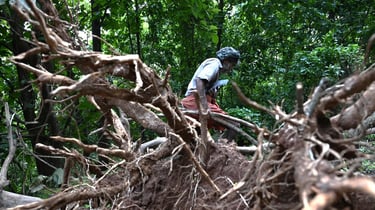
The United Nations Development Programme (UNDP) released a report in 2025 analysing the implementation of the Forest Rights Act (FRA) in India. The report marks the need for a consensus on a sunset clause to set an end date for recognising and vesting rights under the FRA. It also recommends measures for improved governance and management after rights are granted. The FRA, enacted in 2006, aims to recognise rights of Scheduled Tribes and other traditional forest dwellers over forest land and resources.
Background
The FRA recognises individual and community rights over forest land. So far, titles have been distributed over 2.32 crore acres, with 1.88 crore acres under community rights. However, this is only about 18% of the estimated 9.88 crore acres potentially eligible for community rights. The slow uptake is attributed to historical conflicts, policy gaps, and jurisdictional issues.
State-Level and Challenges
The UNDP report studied FRA implementation in Chhattisgarh, Maharashtra, and Odisha. All three states expressed the need for an end date to the recognition process. Officials admitted that some individual titles were incorrectly recognised, and efforts are ongoing to rectify records. Missing titles and poor record-keeping were reported, especially in Chhattisgarh, denoting the need for centralised and accurate data systems.
Governance
Conflicts between tribal welfare and forest departments have hindered forest governance. The report calls for high-level inter-departmental committees to resolve these issues. It stresses clarity on when Gram Sabha-approved forest management plans should be integrated with forest department working plans. This integration is crucial to advance community forest resource management.
Gender Equity
The report emphasises placing gender equity at the core of FRA implementation. It recommends collecting gender-disaggregated data and promoting women’s leadership in community forest management. Linking FRA with the National Rural Livelihood Mission (NRLM) is suggested to support gender-sensitive livelihood options. Recognising forest rights holders as a distinct category in social protection schemes is also advised.
Policy Recommendations
The UNDP urges the formulation of a National Tribal Policy for the next five years. It suggests exploring Article 275(1) of the Constitution to fund the integration of FRA with related laws like PESA for better tribal governance. The Ministry of Tribal Affairs’ programmes like PM-JANMAN and DAJGUA have shown leadership but require long-term support for sustained impact.
Intellectual Property
Section 3(1)(k) of the FRA recognises community rights over biodiversity and traditional knowledge. The report notes a lack of data on claims related to intellectual property and suggests exploring monetisation potential. It also calls for clearer policies on ownership, harvesting, transit, and sale of minor forest produce (MFP). Despite Centre guidelines on minimum support prices, many states have hesitated to deregulate key forest products like bamboo and tendu. Clarification is needed on whether individual rights holders can sell MFP directly to private buyers.
(NNI / Latest news / Latest news india / India latest news/UPSC Preparation)
Pradhan Mantri Viksit Bharat Rozgar Yojana
Latest News: 16th August 2025, UPSC Preparation

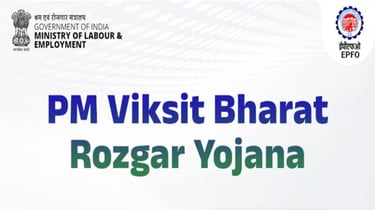
The Centre launched the Pradhan Mantri Viksit Bharat Rozgar Yojana (PM-VBRY) on 15 August 2025. The scheme aims to boost formal employment by providing financial incentives to both first-time employees and employers. Operated by the Employees’ Provident Fund Organisation (EPFO), the scheme has a budget of ₹99,446 crore and targets the creation of over 3.5 crore jobs in two years.
Objectives of PM-VBRY
The scheme seeks to formalise jobs and increase job creation in the organised sector. It offers direct cash incentives to encourage employers to hire new workers and motivate employees to retain jobs. The initiative also promotes financial literacy and long-term savings among workers.
Incentives for Employees
Employees joining an EPFO-registered establishment for the first time after 15 August 2025 and earning up to ₹1 lakh per month are eligible. They receive up to ₹15,000 in two instalments. The first instalment is paid after six months of employment. The second instalment is given after 12 months, contingent on completing a financial literacy module. A portion of the second instalment is credited to a designated savings account to encourage future savings.
Incentives for Employers
Employers registered with EPFO who hire additional eligible staff can receive up to ₹3,000 per month per new hire. The benefit lasts for two years for most sectors and up to four years for manufacturing companies. To qualify, companies with fewer than 50 employees must hire at least two extra workers, while those with 50 or more employees must hire at least five additional workers.
Eligibility and Application Process
Employees must create a Universal Account Number (UAN) linked to Aadhaar using face authentication via the UMANG app. No separate application is required for employees; eligibility is automatic upon first-time EPFO registration. Employers must obtain an EPFO code through the Shram Suvidha Portal and register on the EPFO employer login portal. They must submit monthly Electronic Challan cum Return (ECR) with provident fund contributions on time and maintain new hires for at least six months.
Payment and Benefits Delivery
Employee incentives are directly transferred to Aadhaar-linked bank accounts via Direct Benefit Transfer (DBT). Employer incentives are credited every six months to PAN-linked company bank accounts. The scheme links financial benefits to employment retention and compliance with formal sector regulations.
Impact and Significance
PM-VBRY aims to strengthen the formal labour market and support small and medium enterprises. It encourages stable employment and financial inclusion. By integrating financial literacy, the scheme prepares workers for a dynamic economy and encourages long-term financial security.
(NNI / Latest news / Latest news india / India latest news/UPSC Preparation)
India’s Groundwater Pollution Crisis
Latest News: 11th August 2025, UPSC Preparation
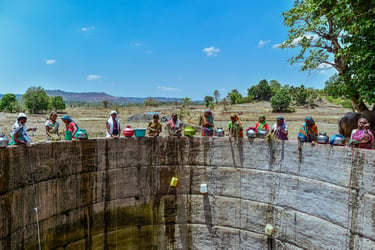

India’s groundwater, a vital resource for drinking and irrigation, faces a severe pollution crisis. The 2024 Central Ground Water Board (CGWB) report reveals widespread contamination by nitrates, fluoride, arsenic, uranium, and heavy metals. This invisible threat endangers millions, especially in rural areas dependent on groundwater. The crisis results from over-extraction, industrial discharge, and weak regulatory enforcement.
Groundwater Dependency in India
Over 85% of rural drinking water and 65% of irrigation water in India come from groundwater. Despite abundant rivers and monsoons, underground water remains the mainstay for domestic and agricultural use. This reliance makes groundwater quality critical for health and food security.
Extent and Types of Contamination
More than 20% of groundwater samples show nitrate contamination, mainly due to excessive chemical fertiliser use and poor sanitation. Fluoride contamination affects over 9% of samples, causing dental and skeletal fluorosis in states like Rajasthan and Andhra Pradesh. Arsenic pollution, especially in Punjab and Bihar, far exceeds WHO limits and increases cancer risks. Uranium and iron contamination also pose serious health threats. Heavy metals from industrial waste contribute to neurological and developmental disorders.
Health Impacts of Contaminated Groundwater
Fluoride exposure leads to skeletal deformities and stunted growth in millions. Arsenic causes skin lesions, cancers, and respiratory issues. Nitrate contamination results in blue baby syndrome and rising hospital admissions for nitrate toxicity. Uranium exposure risks chronic kidney damage. Heavy metals cause anaemia, immune disorders, and neurological damage. Waterborne diseases like cholera and hepatitis emerge from sewage-contaminated groundwater.
Case Studies of Groundwater Pollution
In Budhpur, Uttar Pradesh, toxic industrial discharges caused 13 deaths from kidney failure. Petroleum-like fluids appeared in handpumps in Jalaun. Paikarapur in Bhubaneswar witnessed mass illness from sewage seepage. Ballia, Uttar Pradesh, recorded arsenic levels 20 times above safe limits, linked to thousands of cancer cases. These incidents show systemic failures in pollution control and monitoring.
Regulatory and Institutional Challenges
India’s groundwater governance is fragmented. The Water (Prevention and Control of Pollution) Act, 1974, inadequately addresses groundwater. The CGWB lacks regulatory power. State Pollution Control Boards are under-resourced. Coordination between agencies such as CGWB, CPCB, SPCBs, and the Ministry of Jal Shakti is weak. Monitoring is infrequent and data is not publicly accessible. Over-extraction exacerbates contamination by lowering water tables and concentrating toxins.
Strategies for Mitigation and Reform
A National Groundwater Pollution Control Framework is needed to empower CGWB and clarify agency roles. Modern monitoring technologies like real-time sensors and remote sensing must be adopted. Water quality data should link with health surveillance for early warnings. Community-level arsenic and fluoride removal systems should expand. Urban and industrial waste must follow strict Zero Liquid Discharge norms. Agrochemical use requires regulation and promotion of organic farming. Local governance and citizen participation must be strengthened for effective groundwater management.
(NNI / Latest news / Latest news india / India latest news/UPSC Preparation)
Union Cabinet Approves Rs. 2000 Crore Grant to NCDC
Latest News: 02nd August 2025, UPSC Preparation
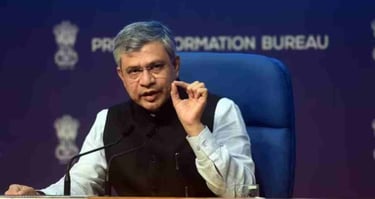

The Union Cabinet chaired by Prime Minister Narendra Modi has approved a Central Sector Scheme to provide Rs. 2000 crore as grant-in-aid to the National Cooperative Development Corporation (NCDC). This scheme will run from 2025-26 to 2028-29 with Rs. 500 crore allocated each year. The grant will enable NCDC to raise Rs. 20,000 crore from the open market, which will be used to extend loans to cooperatives across India.
Financial Structure
The Rs. 2000 crore grant will come from the Government of India’s budgetary support. It will empower NCDC to mobilise Rs. 20,000 crore over four years. These funds will be lent to cooperatives for new projects, expansion, modernisation, and working capital needs. This financial leverage aims to strengthen cooperative societies and improve their operational capacities.
Scope and Beneficiaries
The scheme targets about 2.9 crore members belonging to 13,288 cooperative societies spanning sectors such as dairy, livestock, fisheries, sugar, textile, food processing, storage, cold storage, labour, and women-led cooperatives. The wide coverage ensures support to diverse rural and semi-urban economic activities, encouraging inclusive growth.
Implementation Strategy
NCDC will execute the scheme, overseeing disbursement, monitoring, and loan recovery. Loans may be given directly to cooperatives or via state governments, based on NCDC guidelines. Eligible cooperatives meeting direct funding criteria will receive loans against admissible securities or state guarantees. The funding will support setting up new projects, technology upgrades, modernisation, expansion, and working capital.
Economic and Social Impact
The funding is expected to create income-generating assets and provide liquidity for cooperatives. It will boost capacity building, profitability, and productivity. Employment opportunities will rise across skill levels due to infrastructure development and project expansion. Cooperatives’ democratic principles will help reduce socio-economic disparities and increase women’s participation in the workforce, promoting social inclusion.
Background of Cooperative Sector in India
India’s cooperative sector is a vital pillar of rural economy and development. It comprises over 8.25 lakh cooperative societies with more than 29 crore members. Approximately 94% of farmers are linked to cooperatives. The sector spans credit, banking, fertiliser, sugar, dairy, marketing, handloom, handicrafts, fisheries, and housing. Supporting weaker sectors like dairy, poultry, fisheries, textile, and women-led cooperatives is crucial for balanced rural growth and employment generation.
About National Cooperative Development Corporation (NCDC)
Overview
Statutory body established under the NCDC Act, 1962; began operations in 1963.
Functions under the Ministry of Agriculture and Farmers’ Welfare.
Serves as the apex financing organization for cooperative development in India.
Headquarters: New Delhi.
Headed by a Managing Director.
Functions through a General Council and a Board.
Operates 18 State/Regional Directorates across India.
Objectives
Promote economic development through cooperatives.
Plan and support:
Production, processing, marketing, storage, export, and import of agricultural produce and livestock.
Strengthen post-harvest infrastructure.
Empower farmers’ cooperatives and promote self-sufficiency.
Encourage non-farm income-generating activities for SC/ST, women, and weaker sections (e.g. dairy, poultry, handlooms, sericulture, fisheries).
Key Initiatives
Sahakar-22
Mission to double farmers’ income by 2022 through cooperatives.
Identifies viable sectors (farm & non-farm) for development at the district level.
Yuva Sahakar
Supports startups in the cooperative sector.
Offers financial assistance to new and innovative cooperative societies led by youth.
Functions & Activities
Supports cooperative-based programs involving agricultural produce, fertilizers, insecticides, textiles, soap, rubber, agricultural machinery, etc.
Promotes collection, storage, marketing, and export of minor forest produce.
Encourages dairy, poultry, sericulture, handloom, and fishery cooperatives.
Funds rural infrastructure projects (e.g. water conservation, irrigation, insurance, sanitation, animal health).
Provides:
Direct financial assistance to cooperatives.
Loans and grants to state governments for cooperative societies at primary and secondary levels.
Scope and Outreach
Focus on income enhancement and livelihood improvement for:
Farmers, tribals, women, SC/STs, weavers, artisans.
Supports women-only cooperatives.
Promotes area-based projects like:
Integrated Cooperative Development Project (ICDP) – aimed at district-level development through cooperatives.
National Cooperative Development Fund
Fund maintained by NCDC is used for:
Loans and subsidies to State Governments for supporting cooperative societies.
Subscription to share capital of cooperatives by State Governments.
Administrative expenses, salaries, and allowances of NCDC staff.
Implementation of the provisions under the NCDC Act.
Strong emphasis on inclusive development via cooperatives
(NNI / Latest news / Latest news india / India latest news/UPSC Preparation)
UN Debate on Trans Fats and Nutrition in Developing Countries
Latest News: 12th July 2025, UPSC Preparation


The United Nations is currently reviewing a draft political declaration on Non-Communicable Diseases (NCDs) ahead of a high-level meeting in September 2025. The draft includes a commitment to eliminate trans-fatty acids from diets worldwide. However, over 100 experts, government officials and business leaders have raised concerns. They argue the declaration risks harming nutrition in low- and middle-income countries (LMICs) by failing to distinguish between industrial trans fats and naturally occurring trans fats in animal-source foods.
Context of the UN Political Declaration on NCDs
The fourth UN General Assembly high-level meeting on NCDs will focus on preventing diseases such as heart disease and diabetes. The draft resolution promotes tobacco control, hypertension treatment, mental health care and dietary improvements. It calls for reducing unhealthy diets by eliminating trans fats, lowering saturated fats, sugars and sodium, and improving food labelling and public food policies. The draft aims to protect children from harmful food marketing and promote breastfeeding.
Concerns Over Trans Fat Elimination
Experts warn the draft’s language is inconsistent. While tobacco, alcohol and sugar consumption are to be reduced, trans fats are targeted for complete elimination. This blanket approach does not differentiate between harmful industrial trans fats and naturally occurring trans fats in milk and meat. Scientific evidence shows industrial trans fats are linked to health risks. Naturally occurring trans fats, however, have little evidence of harm and may even have benefits.
Nutrition Importance in Low- and Middle-Income Countries
Animal-source foods provide vital nutrients such as vitamins A and B12, calcium, iron, zinc and riboflavin. Many LMICs suffer from undernutrition due to low consumption of milk and meat. For example, average annual milk intake in some countries is as low as 1 kilogram. Studies show children drinking milk daily grow about three per cent more than those who do not. Eliminating all trans fats risks discouraging intake of these nutrient-dense foods, worsening malnutrition.
Call for Policy Nuance and Dietary Diversity
The letter coordinated by the International Livestock Research Institute urges the UN to specify elimination of only industrial trans fats. It stresses moderation rather than exclusion of animal-source foods. The declaration should promote dietary diversity to improve nutrition and reduce NCD risks. Signatories include officials from Nigeria’s Ministry of Livestock Development, the African Union’s Inter-African Bureau for Animal Resources, and global nutrition and livestock organisations.
Upcoming UN Forums and Sustainable Development Goals
From July 14 to 23, member states will meet at the UN High-Level Political Forum in New York to review progress on Sustainable Development Goal 3 (Good Health and Wellbeing). The final version of the NCD political declaration is expected later in 2025. The ongoing debate marks the challenge of balancing disease prevention with nutritional needs in diverse global contexts.
(NNI / Latest news / Latest news india / India latest news/UPSC Preparation)
Global Plastic Ban Could Save Trillions by 2040
Latest News: 10th July 2025, UPSC Preparation


Recent studies show the urgent need for an immediate ban on problematic single-use plastics. Research commissioned by the World Wide Fund for Nature (WWF) and conducted by Earth Action (EA) suggests that banning items like straws, cotton buds and packaging made from polystyrene could save the global economy trillions of dollars by 2040. The findings reveal that quick action is far more effective than gradual phase-outs in reducing environmental harm and economic costs.
Problematic Plastics
Problematic plastics are those likely to pollute the environment and harm human health. This includes expanded polystyrene, polyvinyl chloride, and single-use items such as cotton buds and straws. These plastics often escape proper waste management and cause pollution.
Global Plastic Production and Waste
Humans produce about 430 million tonnes of plastic annually. Of this, 280 million tonnes become waste. Nearly half is landfilled, but 22% is mismanaged and pollutes ecosystems. Mismanaged waste is neither recycled nor properly disposed of, leading to environmental damage.
Economic Impact of Bans Versus Business as Usual
The study compares a business-as-usual (BAU) scenario with various ban and phase-out models. Under BAU, total costs of plastic production, consumption and social impacts could reach $10 trillion between 2025 and 2040. An immediate global ban on targeted plastics would cost $2 trillion but save $8 trillion compared to BAU. A phased approach would save $7 trillion, while staggered bans between high- and low-income countries would save $4.7 trillion.
Environmental Benefits of Immediate Ban
An immediate ban could reduce plastic consumption by 173 to 224 million tonnes and cut mismanaged waste by 51 to 74 million tonnes by 2040. This reduction lowers greenhouse gas emissions and lessens pollution in oceans and land.
Cost Components and Private Sector Impact
Administrative costs for an immediate ban are estimated at $323 million. However, waste management savings of $50 billion far exceed these expenses. Transition costs for the private sector are around $143 million, with market losses of $228 billion due to shrinking plastic markets. Yet, new economic opportunities in reusable products and circular business models are expected to offset these losses.
Policy Scenarios and Their Modelling
Six scenarios were modelled, including full bans, phased reductions, and differentiated timelines for countries by income level. These used data from the Plasteax dataset and existing bans worldwide. The scenarios consider waste management costs and social impacts to forecast savings and costs.
Role of International Cooperation
High-income countries supporting lower-income nations in implementing bans reduce administrative costs and improve outcomes. Multilateral agreements like the Montreal Protocol serve as models for effective global environmental treaties.
(NNI / Latest news / Latest news india / India latest news/UPSC Preparation)
The Rise of Bike Taxis in India’s Gig Economy
Latest News: 04th July 2025, UPSC Preparation
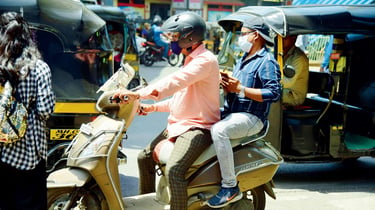

The Government of India has recently approved the use of bike taxis through aggregators, pending state government consent. This decision aims to support thousands of gig workers, particularly in Karnataka, where a recent ban had deprived many of their income. The flexibility of bike taxi work attracts individuals from economically disadvantaged backgrounds, including students and women re-entering the workforce post-pandemic. A study forecasts that gig workers in India could grow to 23 million by 2030, denoting the gig economy’s expanding role in the nation’s labour market.
About the Gig Economy
The gig economy refers to short-term, task-based work facilitated by digital platforms. Workers offer services ranging from driving to food delivery. They are often classified as self-employed, which impacts their rights and protections. The gig economy allows for flexible work arrangements, appealing to those seeking non-traditional employment.
Types of Gig Work
Gig work can be categorised into two types. Web-based gig work involves tasks performed online, such as digital marketing or software development. Location-based gig work requires physical presence, facilitated by platforms like Uber or Zomato. This dual nature marks the diverse opportunities within the gig sector.
Benefits and Challenges for Gig Workers
Gig work offers flexibility and the potential for higher earnings. Women particularly benefit from increased job opportunities, enabling them to balance work and home responsibilities. However, gig workers often face exploitation due to inadequate labour protections. They lack access to minimum wage guarantees, health benefits, and job security.
Labour Regulations and Gig Workers
India’s labour laws primarily recognise traditional employment categories, leaving gig workers unprotected. The introduction of new labour codes in 2020 aimed to address this gap by defining gig workers and proposing social security benefits. Yet, implementation has been inconsistent across states.
State Responses to Gig Work Issues
States like Rajasthan and Telangana have initiated legislation to protect gig workers. Rajasthan’s Act requires employers to contribute to a welfare fund for workers. Telangana’s draft bill mandates registration of gig workers and outlines their rights. These state-level efforts reflect a growing recognition of the need for protections in the gig economy.
Need for Comprehensive Protection
Despite advancements, a nationwide regulatory framework is essential for gig workers. Current classifications as self-employed obscure the realities of their work conditions. Policymakers must consider the socio-economic factors affecting gig workers and ensure they receive fair treatment, including minimum wage and social security.
Future of the Gig Economy
The gig economy represents shift in employment patterns. It offers opportunities but also poses challenges related to worker rights and protections. Addressing these issues is crucial for the sustainable growth of the gig sector.
(NNI / Latest news / Latest news india / India latest news/UPSC Preparation)
OBC Certificate Guidelines for Single Mothers Challenged
Latest News: 03rd July 2025, UPSC Preparation
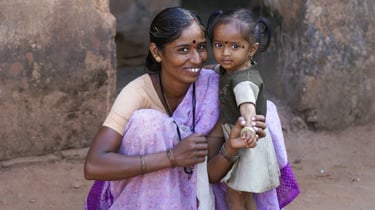

The Supreme Court of India addressed the issue of Other Backward Class (OBC) certificates for children of single mothers. A plea was filed by a single mother seeking an OBC certificate for her child, arguing that existing guidelines favour paternal lineage. This case raises questions regarding gender equality and the interpretation of caste laws under Articles 14 and 21 of the Constitution of India.
Background of the Case
The petitioner, a single mother with OBC status, approached the Supreme Court to challenge the Delhi Revenue Department’s guidelines. These guidelines require a paternal OBC certificate for children to inherit caste status. The petitioner contended that this requirement undermines her child’s rights to equality and personal liberty.
Legal Framework and Precedents
The Supreme Court’s 2012 judgment in Rameshbhai Dabhai Naika vs. State of Gujarat is very important. It ruled that children from inter-caste marriages generally inherit the father’s caste. However, the court acknowledged that such presumptions are not absolute. In cases of divorce or separation, a child raised by a mother from a Scheduled Caste or Scheduled Tribe can inherit her caste.
Previous Court Rulings
Different courts have interpreted the paternal lineage rule variably. In Rumy Chowdhury v. The Department of Revenue, the Delhi High Court upheld the rejection of a single mother’s request for a caste certificate for her children. The court stated that issuing such certificates could deprive genuine Scheduled Caste individuals of educational and employment opportunities.
Recent Developments
In 2024, the Gauhati High Court ruled in Smti. Moonsoon Barkakoti v. The State Of Assam that caste identity must consider lived experiences, not just paternal lineage. The court upheld the validity of an OBC certificate inherited from a mother, recognising the disadvantages faced by her children growing up.
Implications for Gender Equality
This case marks the ongoing struggle for gender equality in caste certification. The current guidelines are seen as discriminatory against single mothers. The Supreme Court’s decision could set a precedent for future cases, potentially reshaping the understanding of caste inheritance in India.
Public Response and Awareness
The case has sparked public debate on gender equality and the rights of single mothers. Advocacy groups are pushing for reforms in the caste certification process. They argue that the guidelines must evolve to reflect contemporary family structures and promote equality.
(NNI / Latest news / Latest news india / India latest news/UPSC Preparation)
India’s Progress Towards SDG 3
Latest News: 25th June 2025, UPSC Preparation
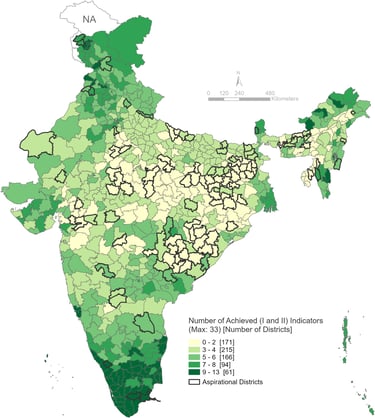

India has made strides in health under the United Nations’ Sustainable Development Goal 3 (SDG 3). This goal focuses on ensuring healthy lives and promoting well-being for all ages. Recent reports indicate that India is on track to achieve several health targets. Key indicators show improvements in maternal and child health, immunisation rates, and disease control.
Human Development Index Growth
India’s Human Development Index (HDI) has risen by over 53 per cent since 1990. This increase surpasses both global and South Asian averages. Economic growth and welfare initiatives like the National Rural Health Mission and Ayushman Bharat have driven this progress. As of 2023, life expectancy in India reached 72 years, the highest recorded since the HDI’s inception.
NITI Aayog’s SDG 3 Score
According to the NITI Aayog SDG Index, India’s score rose from 52 in 2018 to 77 in 2023. Several states have emerged as “front-runners” in health outcomes. Maternal mortality has decreased to 97 per 100,000 live births. States like Kerala and Tamil Nadu have already met the 2030 target of 70.
Child Health Improvements
Under-5 mortality rates have also improved, falling to 32 per 1,000 live births. Kerala leads with just 8 deaths. Child immunisation rates for ages 9 to 11 months reached 93.23%, with some states exceeding 100%. These advancements are crucial for enhancing child health across the nation.
Disease Control and Health Infrastructure
HIV incidence remains low at 0.05 per 1,000 uninfected individuals. Tuberculosis case notification has reached 87.13%, with states like Gujarat and Union Territories like Delhi surpassing national targets. Institutional deliveries have reached 97.18%, with Lakshadweep achieving 100%.
Ongoing Challenges
Despite these achievements, India faces challenges. Malnutrition remains prevalent, with 35 per cent of children under five stunted and 19 per cent wasted. Anaemia affects 67 per cent of under-five children and 57 per cent of women aged 15 to 49.
Rising Burden of Non-Communicable Diseases
Non-communicable diseases (NCDs) such as diabetes, hypertension, and cancer accounted for over 60 per cent of deaths in 2019. Experts warn that without effective prevention and early detection, the rising NCD burden could hinder progress towards SDG 3.
Strategic Recommendations for Future Progress
To meet SDG 3 targets by 2030, experts recommend an integrated approach. This includes expanding last-mile healthcare delivery, scaling up NCD screening and treatment, addressing nutritional deficiencies, investing in mental health, and increasing funding for primary healthcare. Bridging rural-urban divides and ensuring healthcare equity will be essential for success.
(NNI / Latest news / Latest news india / India latest news/UPSC Preparation)
WHO Guidelines for Sickle Cell Disease Management
Latest News: 21st June 2025, UPSC Preparation


The World Health Organization (WHO) has introduced its first global guideline for managing sickle cell disease (SCD) during pregnancy. This initiative addresses health challenge impacting both mothers and infants. SCD is characterised by crescent-shaped red blood cells that can obstruct blood flow, leading to severe health complications. The risks associated with SCD escalate during pregnancy, increasing the likelihood of maternal mortality and obstetric complications.
About Sickle Cell Disease
Sickle cell disease is an inherited blood disorder. It causes red blood cells to become rigid and shaped like sickles. This abnormality can lead to blockages in blood vessels. Symptoms include severe pain, anaemia, and increased susceptibility to infections. The prevalence of SCD is particularly high in malaria-endemic regions, with sub-Saharan Africa accounting for the majority of cases.
Risks During Pregnancy
Pregnancy poses heightened risks for women with SCD. These women face ly increased chance of maternal death compared to those without the condition. Complications such as pre-eclampsia and adverse outcomes for the baby, including stillbirth and low birth weight, are common. The WHO guideline aims to improve these outcomes through targeted care.
WHO Guidelines
The new WHO guidelines include over 20 evidence-based recommendations. Key areas of focus are folic acid and iron supplementation, management of pain crises, and prevention of infections. The guidelines also advocate for individualised care that respects the unique needs of each woman. Addressing stigma in healthcare settings is a critical component of the recommendations.
Importance of Multidisciplinary Care
The management of SCD in pregnancy requires a skilled healthcare team. This team may include haematologists, obstetricians, midwives, and paediatricians. Collaboration among these professionals ensures comprehensive care and informed decision-making for women with SCD.
Research and Development Needs
Sickle cell disease remains under-researched and underfunded, particularly in relation to pregnant and breastfeeding women. The WHO emphasises the need for more clinical trials to evaluate treatment safety and efficacy for these populations. This guideline is part of a broader initiative to address noncommunicable diseases in pregnancy.
Government Initiatives in India
In India, the government has launched the National Sickle Cell Anaemia Eradication Mission. This initiative aims to screen millions of individuals and develop new treatment options. A investment has been announced to support drug development for SCD, particularly benefiting tribal populations disproportionately affected by the disease.
Future Directions
The WHO’s guidelines mark the beginning of a series focused on managing chronic diseases in pregnancy. Future guidelines will cover various conditions, recognising the growing impact of chronic diseases on maternal and newborn health.
(NNI / Latest news / Latest news india / India latest news/UPSC Preparation)
Advanced Proton Therapy for Cancer Treatment
Latest News: 18th June 2025, UPSC Preparation


Recently, a team of experts in the United States achieved a breakthrough in cancer treatment. They successfully employed step-and-shoot spot-scanning proton arc therapy, known as SPArc, to treat adenoid cystic carcinoma. This innovative method precisely targets tumours while minimising damage to surrounding healthy tissue. The findings were published in the International Journal of Particle Therapy.
What is Proton Therapy?
Proton therapy is a type of radiation treatment that uses protons to irradiate cancer cells. Unlike traditional X-ray radiation, protons can be controlled more precisely. This allows for higher doses to be delivered to the tumour while sparing nearby healthy tissues.
The SPArc Technique
SPArc is a refined approach to proton therapy. It involves a step-and-shoot method where the treatment machine follows a pre-programmed pattern. This technique allows for the delivery of radiation in a more focused manner, reducing collateral damage to critical areas.
Comparison of Techniques
The research team compared SPArc with two other techniques – SFO-IMPT (the current standard of care) and fully dynamic SPArc. Results showed that SPArc reduced radiation exposure to critical structures. For example, radiation to the brainstem was reduced by 10% and to the optical chiasm by 56%.
Patient Experience
The first patient treated with SPArc was a 46-year-old woman with parotid-gland cancer. Over 33 sessions, she experienced only minor skin irritation and maintained her ability to eat and work. This marks the potential for improved quality of life during treatment.
Treatment Protocol
The treatment involved a sophisticated computer programme that identified optimal spots for proton delivery. Each session included a cone-beam computed tomography (CBCT) scan to track the doses delivered. Adjustments were made to account for weight loss and changes in tumour size during treatment.
Advantages of SPArc
SPArc is particularly beneficial for tumours located in complex anatomical areas, such as the skull base. It allows for precise dose delivery while minimising damage to surrounding tissues. This is crucial in head and neck cancers where critical organs are nearby.
Challenges and Considerations
Despite its advantages, SPArc and similar technologies come with challenges. The high cost of these treatments poses a financial burden on healthcare systems. Additionally, there is concern regarding their suitability for a limited patient population.
Future Developments
Fully dynamic SPArc is still under development and requires regulatory approval. Its potential to enhance treatment precision makes it an area of ongoing research and interest in oncology.
(NNI / Latest news / Latest news india / India latest news/UPSC Preparation)
Global Out-of-School Population
Latest News: 17th June 2025, UPSC Preparation

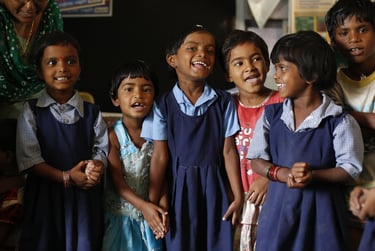
The latest report from UNESCO’s Global Education Monitoring Team marks rise in the global out-of-school population. As of 2025, the figure stands at 272 million, an increase of over 21 million from previous estimates. This alarming trend raises concerns about educational access and equity worldwide.
Key Statistics and Trends
The report indicates that 11% of primary school-age children, 15% of lower secondary adolescents, and 31% of upper secondary youths are out of school. The increase is attributed to two main factors – updated enrolment data and revised UN population estimates. New data reveals that 8 million of the increase stems from new enrolments, while 13 million is due to population adjustments.
Impact of Conflicts
Conflicts affect school enrolment and attendance. The report suggests that the impact of conflicts on out-of-school populations is often underestimated. Disruptions caused by conflicts hinder data collection, leading to inaccuracies in understanding the true scale of the issue. For instance, the Taliban’s ban on girls’ education in Afghanistan has left 1.4 million girls without schooling.
Methodological Approaches
The out-of-school model employs multiple data sources, including administrative records, surveys, and censuses. This approach aims to create consistent regional and global averages. However, the reliance on survey data means that only a portion of the increased school-age population is classified as out of school. Administrative data, on the other hand, can lead to a more increase in reported out-of-school figures.
Future Projections
Despite efforts to meet educational targets, the report forecasts that countries will be off-track by 75 million relative to their national goals by 2025. This deviation is particularly pronounced among primary and lower secondary school-age populations, with a projected shortfall of four percentage points. For upper secondary school-age youths, the shortfall is expected to reach six percentage points.
Challenges in Data Collection
The report emphasises that assumptions about stable school-age population trends can falter during emergencies. In times of crisis, attendance patterns may change abruptly, and data collection becomes increasingly difficult. This complicates the accurate assessment of school participation and can lead to underestimations of out-of-school populations.
(NNI / Latest news / Latest news india / India latest news/UPSC Preparation)
Agri Ministry to Launch CROPIC
Latest News: 16th June 2025, UPSC Preparation


The Ministry of Agriculture and Farmers Welfare in India is set to launch CROPIC, an innovative initiative aimed at enhancing crop monitoring and loss assessment. CROPIC stands for Collection of Real-Time Observations & Photo of Crops. This initiative is as it leverages artificial intelligence and crowd-sourced data to improve agricultural practices and financial support for farmers.
Overview of CROPIC
CROPIC is designed to gather comprehensive data on crop health through field photographs taken during the crop cycle. The initiative will initially focus on two seasons – kharif 2025 and rabi 2025-26. It aims to create a detailed directory of crop signatures that can be used for various agricultural assessments.
How CROPIC Functions
The CROPIC mobile application will be the primary tool for data collection. Farmers will take photographs of their crops using this app. The images will be analysed to determine the crop type, growth stage, and any damage that may have occurred. This crowd-sourced approach allows for real-time data collection directly from the field.
AI Integration and Analysis
CROPIC employs an AI-based cloud platform for analysing the collected photographs. This technology will facilitate the extraction of vital information regarding crop health. A web-based dashboard will provide visualisation of the data, making it accessible for farmers and officials alike.
Purpose and Benefits
The primary purpose of CROPIC is to support the Pradhan Mantri Fasal Bima Yojana (PMFBY). The initiative will automate the assessment of crop losses and the subsequent disbursement of compensation to farmers. By using computer vision technology, CROPIC aims to enhance financial resilience among farmers.
Implementation Timeline
The project will commence with pilot studies in at least 50 districts, selected to represent various agro-climatic zones. These districts will cover three major notified crops for each season. The government plans to roll out CROPIC nationwide by 2026, encompassing all crops notified under PMFBY.
Funding for CROPIC
CROPIC will be funded through the Fund for Innovation and Technology (FIAT), which has an allocation of Rs 825 crore for technological innovations in crop insurance. This financial backing will support the development and implementation of the initiative.
(NNI / Latest news / Latest news india / India latest news/UPSC Preparation)
Nari Shakti Vandan Adhiniyam
Latest News: 15th June 2025, UPSC Preparation

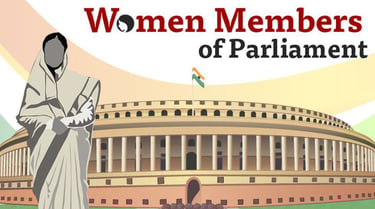
The Government of India is preparing to implement change in the political landscape by rolling out a reservation of seats for women in the Lok Sabha and state assemblies. This initiative, known as the Nari Shakti Vandan Adhiniyam, is closely tied to the delimitation exercise that will follow the upcoming Census. The aim is to ensure that one-third of the seats are reserved for women in the 2029 Lok Sabha elections.
Context of Women’s Reservation
The Nari Shakti Vandan Adhiniyam was passed in September 2023. It mandates that one-third of seats in the Lok Sabha and state assemblies will be reserved for women. This reservation will only come into effect after a delimitation exercise based on the Census data. The Census is set to provide critical demographic information required for this process.
Importance of the Census
The upcoming Census will be conducted digitally, utilising mobile applications for data collection. It is expected to provide timely data, which will be crucial for delimitation. The Census aims to capture the population as of March 1, 2027, and will include caste enumeration. This data will help readjust the seats in the Lok Sabha and state assemblies.
Delimitation Process
Delimitation involves redrawing the boundaries of electoral constituencies. This process is mandated by Article 82 of the Constitution of India, which requires readjustment of seats after every Census. The last delimitation was based on the 1971 Census, and the current Lok Sabha reflects outdated population figures.
Concerns from Southern States
Southern states have expressed concerns regarding the potential impact of delimitation on their representation in the Lok Sabha. These states fear that increased seats for northern states could diminish their relative power. The government has assured that no southern state will lose seats on a pro-rata basis.
Legislative Requirements for Delimitation
For delimitation to occur following the next Census, Parliament must pass a Delimitation Act. This Act will establish a Delimitation Commission to oversee the process. If no new amendment is passed by 2026, the current freeze on delimitation will automatically end, allowing for adjustments based on population growth.
Constitutional Provisions
Article 81(2)(a) of the Constitution stipulates that the allocation of seats should maintain a ratio between state populations and the number of seats. This provision aims to ensure fair representation across states. Exceptions apply only to smaller states with populations below six million.
(NNI / Latest news / Latest news india / India latest news/UPSC Preparation)
Global Displacement Crisis
Latest News: 14th June 2025, UPSC Preparation
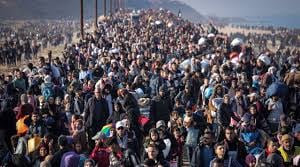

The global displacement crisis has reached alarming levels as of April 2025. The United Nations High Commissioner for Refugees (UNHCR) reported that 122.1 million people are forcibly displaced worldwide. This figure marks the urgent need for international attention and support. Despite a slight decrease in numbers from the previous year, the overall situation remains critical.
Current Displacement Statistics
By April 2025, the number of forcibly displaced people rose by 2.1 million compared to the previous year. The total of 122.1 million includes refugees and internally displaced persons (IDPs). In 2024, the total peaked at 123.2 million. The ongoing conflicts in various regions continue to drive these numbers higher.
Major Drivers of Displacement
Conflicts in countries such as Sudan, Myanmar, and Ukraine remain the primary causes of displacement. Sudan has overtaken Syria as the country with the most displaced individuals, recording 14.3 million. Syria follows closely with 13.5 million displaced. Other contributors include Afghanistan with 10.3 million and Ukraine with 8.8 million.
Internally Displaced Persons (IDPs)
The number of IDPs has surged, reaching 73.5 million by the end of 2024. This indicates that 60% of those forced to flee do not cross international borders. The report marks that proportion of refugees, about 67%, reside in neighbouring countries.
Refugee Hosting Countries
Low and middle-income nations host the majority of refugees. The largest populations are found in Iran (3.5 million), Turkey (2.9 million), Colombia (2.8 million), Germany (2.7 million), and Uganda (1.8 million). This challenges the perception that wealthier nations are the primary destinations for refugees.
Trends in Return Migration
Despite the challenges, there have been positive developments. Nearly 2 million Syrians returned home in the last six months, marking trend in return migration. Overall, 9.8 million displaced individuals returned in 2024, including both refugees and IDPs.
Funding Challenges
The UNHCR faces severe funding shortfalls. Many countries have reduced their financial contributions, impacting humanitarian efforts. The report calls for renewed international commitment to support UNHCR programs. It emphasises that funding is essential for regional and global stability.
(NNI / Latest news / Latest news india / India latest news/UPSC Preparation)
New SARS-CoV-2 Variant XFG
Latest News: 13th June 2025, UPSC Preparation
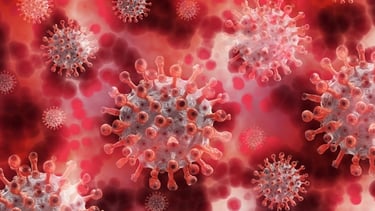

The emergence of the XFG variant of SARS-CoV-2 has raised concerns in India. As of June 2025, 163 cases have been reported, primarily in Maharashtra. The total number of active COVID-19 cases in India stands at 6,815, with three deaths recorded in the last 24 hours. The Indian SARS-CoV-2 Genomics Consortium has confirmed the presence of this new variant.
About the XFG Variant
The XFG variant is a recombinant strain. It results from the merging of two earlier strains, LF.7 and LP.8.1.2. This variant carries four mutations in the spike protein. It has shown rapid global spread since its initial detection in Canada. The variant is a descendant of the Omicron sub-variant.
Geographical Distribution
Maharashtra has reported the highest number of cases at 89. Other states with notable cases include Tamil Nadu (16), Kerala (15), Gujarat (11), and Andhra Pradesh, Madhya Pradesh, and West Bengal (six each). A new case has also been confirmed in Telangana.
Clinical Characteristics
The XFG variant appears to cause mild upper respiratory symptoms. This is particularly true for vaccinated individuals or those who have had previous COVID-19 infections. Current data indicates that 66% of respiratory viral infections in India are COVID-related. Hospitalisation rates remain low, even among high-risk populations.
Comparison with JN.1 Variant
The XFG variant differs from the JN.1 variant, which is a sub-lineage of Omicron BA.2.86. The JN.1 variant has been linked to a rise in cases across Asia. It carries around 30 mutations and has been detected in several countries. The World Health Organization has classified JN.1 as a variant of interest but has not yet done so for XFG.
Government Response
In response to the rising cases, the Union Health Ministry is conducting mock drills to assess preparedness. States have been instructed to ensure the availability of oxygen, isolation beds, and essential medicines. Most cases are mild and managed at home. Surveillance units are closely monitoring influenza-like illnesses and severe acute respiratory illnesses.
Current COVID-19 Statistics
As of now, India has reported a total of 65 deaths since January 2025. The number of active patients was lower in late May, with only 257 cases reported. Continuous monitoring and genome sequencing of positive samples are underway to track the variant’s spread.
(NNI / Latest news / Latest news india / India latest news/UPSC Preparation)
2025 State of World Population Report
Latest News: 12th June 2025, UPSC Preparation

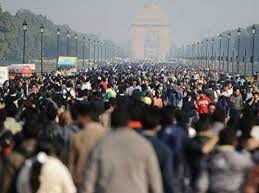
The 2025 State of World Population Report by the United Nations Population Fund (UNFPA) marks reproductive challenges in India. The report, titled “The Real Fertility Crisis,” reveals that a substantial portion of the population faces unintended pregnancies and unfulfilled desires regarding family size. The findings indicate that the focus should shift from concerns about population size to addressing unmet reproductive goals.
About Unintended Pregnancies
Unintended pregnancies affect 36% of adult Indians. Many individuals do not have the means to achieve their desired family size. This marks a lack of reproductive autonomy. Financial barriers are the most obstacles. Nearly 40% of respondents cited financial limitations as a primary reason for not having the families they want.
Barriers to Reproductive Autonomy
The report identifies various barriers to reproductive choices. Job insecurity affects 21% of individuals. Housing constraints and lack of reliable childcare are also major concerns. Health issues, including poor wellbeing and infertility, further complicate reproductive decisions. Additionally, societal pressures influence family planning, with 19% of people feeling compelled to have fewer children than they desire.
Fertility Rates and Regional Disparities
India’s total fertility rate (TFR) has reached replacement level at 2.0. However, regional disparities persist. States like Bihar, Meghalaya, and Uttar Pradesh still exhibit high fertility rates. In contrast, states such as New Delhi and Kerala have maintained below-replacement fertility. This duality reflects economic opportunities, healthcare access, and social norms.
Adolescent Fertility Concerns
India’s adolescent fertility rate remains concerning at 14.1 per 1,000 women aged 15–19. This is higher than in countries like China and Sri Lanka. High adolescent fertility poses risks to maternal and child health and hinders educational and employment prospects for young women.
Modern Challenges in Family Planning
The report discusses modern challenges affecting reproductive decisions. Issues such as loneliness, shifting relationship dynamics, and social stigma complicate family planning. Rising expectations around parenting further pressure women, reinforcing unequal caregiving responsibilities.
Societal Implications and Recommendations
The report calls for a rights-based approach to reproductive health. Expanding access to sexual and reproductive health services is essential. This includes universal access to contraception, safe abortion, and maternal health care. Addressing structural barriers through investments in childcare and education is crucial. Promoting inclusive policies for marginalised groups will also enhance reproductive autonomy.
Data and Accountability
Improving data collection is vital to understanding and addressing unmet family planning needs. Current metrics often focus solely on fertility rates. A broader approach should measure bodily autonomy and reproductive rights.
(NNI / Latest news / Latest news india / India latest news/UPSC Preparation)
Growth of Gig Workforce in India by 2047
Latest News: 11th June 2025, UPSC Preparation
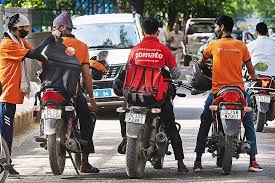

India faces threat from extreme heat, impacting a large portion of its population. A recent study by the Council on Energy, Environment and Water revealed that approximately 76% of Indians are at high to very high risk from extreme heat. This risk is particularly acute in states like Delhi, Maharashtra, and Tamil Nadu. The study, published on May 20, 2025, developed a heat risk index to assess the situation across 734 districts based on various indicators.
About Heat Risk
Heat risk refers to the probability of experiencing heat-related illnesses or death due to extreme temperatures. It differs from heatwaves, which are prolonged periods of high temperatures, and heat stress, which occurs when body temperature exceeds safe levels. Heat risk is influenced by temperature intensity, exposure duration, and community vulnerabilities.
Factors Driving Heat Risk
Several factors contribute to the rising heat risk in India:
Increase in Very Warm Nights: Between 2012 and 2022, districts reported an increase in very warm nights, which hinder the body’s ability to cool down after hot days. Over 70% of districts experienced five or more additional very warm nights each summer.
Rising Relative Humidity: The relative humidity in North India has increased , particularly in the Indo-Gangetic Plain. This rise complicates the body’s cooling process, exacerbating heat stress during peak summer months.
High Population Density: Urban areas with high population density, such as Mumbai and Delhi, are more exposed to extreme heat. Rapid urbanisation in tier II and III cities has led to the emergence of concrete structures that trap heat, further increasing local temperatures.
Socio-Economic Vulnerabilities: Districts with a higher prevalence of non-communicable diseases and a larger elderly population are more susceptible to heat-related health risks. States like Andhra Pradesh and Uttar Pradesh face compounded vulnerabilities due to socio-economic factors.
Significance of Current Trends
The year 2024 was marked as the warmest on record globally, with India experiencing a temperature rise of about 1.2 degrees Celsius above pre-industrial levels. The country recorded its longest heatwave since 2010, resulting in over 44,000 heatstroke cases. Current heat action plans in Indian cities are insufficient and lack long-term strategies to address extreme heat effectively. This inadequacy could lead to increased heat-related fatalities in the future.
Future Implications
The ongoing rise in temperatures and humidity levels signifies an urgent need for improved heat action plans. Effective strategies must be implemented to mitigate the health risks associated with extreme heat. Without adequate measures, India could face escalating challenges in public health and urban management due to climate change.
(NNI / Latest news / Latest news india / India latest news/UPSC Preparation)
Extreme Heat Risk in India
Latest News: 09th June 2025, UPSC Preparation


India faces threat from extreme heat, impacting a large portion of its population. A recent study by the Council on Energy, Environment and Water revealed that approximately 76% of Indians are at high to very high risk from extreme heat. This risk is particularly acute in states like Delhi, Maharashtra, and Tamil Nadu. The study, published on May 20, 2025, developed a heat risk index to assess the situation across 734 districts based on various indicators.
About Heat Risk
Heat risk refers to the probability of experiencing heat-related illnesses or death due to extreme temperatures. It differs from heatwaves, which are prolonged periods of high temperatures, and heat stress, which occurs when body temperature exceeds safe levels. Heat risk is influenced by temperature intensity, exposure duration, and community vulnerabilities.
Factors Driving Heat Risk
Several factors contribute to the rising heat risk in India:
Increase in Very Warm Nights: Between 2012 and 2022, districts reported an increase in very warm nights, which hinder the body’s ability to cool down after hot days. Over 70% of districts experienced five or more additional very warm nights each summer.
Rising Relative Humidity: The relative humidity in North India has increased , particularly in the Indo-Gangetic Plain. This rise complicates the body’s cooling process, exacerbating heat stress during peak summer months.
High Population Density: Urban areas with high population density, such as Mumbai and Delhi, are more exposed to extreme heat. Rapid urbanisation in tier II and III cities has led to the emergence of concrete structures that trap heat, further increasing local temperatures.
Socio-Economic Vulnerabilities: Districts with a higher prevalence of non-communicable diseases and a larger elderly population are more susceptible to heat-related health risks. States like Andhra Pradesh and Uttar Pradesh face compounded vulnerabilities due to socio-economic factors.
Significance of Current Trends
The year 2024 was marked as the warmest on record globally, with India experiencing a temperature rise of about 1.2 degrees Celsius above pre-industrial levels. The country recorded its longest heatwave since 2010, resulting in over 44,000 heatstroke cases. Current heat action plans in Indian cities are insufficient and lack long-term strategies to address extreme heat effectively. This inadequacy could lead to increased heat-related fatalities in the future.
Future Implications
The ongoing rise in temperatures and humidity levels signifies an urgent need for improved heat action plans. Effective strategies must be implemented to mitigate the health risks associated with extreme heat. Without adequate measures, India could face escalating challenges in public health and urban management due to climate change.
(NNI / Latest news / Latest news india / India latest news/UPSC Preparation)
The Exposome Approach to End Plastic Pollution
Latest News: 08th June 2025, UPSC Preparation


World Environment Day,2025 marks the urgent need to tackle plastic pollution. Microplastics pose severe health risks that remain largely unmeasured. This challenge is compounded by India’s rapid economic growth. The country faces environmental disease burden, accounting for nearly 25% of global cases. Innovative approaches are essential for effective environmental management and public health.
About Environmental Disease Burden
The World Health Organization began assessing the environmental disease burden in 2000. This assessment identifies key risk factors contributing to health issues. Recent data indicates that environmental and occupational risks lead to 18.9% of global deaths. Major contributors include air pollution and household emissions from solid fuels. In India, occupational and environmental health risks account for millions of deaths annually.
The Role of Exposomics
Exposomics studies the totality of environmental exposures throughout a person’s life. This concept emerged as a complement to the human genome project. Traditional methods often overlook the complex interactions of multiple exposures. Exposomics aims to fill this gap by integrating various factors influencing health. It considers physical, chemical, and psychosocial environments alongside genetics.
The Need for Integrated Health Risk Assessments
Current environmental health assessments are limited in scope. They often neglect numerous risk factors, including microplastics and environmental noise. These omissions lead to an underestimation of the health impacts. A comprehensive approach is necessary to understand how various exposures interact over a lifetime. This understanding is vital for developing effective prevention strategies.
Climate Change and Health Risks
Climate change exacerbates existing environmental hazards. It influences air quality, food security, and mental health. The interplay between climate factors and health risks is complex. For instance, heatwaves can worsen air pollution and increase vulnerability to diseases. Addressing these interconnected issues is crucial for public health.
Advancements in Data and Technology
The exposome framework requires advanced technologies for data collection. Real-time monitoring and big data analytics are essential. These tools can enhance our understanding of exposure impacts on health. Creating a robust data ecosystem is critical for effective research and intervention strategies.
Mainstreaming Environmental Health
Integrating exposomics into public health programmes is vital. This approach can lead to more accurate predictive models for chronic diseases. Investments in infrastructure and capacity building are necessary. By leveraging technology, India can improve its environmental health management .
Future Directions
As the focus on environmental health grows, the exposome project presents a valuable opportunity. It offers a framework to address health inequities and promote better health outcomes. The future of public health may depend on how well we integrate environmental factors into health assessments.
(NNI / Latest news / Latest news india / India latest news/UPSC Preparation)
Waste Picker Enumeration App
Latest News: 06th June 2025, UPSC Preparation
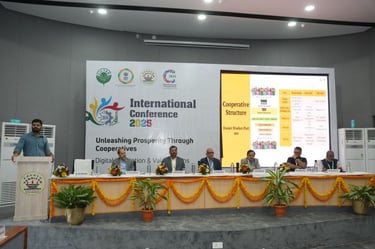

World Environment Day, was marked by initiative from the Ministry of Social Justice and Empowerment (MoSJE) in India. The launch of the Waste Picker Enumeration App under the NAMASTE Scheme aims to profile and empower Waste Pickers across the country. This event brought into light the government’s commitment to environmental justice and worker dignity. The initiative is part of a broader strategy to integrate Waste Pickers into India’s circular economy, providing them with formal recognition and essential support.
About NAMASTE Scheme
The NAMASTE Scheme stands for National Action for Mechanised Sanitation Ecosystem. It is a joint initiative by the MoSJE and the Ministry of Housing and Urban Affairs (MoHUA). The scheme aims to ensure the dignity and safety of sanitation workers in urban areas while promoting sustainable livelihoods. Launched in 2022, it will be implemented until 2026 across 500 cities.
Objectives of the NAMASTE Scheme
The primary objectives include achieving zero fatalities among sanitation workers, ensuring skilled workers perform all sanitation tasks, and providing sanitation workers with alternative livelihood opportunities. The scheme also aims to collectivise workers into Self-Help Groups (SHGs) to empower them in managing sanitation enterprises.
Key Components of the Scheme
The NAMASTE Scheme includes several crucial components. Firstly, it extends health insurance coverage under Ayushman Bharat to sanitation workers and their families. Secondly, it promotes livelihood assistance by offering counselling and training for alternative skills. Thirdly, it provides capital subsidies for sanitation machinery, making it easier for workers to access necessary tools.
Waste Picker Enumeration App Details
The Waste Picker Enumeration App is designed to profile Waste Pickers under the expanded NAMASTE Scheme. It aims to enumerate 2.5 lakh individuals, granting them formal identity and access to social protection. This includes issuing occupational photo ID cards and providing health insurance, personal protective equipment, and skill development opportunities.
Impact on Waste Pickers
By recognising Waste Pickers as vital contributors to urban sanitation, the government aims to improve their working conditions and livelihood security. The initiative will strengthen Waste Picker collectives to manage Dry Waste Collection Centres, enhancing their role in urban waste management.
Knowledge Products Released
During the launch event, two knowledge products were introduced. The ‘Resource Guide’ focuses on mainstreaming Waste Picker collectives as service delivery partners. Meanwhile, ‘Charting Change’ offers socio-economic vital information about India’s sanitation workforce from 2023 to 2025. These resources aim to educate and inform stakeholders about the importance of Waste Picker integration.
(NNI / Latest news / Latest news india / India latest news/UPSC Preparation)
District De-Addiction Centres
Latest News: 05th June 2025, UPSC Preparation
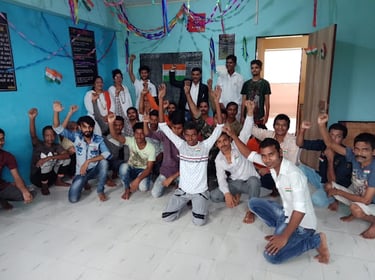

The Government of India is taking steps to combat substance abuse by establishing District De-Addiction Centres (DDACs) in 291 identified gap districts. These districts lack adequate infrastructure for treating and rehabilitating individuals struggling with substance dependence. This initiative is part of the National Action Plan for Drug Demand Reduction, spearheaded by the Ministry of Social Justice and Empowerment.
District De-Addiction Centres
DDACs will serve as treatment and rehabilitation centres. Each centre will include administrative space, treatment facilities, and areas for outreach programmes. The capacity of these centres will accommodate either 15 or 30 patients at a time. Specific norms will govern their operations to ensure effective treatment.
Support and Infrastructure
The government supports various initiatives under its national action plan. This includes Integrated Rehabilitation Centres for Addicts (IRCAs), Community-based Peer Led Initiatives (CPLIs), and Outreach and Drop-in Centres (ODICs). Currently, the Ministry supports 350 IRCAs, 74 ODICs, 46 CPLIs, and 124 DDACs.
Recent Survey and Substance Use Data
The Ministry is preparing for a nationwide survey to evaluate the extent and pattern of substance use in India. Previous surveys estimated approximately 1.18 crore children and adolescents and about seven crore adults using various psychoactive substances. This data will help tailor interventions for specific communities.
Role of NGOs and Start-ups
The government has invited proposals from eligible NGOs and start-ups with at least two years of experience in drug de-addiction treatment. Proposals must be submitted by June 30. These organisations will conduct awareness programmes and engage in risk mitigation activities, particularly targeting vulnerable populations.
Focus on Prevention and Education
DDACs will focus on primary prevention activities. This includes raising awareness among communities at risk, identifying peer educators, and implementing early prevention education. The goal is to prevent substance use and refer affected individuals to rehabilitation centres.
Gap Districts
Chhattisgarh has the highest number of gap districts, with 31 out of 33 districts identified. Other states with numbers include Madhya Pradesh, Gujarat, and Bihar. This distribution marks the urgent need for targeted interventions in these regions.
(NNI / Latest news / Latest news india / India latest news/UPSC Preparation)
Rising Cancer Rates Linked to Air Pollution in India
Latest News: 04th June 2025, UPSC Preparation


India faces a growing cancer epidemic, with air pollution emerging as factor. Recent studies show an alarming increase in lung cancer cases, especially among non-smokers. The Indian Council of Medical Research predicts that cancer cases will rise from 1.46 million in 2022 to 1.57 million in 2025. This trend raises concerns about the health impacts of air quality in the country.
Cancer Burden in India
Cancer is the second leading cause of death from non-communicable diseases in India. One in nine Indians is expected to be diagnosed with cancer in their lifetime. Lung cancer ranks among the most prevalent cancers in both men and women. Recent data indicates a shift in demographics, with a growing number of lung cancer patients being non-smokers.
Shift in Lung Cancer Patterns
Traditionally, lung cancer was linked to smoking. However, doctors report up to 30% of current lung cancer cases in India occur in non-smokers. Studies from Chennai show that non-smoking cases increased from 40% to over 55% in recent years. The histological types of lung cancer also differ. Non-smokers often present with adenocarcinoma, while smokers typically have squamous cell carcinoma.
Role of Air Pollution
Air pollution is classified as a Group 1 carcinogen, with strong evidence linking it to lung cancer. In 2024, India was identified as the fifth most polluted country globally. The average PM 2.5 concentration in India is above World Health Organization recommendations. Experts assert that while the correlation between air pollution and lung cancer is evident, more data is needed to establish causation.
Challenges in Diagnosis and Treatment
Lung cancer diagnosis in India often occurs at advanced stages due to nonspecific symptoms. Many healthcare professionals initially suspect tuberculosis, delaying cancer identification. Consequently, most patients present with late-stage disease, severely impacting survival rates. Although diagnostic facilities have improved, access remains limited, particularly in rural areas.
The Way Forward
There is an urgent need for comprehensive research on the links between air pollution and cancer in India. Experts advocate for multi-sectoral approaches to combat outdoor air pollution. The Northeast region presents an opportunity for intervention due to its relatively cleaner environment. Measures must focus on reducing both outdoor and indoor air pollution to mitigate the rising cancer burden.
(NNI / Latest news / Latest news india / India latest news/UPSC Preparation)
Global Glacier Melting Accelerates Amid Climate Crisis
Latest News: 02nd May 2025, UPSC Preparation


Recent studies indicate that glaciers are melting faster than anticipated. This alarming trend coincides with the first United Nations conference on glaciers held in Tajikistan. The research suggests that limiting global warming to 1.5°C can preserve glacier ice compared to current trajectories. If climate policies remain unchanged, the world could warm by 2.7°C, leading to catastrophic glacier loss.
Current State
Glaciers are retreating globally. A study involving 21 scientists from ten countries assessed over 200,000 glaciers. Even with stable temperatures, glaciers are projected to lose approximately 39% of their ice mass by 2100. The situation worsens with rising temperatures.
Impact of Temperature Increases
At a 2.7°C increase, only 24% of glacier ice may remain. In contrast, limiting warming to 1.5°C could preserve around 54%. Regions such as the European Alps and the Western Rockies may lose nearly 90% of their ice at 2°C.
Regional Focus – Asia
The Hindu Kush Himalaya, crucial for over two billion people, may retain only 25% of its glacier mass at 2°C. This figure could improve to 40-45% with effective climate action. The implications are dire for food and water security in Asia.
Consequences of Glacier Loss
Melting glaciers threaten the livelihoods of millions. The Asian Development Bank warns that urgent steps are necessary to mitigate risks of floods and droughts. Transitioning to clean energy is vital for reducing emissions and slowing glacial melt.
Long-term Effects of Warming
Glacier loss continues for centuries, even after temperatures stabilise. Initially, glaciers melt rapidly, then retreat gradually. Their slow response to warming complicates recovery efforts.
Global Response and Action
The UN conference brought into light the need for immediate global action. Over 50 countries participated, emphasising the importance of cooperation. Mobilising financial resources for vulnerable populations is critical for adapting to the changing climate.
The Role of Glaciers in Climate Indicators
Glaciers serve as indicators of climate change. Their retreat visually demonstrates the impacts of warming. However, the current situation is more severe than visible changes suggest.
(NNI / Latest news / Latest news india / India latest news/UPSC Preparation)
India’s Crackdown on Illegal Immigration and Document Fraud
Latest News: 31st May 2025, UPSC Preparation


The Government of India is intensifying efforts to combat illegal immigration. The Ministry of Home Affairs (MHA) has mandated states and Union Territories to verify the citizenship status of individuals applying for essential documents. This initiative aims to prevent foreigners from fraudulently obtaining Indian identification and benefits.
Background of the Crackdown
The push for stricter immigration controls follows growing concerns about illegal immigrants, particularly from Bangladesh and Myanmar. These individuals have reportedly obtained Indian documents through fraudulent means. The MHA’s initiative is part of a broader strategy to enhance national security and maintain the integrity of citizen benefits.
Verification Process
States and Union Territories are required to check applicants against a central database before issuing Aadhaar cards, voter IDs, and ration cards. A 30-day deadline has been set for verifying the credentials of suspected illegal immigrants. Failure to verify will result in deportation.
Integrated Database Access
Authorities will gain access to an integrated server that includes three key databases – the Immigration Visa Foreigner Registration Tracking (IVFRT) system, the Foreigners Identification Portal (FIP), and the Indo-Myanmar Border (IMB) pass system. This integration is crucial for cross-referencing applicants’ details with immigration records.
Consequences of Fraudulent Applications
The MHA has brought into light the risks associated with fraudulent document procurement. Individuals found to have obtained Indian documents through deceit will have their benefits revoked. Agencies must share information about these cases to ensure comprehensive enforcement.
Public Awareness and Compliance
The MHA’s directive aims to raise awareness among state authorities regarding the importance of verifying citizenship status. Compliance is crucial to prevent misuse of social benefits intended for Indian citizens. The initiative seeks to encourage a sense of accountability among document-issuing authorities.
(NNI / Latest news / Latest news india / India latest news/UPSC Preparation)
WMO’s Climate Change Warning
Latest News: 30th May 2025, UPSC Preparation
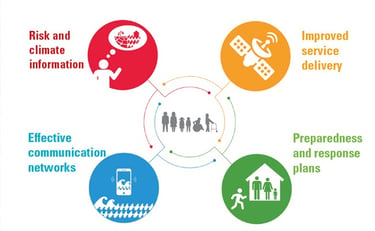

The World Meteorological Organization (WMO) has issued a critical warning regarding climate change. A recent report indicates a 70% likelihood that global temperatures will exceed the 1.5°C threshold above pre-industrial levels between 2025 and 2029. This alarming forecast comes as many countries are yet to submit their climate action plans for the next decade. The urgency for effective climate strategies has never been greater.
About the Temperature Threshold
The 1.5°C threshold was established at the Paris Agreement in 2015. It aims to limit the most severe impacts of climate change. Breaching this limit will lead to extreme weather events and ecological disruptions. The WMO report predicts that the annual average global near-surface temperature from 2025 to 2029 will be between 1.2°C and 1.9°C higher than the 1850-1900 average.
Recent Climate Trends
The year 2024 was recorded as the hottest year to date, surpassing the 1.5°C mark. The WMO forecasts an 80% chance that at least one of the next five years will exceed this record. Furthermore, there is a slim 1% chance of a year exceeding a 2°C increase in the same timeframe. Such trends highlight the urgency of climate monitoring and informed decision-making.
Impacts of Climate Change
Rising temperatures will have dire consequences. Increased heatwaves, extreme rainfall, and droughts are expected. Melting ice sheets and rising sea levels will threaten coastal communities. The WMO’s predictions indicate that Arctic warming will be over 3.5 times the global average, exacerbating these issues.
Regional Climate Predictions
The report also outlines regional climate expectations. The Sahel region in Africa, Northern Europe, Alaska, and northern Siberia are likely to experience wetter-than-average conditions. In contrast, the Amazon may face drier conditions. South Asia, which has been wetter than average recently, is expected to continue this trend until 2029, although individual monsoon seasons may vary.
Importance of Climate Monitoring
Continuous climate monitoring is essential. It provides decision-makers with the necessary data to adapt to the changing climate. The WMO emphasises that science-based tools are vital for effective climate strategies. Without these measures, the negative impacts on economies, ecosystems, and daily life will intensify.
(NNI / Latest news / Latest news india / India latest news/UPSC Preparation)
India’s Digital Addressing System
Latest News: 29th May 2025, UPSC Preparation


The Department of Posts, part of the Ministry of Communications, recently revealed two innovative digital platforms – ‘Know Your DIGIPIN’ and ‘Know Your PIN Code’. This launch aligns with the National Geospatial Policy 2022, aiming to enhance India’s addressing system and geospatial governance. These platforms represent leap in modernising public service delivery.
Know Your DIGIPIN Web Application
The DIGIPIN (Digital Postal Index Number) is a geo-coded, grid-based address system. Developed in collaboration with IIT Hyderabad and NRSC, ISRO, it aims to offer Address-as-a-Service (AaaS).
Users can retrieve their DIGIPIN by entering precise geolocation coordinates.
This platform enhances logistics, emergency response, and last-mile delivery, particularly in rural areas.
The system is now available for integration by various government entities and private organisations.
It promotes the use of Geographic Information Systems (GIS) capabilities, ensuring accurate service delivery and reducing emergency response times.
The technical documentation and source code are available on GitHub for public collaboration.
Know Your PIN Code Web Application
The traditional six-digit PIN Code system, established in 1972, has been updated to improve geographic accuracy. A national geofencing exercise has geo-referenced all PIN Code boundaries. The ‘Know Your PIN Code’ application allows users to identify the correct PIN Code based on their location. It also enables users to provide feedback on PIN Code accuracy, facilitating continuous improvement of the dataset. The updated geo-fenced boundaries are accessible on the Open Government Data Platform.
Digital Transformation and Governance
The launch of these applications signifies a commitment to digital transformation and precision governance. Ms. Vandita Kaul, Secretary of the Department of Posts, emphasised that DIGIPIN will ensure every citizen is digitally locatable. This initiative positions the Department of Posts as a vital enabler of Digital Public Infrastructure (DPI) in India.
Public Participation and Improvement
The Department of Posts encourages public participation in refining these platforms. Users can submit feedback on data accuracy and system usability. This approach aims to enhance the reliability of digital addressing across India, making the solutions responsive to local needs.
(NNI / Latest news / Latest news india / India latest news/UPSC Preparation)
Bharat Forecast System
Latest News: 28th May 2025, UPSC Preparation
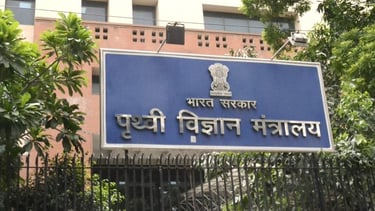

The Bharat Forecast System was launched by Union Minister of Earth Sciences Dr. Jitendra Singh in 2025. This system represents one of the world’s first indigenously developed high-resolution weather forecast solutions. It aims to enhance the precision of weather predictions in India, contributing to the nation’s economic growth and resilience against climate challenges.
Overview of the Bharat Forecast System
The Bharat Forecast System improves weather prediction resolution from 12 km to 6 km. This enhancement allows for precise and location-specific forecasts for every village in India. Developed by the Indian Institute of Tropical Meteorology (IITM) in Pune, this system is advancement in India’s meteorological capabilities.
Economic Implications
As India aspires to become the world’s largest economy, accurate weather forecasting is crucial. The Bharat Forecast System aims to reduce potential losses in agriculture and other sectors. By providing timely and precise forecasts, it supports economic stability and growth.
Women in Science
The project is notably led by four women scientists, aligning with Prime Minister Narendra Modi’s vision of empowering women in science. This initiative marks the increasing role of women in scientific advancements and leadership positions.
Nationalistic Approach
The Bharat Forecast System embodies the spirit of Atmanirbhar Bharat and Make in India. It showcases India’s capability to develop indigenous technology that serves its citizens. The system also aims to assist other tropical regions facing complex weather challenges.
Technological Innovations
The system employs advanced real-time modelling techniques, including the Triangular Cubic Octahedral Grid model. This technology enhances the accuracy of extreme weather predictions, with a reported 30% improvement in extreme rainfall forecasts.
Impact on Agriculture
Improved weather forecasting is expected to benefit the agricultural sector. By reducing crop loss and anomalies through better extreme weather predictions, farmers can make informed decisions and mitigate risks associated with climate variability.
Government Commitment
The Government of India has shown a strong commitment to enhancing weather forecasting capabilities. Initiatives like Mission Mausam, with a budget of ₹2000 crore, aim to upgrade climate forecasting infrastructure, reinforcing the importance of accurate weather services for over 20 ministries.
(NNI / Latest news / Latest news india / India latest news/UPSC Preparation)
Yashoda AI
Latest News: 26th May 2025, UPSC Preparation
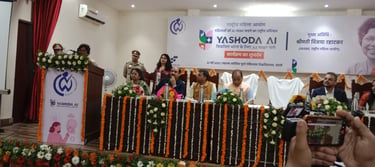

The recently launched Yashoda AI – Your AI SAKHI aims to enhance women’s literacy in artificial intelligence and digital awareness. Spearheaded by the National Commission for Women (NCW), it targets women from rural and semi-urban areas. The programme aligns with India’s vision of a Viksit Bharat, promoting technology and inclusion.
Objectives of Yashoda AI
Yashoda AI seeks to empower women by providing essential skills in artificial intelligence, cybersecurity, and digital safety. The initiative aims to encourage digital literacy and self-reliance among women. It encourages active participation in discussions about AI-related crimes and digital privacy.
Community Engagement
The initiative promotes community-driven digital education. It actively involves students, educators, and policewomen. This engagement ensures that women are not just learners but also leaders in the digital space. The programme aims to create a supportive environment for women to thrive in technology.
Importance of Digital Literacy
Digital literacy is crucial in ‘s technology-driven world. Yashoda AI focuses on equipping women with the knowledge to navigate the digital landscape confidently. This includes understanding digital safety and the implications of AI on society. The initiative aims to prepare women for the challenges posed by the digital age.
Collaboration with Future Shift Labs
Yashoda AI is a collaboration between NCW and Future Shift Labs (FSL). FSL is known for its work on ethical technology deployment. This partnership aims to create frameworks for responsible AI and digital inclusion. Together, they strive to build an inclusive technological landscape for women.
Key Messages from the Launch
The launch event featured notable speakers who brought into light the importance of digital empowerment. They emphasised the need for women’s leadership in technology. The presence of NCW dignitaries reinforced the message of equity in India’s technological journey.
(NNI / Latest news / Latest news india / India latest news/UPSC Preparation)
Tropical Rainforest Loss Hits Record Levels in 2024
Latest News: 25th May 2025, UPSC Preparation


In 2024, the world witnessed unprecedented loss of tropical rainforests. Approximately 6.7 million hectares of primary rainforest vanished, primarily due to massive wildfires. This loss represents increase compared to previous years, with tropical forests disappearing at an alarming rate of 18 football fields per minute. The data, sourced from the University of Maryland and Global Forest Watch, marks the dire state of tropical ecosystems.
Drivers of Rainforest Loss
The primary drivers of rainforest loss have shifted dramatically. In 2024, wildfires accounted for nearly half of the total loss. Previously, agriculture was the largest contributor to deforestation. The combination of prolonged drought and high temperatures exacerbated fire conditions, particularly in Brazil, which experienced the worst drought in seventy years.
Geographical Impact
Latin America faced the most severe impact. Brazil led the world in tropical forest loss, accounting for 42% of the total. Bolivia, with a staggering 200% increase in forest loss, ranked second. Other affected countries include the Democratic Republic of Congo, Indonesia, and Peru. While Indonesia and Malaysia showed some improvement, the overall trend remains concerning.
Environmental Consequences
The loss of primary forests has dire implications for biodiversity and climate regulation. These forests are crucial for carbon storage. The estimated greenhouse gas emissions from deforestation in 2024 reached 3.1 gigatonnes. This environmental degradation poses a threat to global climate stability and disrupts local ecosystems.
India’s Situation
India saw a 6.9% decrease in overall tree cover loss from 2023 to 2024. However, the country experienced a 5.9% increase in humid primary forest loss. Factors contributing to this loss included forest fires and agricultural expansion. The northeastern states of India have been particularly affected, with losses attributed to shifting cultivation and logging.
Global Context
The year 2024 was marked as the hottest on record, with temperatures approximately 1.55°C above pre-industrial levels. Climate change and phenomena like El Niño have intensified conditions conducive to wildfires. Global tree cover loss reached record highs, affecting boreal regions like Canada and Russia as well.
Call to Action
Experts have raised alarms about the current trends in forest loss. Elizabeth Goldman, Co-Director of WRI’s Global Forest Watch, described the situation as a global red alert. The ongoing loss of forests threatens not only biodiversity but also human health and economic stability.
(NNI / Latest news / Latest news india / India latest news/UPSC Preparation)
Climate Physical Risks
Latest News: 24th May 2025, UPSC Preparation
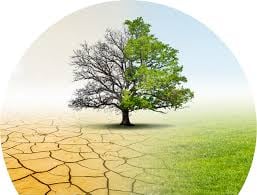

India faces climate crisis. Rising temperatures and erratic monsoons threaten its population and economy. The World Bank reports that over 80% of India’s districts are at risk from climate-induced disasters. These challenges include severe floods in the north-east and heat-induced crop failures in central regions. The urgency for effective climate risk assessment and adaptation strategies has never been greater.
About Climate Physical Risks (CPRs)
Climate Physical Risks encompass both acute shocks and chronic stresses. Acute shocks include floods and heatwaves. Chronic stresses involve shifting monsoon patterns and prolonged droughts. These risks affect economic stability and public health. It is crucial to distinguish between short-term weather forecasts and long-term climate projections. The latter enables policymakers to prepare for evolving climate hazards.
Mitigation vs. Adaptation
Global climate action is often split between mitigation and adaptation. Mitigation focuses on reducing emissions, while adaptation prepares for inevitable climate impacts. Although adaptation has been a priority for developing nations, recent climate events have brought into light its importance for developed nations as well. Investment in adaptation is economically beneficial. The UN Environment Programme estimates a return of $4 for every $1 spent on adaptation.
Framework for Assessing Climate Risks
The Intergovernmental Panel on Climate Change provides a framework for understanding CPRs. The expected value of climate risks is determined by hazard, exposure, and vulnerability. Hazards include floods and cyclones. Exposure refers to who and what is at risk. Vulnerability indicates a system’s capacity to withstand and recover. These elements collectively define climate risk.
Regulatory Shifts in Climate Risk Disclosure
Regulatory bodies worldwide are moving towards mandatory climate risk disclosures. In India, the Reserve Bank is integrating climate risks into its regulatory framework. The International Financial Reporting Standards (IFRS) ISSB S2 sets global standards for reporting CPRs. This shift indicates that assessing climate risks is now essential for business continuity.
Current Gaps in India’s Climate Risk Assessment
India’s approach to assessing climate risks is fragmented. Various government agencies and research institutions use different methodologies. While there are valuable studies, such as flood maps and vulnerability atlases, a unified system is lacking. Reliable projections are hindered by limitations in global climate models. Without centralised data, informed decision-making becomes challenging.
Steps Towards Improved Adaptation Planning
India has begun addressing these gaps through its National Adaptation Plan (NAP). This plan aligns with the Paris Agreement’s Article 7. The first report was submitted in 2023, with a more comprehensive report in progress. The NAP aims to cover nine thematic sectors at the district level. However, further steps are needed to develop a robust CPR assessment tool. This tool would aid both public and private sectors in making informed decisions.
Future Directions for Climate Risk Assessment
A specific tool for India is essential. It should combine localised climate modelling with a centralised climate risk data hub. This would facilitate transparent, science-based methods for risk assessment. A comprehensive approach will ensure that India’s development is not only rapid but also resilient to climate challenges.
(NNI / Latest news / Latest news india / India latest news/UPSC Preparation)
India’s Global Outreach Against Terrorism from Pakistan
Latest News: 23rd May 2025, UPSC Preparation
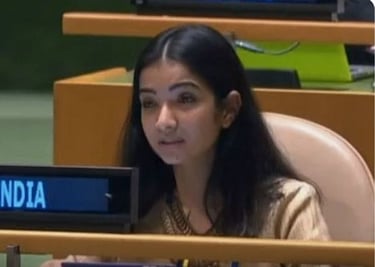

India is intensifying its diplomatic efforts to garner international support against terrorism emanating from Pakistan. With Pakistan holding a non-permanent seat on the United Nations Security Council (UNSC) during 2025-2026, India aims to solidify alliances with both current and incoming UNSC members. This initiative is part of a broader strategy to isolate Pakistan and highlight its role in supporting terrorist activities. India’s outreach is particularly focused on the new UNSC members set to join in January 2026. These include Latvia, Democratic Republic of Congo, Bahrain, Liberia, and Colombia. By briefing these nations, India hopes to influence their stance on Pakistan’s actions. The initiative follows a recent UNSC statement condemning terrorism, which India struggled to strengthen due to Pakistan’s influence.
Targeted Countries
The diplomatic teams will visit both permanent and non-permanent UNSC members. They will engage with the United States, United Kingdom, France, and Russia, while excluding China, perceived as Pakistan’s ally. Additionally, outreach will extend to the outgoing non-permanent members, including Algeria and Guyana, and the incoming members, such as Denmark and Greece.
Engagement with Muslim-Majority Nations
India’s strategy also includes strengthening ties with key Muslim-majority countries in West Asia and Southeast Asia. Nations like Saudi Arabia, UAE, Qatar, and Egypt, which have historically supported Pakistan, are now viewed as potential allies. This shift reflects a pragmatic approach to international relations, as these countries reassess their diplomatic ties.
G7 and BRICS Involvement
The diplomatic teams will also engage with G7 countries, including Germany, Italy, and Japan, to solidify India’s position on the global stage. Brazil and South Africa, BRICS members, will be included in discussions, alongside Ethiopia, which hosts the African Union’s headquarters. These engagements are crucial for encouraging a united front against terrorism.
Strategic Briefings and Meetings
The delegations will be led by India’s Foreign Secretary and senior officials from the Ministry of External Affairs. They will meet with political leaders, think-tanks, and media representatives in the target countries. This broad engagement aims to present India’s perspective on terrorism and garner support for its initiatives at the UNSC.
Overall Objectives
The overarching goal of this outreach is to build a coalition of nations that will support India’s stance on terrorism linked to Pakistan. By effectively communicating its concerns, India seeks to ensure that future UNSC discussions reflect its priorities and counter Pakistan’s narratives.
(NNI / Latest news / Latest news india / India latest news/UPSC Preparation)
Obesity Crisis in India 2025
Latest News: 22nd May 2025, UPSC Preparation


Obesity in India has reached alarming levels. A recent report by the World Heart Federation indicates that obesity rates in adults have quadrupled globally since 1990. The rise is evident in India, where the number of obese women has surged . The report marks the urgent need for effective obesity management strategies and public health interventions.
Current Obesity Statistics in India
Obesity affects millions in India. As of 2024, 10% of women over 20 years old are classified as obese, amounting to approximately 44 million. In contrast, 5% of men, around 26 million, are affected. The gender disparity is stark, with twice as many women as men living with obesity. Additionally, childhood obesity is rising, with 5.2 million girls and 7.3 million boys affected.
Health Implications of Obesity
Obesity increases the risk of cardiovascular diseases. Children with high Body Mass Index (BMI) are 40% more likely to develop such conditions in midlife. The early onset of obesity is linked to reduced life expectancy. The rising prevalence of obesity-related health issues poses a serious public health challenge.
Treatment Gaps and Challenges
Despite obesity being recognised as a disease, access to treatment remains limited. Many patients lack access to effective management protocols. Stigma around obesity hinders individuals from seeking help. Current treatments often focus on dietary changes and physical activity, which may not be sustainable long-term. Advanced treatments like GLP-1 drugs are available but are often unaffordable for the average patient.
Emerging Treatments and Market Trends
Recent drug approvals, such as Eli Lilly’s Mounjaro, offer new hope for obesity management. However, high costs limit access. Mounjaro’s sales have surged, indicating potential market growth. Other drugs, like Novo Nordisk’s Wegovy, are expected to enter the market soon, which may lead to more affordable generics as patents expire. The weight-loss drug market is poised for expansion.
Economic Impact of Obesity
The economic burden of obesity is . In 2019, the cost associated with obesity in India was estimated at $28.95 billion. This figure is projected to rise dramatically, potentially reaching $838.6 billion by 2060. The economic implications tell the need for urgent public health measures to combat obesity.
Public Health Interventions Needed
To address the obesity crisis, comprehensive public health strategies are essential. Governments must implement cost-effective measures to raise awareness and reduce risk factors. Recognising the multifactorial nature of obesity is crucial. Full treatment options must be made accessible and affordable to effectively combat this growing epidemic.
(NNI / Latest news / Latest news india / India latest news/UPSC Preparation)
Perito Moreno Glacier
Latest News: 21st May 2025, UPSC Preparation


The Perito Moreno glacier, located in Argentina, is experiencing alarming changes. Recently, it lost a massive ice block, raising concerns about its stability. This glacier, known for its dramatic ice calving events, has become a focal point for discussions on climate change and its impacts.
Perito Moreno Glacier
The Perito Moreno glacier, often referred to as the ‘White Giant’, is situated near El Calafate in Santa Cruz, Argentina. It spans approximately 250 square kilometres and is freshwater source for the country. Formed during the last Ice Age around 18,000 years ago, it has been a UNESCO World Heritage Site since 1981.
Ice Calving Events
Ice calving is a natural process where chunks of ice break off from the glacier and fall into the water. This phenomenon has been a spectacle for tourists since at least 1917. The sounds and sights of these events attract visitors worldwide. However, recent years have seen larger ice chunks breaking off, indicating potential instability.
Recent Changes and Concerns
Historically, the Perito Moreno glacier was stable. However, since around 2020, scientists have noted an increase in the size and frequency of ice calving events. A recent report indicated that the glacier has lost mass, averaging 0.85 metres per year since 2015. This rapid retreat is concerning for both the local ecosystem and global sea levels.
Impact of Climate Change
The primary factor behind the glacier’s retreat is global warming. The region has experienced an increase in air temperatures, averaging 0.06 degrees Celsius per decade. This rise leads to reduced snow and ice accumulation, exacerbating the glacier’s mass loss. Experts warn that the Perito Moreno glacier is not alone; many glaciers worldwide are experiencing similar fates.
Global Context of Glacier Retreat
The Perito Moreno glacier is part of a broader global trend of glacier retreat. Research indicates that glaciers have lost approximately 273 billion tonnes of ice annually over the past 25 years. This loss contributes to rising sea levels, which pose risks to coastal communities. A UNESCO report brought into light that since 1975, glaciers have lost over 9,000 billion tonnes of mass, equivalent to a massive ice block the size of Germany.
Significance of Monitoring Glaciers
Monitoring glaciers like Perito Moreno is crucial for understanding climate change. They serve as indicators of environmental health and provide vital information about future water availability. The ongoing changes in these ice formations can have far-reaching implications for ecosystems and human societies.
(NNI / Latest news / Latest news india / India latest news/UPSC Preparation)
India’s Total Fertility Rate Trends
Latest News: 20th May 2025, UPSC Preparation

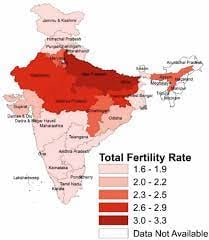
The Sample Registration System (SRS) Statistical Report of 2021 has revealed that India’s Total Fertility Rate (TFR) remains stable at 2.0, which is below the replacement level of 2.1. However, regional variations are stark. Bihar reports the highest TFR at 3.0, while West Bengal and Delhi have the lowest at 1.4. This report marks ongoing demographic trends and challenges across different states.
About Total Fertility Rate (TFR)
Total Fertility Rate is a demographic measure. It estimates the average number of children a woman will have during her reproductive years, typically aged 15 to 49. The TFR is derived from age-specific fertility rates, which assess the number of children born to women in specific age groups. The SRS survey is the largest demographic study in India, involving about 84 lakh individuals across various states and Union Territories.
Fertility Indicators in the SRS Report
The SRS report includes several fertility indicators. These include the Crude Birth Rate (CBR), General Fertility Rate, Age-Specific Fertility Rate, and Gross Reproduction Rate. The CBR measures live births per 1,000 people, while the General Fertility Rate focuses on births per 1,000 women of reproductive age. The report indicates that India’s CBR is 19.3 for 2021, reflecting a consistent decline of 1.12% annually since 2016.
Regional Variations in TFR
India’s TFR shows considerable regional disparity. Six states, including Bihar and Madhya Pradesh, exceed the replacement level. In contrast, states like Kerala and Tamil Nadu report TFRs well below this threshold. The variations are attributed to socio-economic factors, including education and healthcare access. States with higher TFRs often face challenges in human development policies, while those with lower TFRs encounter different issues such as changing family structures and lifestyle choices.
Implications of Declining TFR
The decline in TFR has implications for population dynamics. States with TFR below replacement levels may face challenges related to an ageing population and workforce shortages. Conversely, states with high TFRs may experience strains on resources and infrastructure due to rapid population growth. Policymakers need to address these unique challenges. Tailored approaches are essential for states to balance population growth and sustainable development.
Expert Analysis of Fertility Trends
The data indicates a need for targeted human development policies in states with high TFRs. The socio-economic progress in southern states correlates with lower TFR. However, states with declining fertility rates, such as Sikkim, face their own challenges, including a lack of desire for larger families. Factors like opportunity costs and caregiving stresses influence these trends.
(NNI / Latest news / Latest news india / India latest news/UPSC Preparation)
Report Card 19: Child Wellbeing in an Unpredictable World
Latest News: 19th May 2025, UPSC Preparation


The COVID-19 pandemic has impacted children in wealthy nations. A recent UNICEF report marks declines in academic performance, mental wellbeing, and physical health among children in 43 OECD and EU countries. This analysis compares data from 2018 to 2022, revealing alarming trends that emerged during and after the pandemic.
Academic Performance Declines
Children’s academic skills have deteriorated since the pandemic began. School closures lasting from three to twelve months forced many to engage in remote learning. This disruption has resulted in an average learning loss of seven months to one year. Disadvantaged children faced the most setbacks. Approximately 8 million 15-year-olds, nearly half of their age group, are now assessed as not functionally literate or numerate.
Mental Wellbeing Concerns
The mental health of children has also suffered. Life satisfaction among children declined in 14 out of 32 countries surveyed. Only Japan reported an improvement in this area. The report indicates that the pandemic has exacerbated existing mental health issues, particularly among vulnerable populations.
Physical Health Challenges
Physical health trends are troubling. The prevalence of overweight children increased in 14 out of 43 countries. This trend reflects a long-standing issue that has worsened during the pandemic. Access to nutritious food and physical activity has been compromised for many children.
Impact on Disadvantaged Families
Disadvantaged children have experienced the most severe consequences. The pandemic has widened existing inequalities in education and health. The report puts stress on the urgent need for targeted interventions to support these vulnerable groups.
Recommendations for Improvement
The UNICEF report calls for comprehensive policy action to address these declines. Governments should focus on skill development, including literacy and numeracy. Mental health services must be improved, with a focus on prevention and tackling bullying. Physical health initiatives should ensure access to nutritious food and limit unhealthy food marketing. Engaging children in discussions about their experiences is crucial for developing effective solutions.
Global Context and Future Risks
The report warns that the progress made in child wellbeing is increasingly vulnerable to global challenges, including climate change. Wealthy nations must prioritise children’s education, health, and overall wellbeing to secure their future and that of society.
(NNI / Latest news / Latest news india / India latest news/UPSC Preparation)
Polio Outbreak Declared in Papua New Guinea
Latest News: 18th May 2025, UPSC Preparation


The World Health Organisation (WHO) confirmed a polio outbreak in Papua New Guinea. The outbreak was identified after routine screenings revealed the presence of the poliovirus in healthy children. The WHO has urged immediate vaccination efforts to curb the spread of this highly infectious disease.
About Polio and Its Transmission
Polio, or poliomyelitis, is a viral disease primarily affecting children under five. The poliovirus spreads through contact with an infected person’s faeces or respiratory droplets. It can also be transmitted via contaminated food and water. Once inside the body, the virus multiplies in the intestine and can invade the nervous system, leading to paralysis.
Historical Context of Polio Eradication
The Global Polio Eradication Initiative was launched in 1988. This effort has reduced polio cases by over 99%. In 1988, there were approximately 350,000 cases reported globally. By 2021, this number had fallen to just six cases. The initiative has involved WHO, national governments, and various organisations, including UNICEF and the Bill & Melinda Gates Foundation.
Current Situation in Papua New Guinea
Papua New Guinea was declared polio-free in 2000. However, a resurgence occurred in 2018, resulting in 26 cases of paralysis. The recent outbreak has already infected at least two children, prompting health authorities to take swift action. The country has a low immunisation rate, with less than half of the population vaccinated against polio.
Response Measures and Vaccination Campaigns
The Papua New Guinea government has initiated a national response, focusing on immediate vaccination campaigns. UNICEF is collaborating with local authorities to distribute vaccines and boost disease monitoring. A goal has been set to increase routine immunisation rates to 90% for long-term protection against polio.
Global Polio Status
Despite progress, polio remains endemic in Afghanistan and Pakistan. The two strains of wild poliovirus, type 2 and type 3, have been eradicated. However, wild poliovirus type 1 continues to circulate in the two endemic countries. The global health community remains vigilant in its efforts to eradicate polio entirely.
(NNI / Latest news / Latest news india / India latest news/UPSC Preparation)
Periodic Labour Force Survey – April 2025
Latest News: 17th May 2025, UPSC Preparation


India recorded an unemployment rate of 5.1%. This figure was revealed through the newly revamped Periodic Labour Force Survey (PLFS). For the first time, the data was released monthly, offering real-time vital information about employment trends. The Ministry of Statistics and Programme Implementation (MoSPI) aims to enhance employment data accuracy by including rural areas in its surveys.
Revamped PLFS
The PLFS was originally launched in 2017. It has undergone changes to improve data collection. The revamped survey now includes rural employment statistics. Monthly estimates will be provided for key indicators such as the Labour Force Participation Rate (LFPR) and Worker Population Ratio (WPR). These changes aim to address the demand for timely labour market information.
Key Employment Indicators
The PLFS will measure several vital indicators:
Labour Force Participation Rate (LFPR): This indicates the percentage of the population that is either working or actively seeking work. Recently, the LFPR was 55.6%.
Worker Population Ratio (WPR): This reflects the proportion of employed individuals in the total population. The overall WPR was noted at 52.8% in April 2025.
Demographic
The unemployment rate varies across demographics. Among men, the unemployment rate was 5.2%, while for women it was slightly lower at 5%. Notably, youth unemployment (ages 15-29) was higher, reaching 13.8%. Urban areas faced higher unemployment rates at 17.2%, compared to 12.3% in rural areas.
Gender Disparities
Gender disparities in employment are evident. The LFPR for women aged 15 years and above was only 38.2% in rural areas. In urban settings, this figure dropped to 23.5%. The WPR for women was also lower than men, indicating systemic issues in female employment.
Sampling Methodology
The revamped PLFS employs a larger sample size for accuracy. A total of 22,692 First Stage Units (FSUs) will be surveyed annually. This marks increase from previous surveys, enhancing the reliability of labour market estimates. The new methodology includes both urban and rural households, ensuring comprehensive coverage.
Future Projections
The first quarterly bulletin covering both urban and rural areas is set for release in August 2025. This will further enhance understanding of employment trends across the country. The ongoing adjustments to the PLFS reflect the government’s commitment to improving labour market insights.
(NNI / Latest news / Latest news india / India latest news/UPSC Preparation)
Women’s Rights Organisations Face Funding Crisis Worldwide
Latest News: 16th May 2025, UPSC Preparation

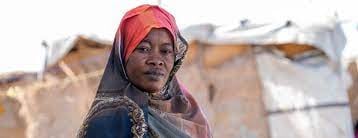
A UN Women report brought into light a critical situation for women-led organisations amidst humanitarian crises. As global needs increase due to conflict, climate change, and displacement, funding cuts threaten these organisations’ existence. The survey revealed that 90% of 411 surveyed organisations experienced financial impacts, with nearly half expecting to shut down within six months. This crisis jeopardises vital services for women and girls, particularly those facing violence and displacement.
Impact of Funding Cuts
The report indicates that deep cuts to foreign aid have severely affected women’s organisations. Many have suspended essential services, including programmes for survivors of gender-based violence. Staff layoffs are rampant, with over 70% of organisations reducing their workforce. The report puts stress on the urgency of addressing this funding crisis.
Vulnerable Populations
Women and girls are disproportionately affected by humanitarian crises. The report notes rising violence and harmful coping strategies, such as child marriage and survival sex. Women-led organisations play important role in providing support to refugees, LGBTIQ+ individuals, women with disabilities, and Indigenous communities.
Resilience and Adaptation
Despite the challenges, many organisations are demonstrating resilience. They are adjusting their strategies and advocating for increased support from the international community. The report calls for urgent action to centre women-led organisations in humanitarian responses rather than sidelining them.
Long-term Consequences
The funding crisis could have lasting effects on gender equality and women’s rights globally. If these organisations shut down, the support systems they provide may collapse, leading to increased vulnerability for women and girls in crisis situations. The report serves as a wake-up call for donors and humanitarian actors to prioritise funding for women’s organisations.
(NNI / Latest news / Latest news india / India latest news/UPSC Preparation)
India’s Progress in Maternal and Child Health
Latest News: 15th May 2025, UPSC Preparation
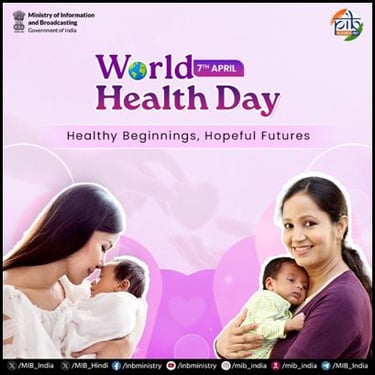

India has made strides in improving maternal and child health from 2014 to 2021. The Sample Registration System (SRS) 2021 report marks a consistent decline in critical health indicators. The Ministry of Health and Family Welfare (MoHFW) reports that these improvements align with global health targets.
Key Health Indicators Explained
Maternal Mortality Ratio (MMR) measures deaths during or shortly after pregnancy. It is expressed per 100,000 live births.
Infant Mortality Rate (IMR) counts deaths of infants under one year per 1,000 live births.
Neonatal Mortality Rate (NMR) records deaths within the first 28 days of life, also per 1,000 live births.
Under-Five Mortality Rate (U5MR) indicates the likelihood of a child dying before age five.
Total Fertility Rate (TFR) reflects the average number of children a woman would have based on current rates.
The sex ratio at birth measures female births per 1,000 male births, revealing gender bias.
Improvements in Health Metrics
The SRS 2021 report shows notable reductions in maternal and child mortality rates:
MMR decreased from 130 (2014-16) to 93 (2019-21).
IMR fell from 39 (2014) to 27 (2021).
NMR dropped from 26 (2014) to 19 (2021).
U5MR declined from 45 (2014) to 31 (2021).
The sex ratio at birth improved from 899 (2014) to 913 (2021).
TFR stabilised at 2.0 (2021), down from 2.3 (2014).
Global Comparisons
India’s improvements surpass global averages. The UN Maternal Mortality Estimation Inter-agency Group reports an 86% reduction in MMR in India from 1990 to 2023, compared to 48% globally. Similarly, U5MR in India fell by 78%, while the global decline was 61%. NMR and IMR reductions in India also outpace global figures.
Factors Contributing to Improvements
The MoHFW attributes these positive outcomes to several targeted initiatives:
The Ayushman Bharat health assurance scheme enhances access to healthcare.
Strengthening of public health infrastructure includes maternity waiting homes and sick newborn care units.
Deployment of skilled birth attendants and midwives ensures quality care.
Implementation of evidence-based practices like antenatal corticosteroids improves outcomes.
Digital surveillance systems monitor maternal and child health effectively.
These programs focus on delivering free, quality care to vulnerable populations, ensuring no denial of care.
(NNI / Latest news / Latest news india / India latest news/UPSC Preparation)
Pangenome of Rice
Latest News: 12th May 2025, UPSC Preparation
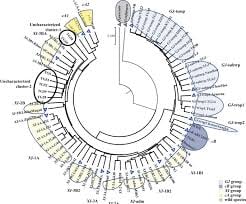

Scientists revealed a pioneering pangenome for rice. This reference genome integrates genetic data from 144 wild and cultivated rice varieties across Asia. The initiative mirrors the Human Genome Project, aiming to enhance rice cultivation. Rice serves as a staple for nearly two-thirds of the global population. The pangenome project is vital for developing new rice cultivars with improved traits, particularly in the face of climate change.
About the Pangenome
A pangenome differs from a traditional reference genome. It encompasses both common genes and unique genetic sequences across various rice varieties. This comprehensive approach provides a clearer picture of genetic diversity. The pangenome for rice includes 69,531 identified genes, with 28,907 being core genes and 13,728 specific to wild rice. This genetic wealth can lead to better understanding of rice adaptability and resilience.
Climate Change and Rice Production
Rice production is impacted by climate change. Rising temperatures affect yields and increase arsenic uptake in rice. India, a major rice producer, has seen its average temperature rise by 0.7º C since 1901. The record heat in 2024, with temperatures 0.9º C above average, poses a threat to rice cultivation. Addressing these challenges is crucial for food security.
Advances in Rice Cultivation
The Indian Council of Agricultural Research (ICAR) has developed genome-edited rice varieties, Samba Mahsuri and MTU 1010. These varieties promise higher yields and improved drought resistance. However, their release to farmers is pending. The integration of pangenome data can further enhance these developments, ensuring that new cultivars are resilient and productive.
Evolutionary from Wild Rice
The study confirmed that all Asian cultivated rice descends from a wild variety, Or-IIIa, a close relative of O. rufipogon. This evolutionary insight is crucial for understanding domestication pathways. The research marks the importance of wild rice in breeding programs, as it harbours valuable traits for climate resilience.
Implications for Future Research
The findings from the rice pangenome project open new avenues for research. By bridging the gap between wild and cultivated rice, scientists can develop superior varieties. These improved cultivars can incorporate traits that enhance resilience to environmental changes. The ongoing study of rice genetics will play a very important role in global food security.
(NNI / Latest news / Latest news india / India latest news/UPSC Preparation)
Reconsidering Safe Harbour for Social Media Platforms
Latest News: 12th May 2025, UPSC Preparation


The Government of India is re-evaluating the concept of safe harbour for social media platforms. This move comes in response to growing concerns about the spread of fake news online. Safe harbour protects websites from legal liability for user-generated content. It encourages innovation while shielding website owners from undue legal pressure.
About Safe Harbour
Safe harbour is a legal provision that protects online intermediaries from being held liable for unlawful content posted by users. This concept originated in the early days of the internet. In the United States, it is defined under Section 230 of the Communications Act of 1934. In India, similar protections are provided under Section 79 of the Information Technology Act, 2000.
Intermediary Liability
Intermediary liability refers to the responsibility of online platforms for the content they host. Safe harbour provisions ensure that these platforms are not held accountable for user-generated content unless they have actual knowledge of illegal material. In India, this knowledge must be substantiated by a court order or government notification.
Conditions of Safe Harbour in India
While safe harbour offers protections, there are conditions. If an intermediary becomes aware of illegal content, it must act promptly to remove it. The Information Technology (Intermediary Guidelines and Digital Media Ethics Code) Rules, 2021, impose additional requirements. These include appointing a nodal officer and submitting regular reports on user complaints.
Recent Legal Challenges
The government’s efforts to amend safe harbour protections have faced legal scrutiny. The Information Technology (Intermediary Guidelines and Digital Media Ethics Code) Amendment Rules, 2023, sought to revoke safe harbour for content labelled as fake news by the Press Information Bureau. This amendment was challenged in the Bombay High Court, which ruled in favour of the petitioners, arguing that the government overstepped its authority.
Government’s Rationale for Amendments
The government argues that foreign social media platforms often disregard Indian laws. They have expressed frustration over platforms like Twitter, now X, for their slow response to content removal requests. The proposed amendments aim to compel platforms to take a more active role in managing misinformation, cyber fraud, and AI-generated content.
Future of Safe Harbour
The Ministry of Electronics and Information Technology is working on a Digital India Act that may revise safe harbour provisions. However, details about these changes remain unclear. The ongoing debates reflect a broader global discussion about the responsibilities of social media companies.
(NNI / Latest news / Latest news india / India latest news/UPSC Preparation)
Government’s Pre-emption Rights on Oil and Gas
Latest News: 11th May 2025, UPSC Preparation


The Government of India introduced draft rules under a revised oilfields legislation. These rules grant the government pre-emption rights over oil and natural gas during national emergencies. This move aims to ensure national interests and public welfare in critical situations.
About Pre-emption Rights
Pre-emption rights are legal entitlements allowing a party to purchase or claim resources before others. In this case, the government can claim oil and natural gas produced in India. This measure is designed to prioritise national needs during emergencies.
Legal Framework
The pre-emption rights are part of the Oilfields (Regulation and Development) Amendment Bill. This legislation replaces outdated provisions from the 1948 Act. It aims to boost domestic production, attract investment, and support energy transition goals.
Definition of National Emergency
The draft rules do not specify what constitutes a national emergency. However, scenarios like war or natural disasters are likely to be included. The government retains the authority to define emergencies, making its decisions final.
Fair Market Price Mechanism
When the government exercises its pre-emption rights, it will pay a fair market price to the producers. This price will be determined based on prevailing market conditions at the time of pre-emption. This aims to ensure fairness for producers while prioritising national interests.
Force Majeure Conditions
The draft rules also outline exemptions for oil and gas operators under force majeure conditions. These include natural disasters, wars, and other uncontrollable events. This provision protects operators from obligations during unforeseen circumstances.
Implications for the Oil and Gas Industry
The introduction of pre-emption rights may reshape the oil and gas landscape in India. It could lead to increased government control during crises. Industry stakeholders may need to adapt to these changes to ensure compliance and continued operations.
Public Welfare Considerations
The primary goal of these rules is to safeguard public welfare. By ensuring that the government can access essential resources during emergencies, the legislation aims to protect citizens’ interests. This reflects a broader commitment to national security and economic stability.
(NNI / Latest news / Latest news india / India latest news/UPSC Preparation)
India’s Agricultural Shift
Latest News: 10th May 2025, UPSC Preparation
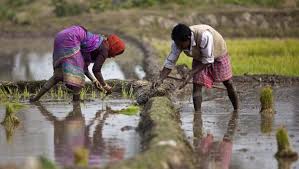

The Government of India’s recent agricultural strategy aims to reduce paddy cultivation by 5 million hectares to promote pulses and oilseeds. This initiative is driven by the need for self-sufficiency in edible oils and pulses. Critics argue that without proper training and resources, this shift may harm paddy production. The introduction of genome-edited rice varieties aims to counterbalance the reduction in area by enhancing yield.
Current Agricultural Context
India’s agriculture faces a dual challenge – the need to increase production of pulses and oilseeds while managing reduction in paddy acreage. The government plans to decrease the area under paddy cultivation from 47.83 million hectares to 47.73 million hectares in the 2024-25 crop year. This reduction is expected to facilitate the growth of pulses and oilseeds, which are critical for the country’s food security.
Genome Editing Technology
The Union Agriculture Minister launched two new genome-edited paddy varieties, DRR Dhan 100 (Kamala) and Pusa DST Rice 1. These varieties are developed using CRISPR-Cas technology, which makes precise genetic modifications without adding foreign genes. This approach is considered different from traditional genetically modified organisms (GMOs) and aims to enhance yield while being environmentally friendly.
The Minus 5 and Plus 10 Formula
The government has introduced the minus 5 and plus 10 formula, which stipulates that a 5 million hectare reduction in paddy area should lead to an increase in production by 10 million tonnes. This ambitious target is part of a broader strategy to ensure food security while transitioning to more sustainable agricultural practices.
Concerns and Criticism
Despite the government’s optimistic projections, experts have raised concerns about the biosafety of genome-edited crops. Critics emphasise that farmers must receive adequate training and resources to adapt to new technologies. Without proper support, the shift to pulses and oilseeds could jeopardise rice production and overall agricultural stability.
Future Directions in Agriculture
The Indian Council of Agricultural Research (ICAR) is shifting from supply-driven to demand-driven research. This includes gathering feedback from farmers to develop crop varieties tailored to their needs. The focus is on motivating the youth to engage in agriculture, ensuring a sustainable future for the sector.
Broader Agricultural Goals
The government’s agricultural agenda includes lowering input costs, ensuring reasonable prices for crops, and providing assistance for crop damage. These goals are essential for creating a resilient agricultural framework that can adapt to changing climate conditions and market demands.
(NNI / Latest news / Latest news india / India latest news/UPSC Preparation)
Cashless Treatment Scheme for Road Accident Victims
Latest News: 09th May 2025, UPSC Preparation


The Government of India introduced a cashless treatment scheme for road accident victims on 5 May 2025. This initiative ensures that individuals injured in road accidents receive immediate medical care without financial barriers. The scheme allows for treatment costs up to ₹1.5 lakh per person, per accident, without any upfront payment. This measure aims to save lives by providing timely medical attention.
Scheme Details
The cashless treatment scheme applies to any person injured in a road accident on Indian roads. It is designed to alleviate financial constraints that often delay necessary medical care. Victims can access cashless treatment at designated hospitals for a maximum of seven days post-accident.
Implementation Process
The National Health Authority (NHA) is responsible for implementing the scheme. It collaborates with police, hospitals, and State Health Agencies to facilitate smooth operations. If a victim is treated at a non-designated hospital, only stabilisation care is provided until transfer to a designated facility is arranged.
Monitoring and Oversight
A steering committee led by the Road Secretary oversees the scheme. This committee includes representatives from various ministries and agencies. It addresses challenges and ensures the effective execution of the cashless treatment initiative. This scheme builds upon a pilot launched in March 2024, reflecting the government’s dedication to enhancing road safety and healthcare access.
How to Avail the Scheme
To benefit from the scheme, accident victims must seek immediate treatment at a designated hospital. A list of these hospitals can be found through the State Road Safety Council or the NHA portal. It is crucial to inform the police about the accident, as their report is necessary for processing claims.
Financial Aspects
Victims can receive treatment without any upfront payment at designated hospitals. The hospital will liaise with the NHA for claim settlements up to ₹1.5 lakh. It is advisable to keep copies of medical reports, bills, and the police FIR for any future claims or follow-ups.
Duration of Coverage
The scheme covers medical treatment for seven days from the date of the accident. After this period, victims may need to utilise personal insurance or explore other healthcare options for ongoing treatment.
(NNI / Latest news / Latest news india / India latest news/UPSC Preparation)
Impact of Humanitarian Funding Cuts on Child Protection
Latest News: 08th May 2025, UPSC Preparation


Humanitarian funding cuts have severely affected child protection initiatives globally. According to a recent report by the Alliance for Child Protection in Humanitarian Action, over 1.1 million children are directly impacted across more than 23 countries. The reduction in funding has stalled critical interventions, increasing children’s vulnerability to abuse, neglect, and violence. Major donors, including the United States and several European nations, have decreased their contributions, further exacerbating the crisis. This situation unfolds against a backdrop of escalating conflicts and disasters, which disproportionately affect children.
Current State of Humanitarian Funding
Humanitarian funding is facing unprecedented cuts. In 2024, the United States contributed USD $14 billion, representing 41.8% of the global appeal. Other countries, including the United Kingdom, Germany, and the European Union, have also indicated potential reductions. These cuts are occurring as humanitarian crises intensify, leaving children at greater risk.
Survey
A survey conducted in March and April 2025 gathered responses from 250 child protection professionals across 55 countries. The findings revealed that 80% of participants reported impacts on child protection due to funding cuts. Many professionals noted a decrease in frontline personnel and capacity-building efforts, with 70% indicating a reduction in case workers.
Impact on Child Protection Services
The cuts have led to the closure of vital child protection programmes. Services such as family tracing, support for unaccompanied minors, and mental health interventions have been halted. This has left children increasingly vulnerable to exploitation and violence. In regions like Latin America and Africa, local and national NGOs report substantial budget losses, with over half indicating reductions of more than 40%.
Case Studies from Affected Regions
In Uganda, children are resorting to part-time work to support their families due to inadequate funding. In the Democratic Republic of Congo, armed conflicts have forced many children to join armed groups. In Bangladesh, funding cuts have put Rohingya children at high risk, with 107 children lacking necessary protection services. These examples illustrate the dire consequences of funding reductions on children’s safety and rights.
Sector-Wide Disruptions
The impact of funding cuts extends beyond child protection. Educational access for girls in Afghanistan has been compromised. Integrated child protection and nutrition programmes in Yemen and Nigeria have ceased. In the Democratic Republic of Congo, WASH programmes have been disrupted, affecting community health. These disruptions highlight the interconnectedness of humanitarian services and the cascading effects of funding cuts.
(NNI / Latest news / Latest news india / India latest news/UPSC Preparation)
ANRF’s MAHA-EV
Latest News: 07th May 2025, UPSC Preparation


The Anusandhan National Research Foundation (ANRF) has initiated the Mission for Advancement of High-impact Areas on Electric Vehicles (MAHA-EV). This initiative responds to the urgent need for innovation in India’s electric vehicle ecosystem. The mission focuses on overcoming critical challenges in electric mobility. It aims to establish India as a global leader in electric vehicle technology.
Objectives of MAHA-EV
The primary goal of MAHA-EV is to enhance research and development in the electric vehicle sector. The mission targets three key technological verticals – Tropical EV Battery and Battery Cells, Power Electronics, Machines and Drives, and EV Charging Infrastructure. Each vertical addresses specific challenges in the electric vehicle landscape.
Selected e-Nodes
Seven electric mobility nodes (e-nodes) have been selected to drive the MAHA-EV mission. These e-nodes include the Indian Institute of Technology Bombay and the National Institute of Technology Surathkal. Each e-node will collaborate with industry partners and academic institutions to execute their projects effectively.
Project Execution and Collaboration
The selected e-nodes will operate in a consortia mode. This collaborative approach ensures that diverse expertise is harnessed. Each project will involve partnerships between academic institutions, research and development laboratories, and industry stakeholders. This synergy is crucial for advancing electric vehicle technology in India.
Enthusiasm and Participation
The call for proposals under the MAHA-EV mission generated interest. A total of 227 proposals were received from various stakeholders. This high level of engagement reflects the commitment to advancing electric mobility in India. The selected proposals will focus on the specified technological verticals, ensuring targeted research efforts.
Strategic Importance of Electric Vehicles
Electric vehicles play a vital role in India’s sustainable development goals. The MAHA-EV mission aligns with the broader objectives of promoting innovation and self-reliance. By focusing on electric mobility, India aims to reduce its carbon footprint and enhance energy security. The mission also supports the Atmanirbhar Bharat initiative, promoting self-sufficiency in the EV sector.
Future Prospects
The MAHA-EV mission is poised to catalyse India’s leadership in electric mobility solutions. By encouraging a robust research ecosystem, the mission aims to position India as a hub for electric vehicle development. This strategic focus on innovation and sustainability is essential for achieving global competitiveness in the EV market.
(NNI / Latest news / Latest news india / India latest news/UPSC Preparation)
Veerashaiva-Lingayats to seek separate religion code for community in Census
Latest News: 02nd Mayl 2025, UPSC Preparation
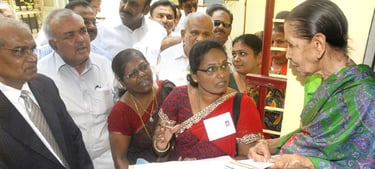

Veerashaiva-Lingayats, who are contesting the population data in the 2015 Socio-Economic and Educational Survey report of the Karnataka State Commission for Backward Classes, are likely to seek a separate religion code for the community in the national Census.
The Akhila Bharatha Veerashaiva Mahasabha will petition the Centre for a religion code. The executive committee of the mahasabha will meet soon and draft the contents of the petition.
The idea of a separate religion status for Lingayats had been a widely contested issue ahead of the 2018 Assembly elections in Karnataka. Though the Akhila Bharatha Veerashaiva Mahasabha has been seeking a separate religion code for the community for decades, the Jagathika Lingayat Mahasabha, which spearheaded an agitation in 2017, sought a separate religion tag for ‘Lingayats’.
While the demand for separate religion has come from both groups, the difference is over the nomenclature, a Veerashaiva Mahasabha source said, cautioning that differences could crop up again with the Veerashaiva Mahasabha set to seek a separate code for ‘Veerashaiva-Lingayats’.
In 2011, separate codes were assigned to Hinduism, Islam, Christianity, Sikhism, Jainism, and Buddhism. There was a separate column for “other religions and persuasions”. Ahead of the 2001 and the 2011 Census too, the Veerashaiva Mahasabha had petitioned the Centre seeking the religion code. Butthe community members, through a ‘Jana Jagruthi Jatha’, were asked to write ‘Veerashaiva-Lingayat’ in the column meant for ‘others’ instead of identifying as Hindus, Veerashaiva Mahasabha sources said.
“Seeking a separate religion tag is not new. The Veerashaiva Mahasabha in its 1940 conference had passed a resolution seeking separate religion tag and petitioned the then British government. Our record shows that even before the 1971 census, a similar demand had been made,” Veerashaiva Mahasabha secretary H.M. Renuka Prasanna said.
The 2015 survey conducted by the commission, headed by H. Kantharaj, has put the population of Veerashaiva-Lingayats in Karnataka to be about 66.35 lakh of the 5.98 crore surveyed, or about 11% of the State population. The Veerashaiva Mahasabha has disputed the figure and claimed its number to be far higher, around 18%-22% of the State population.
The upcoming Census will now be another measure for the population. The Veerashaiva-Lingayats are the dominant land-owning community in north and central Karnataka, and are seen as politically powerful too, though it is part of backward classes — Category 3B in the current OBC classification. Apart from a sizeable population of the broader Veerashaiva-Lingayat community spread across Karnataka, the Veerashaiva Mahasabha is counting on the community’s considerable numbers in neighbouring Maharashtra, Tamil Nadu, Kerala, Andhra Pradesh, and Telangana.
(NNI / Latest news / Latest news india / India latest news/UPSC Preparation)
Role in a Risk Society: Women and the Unequal Burden
Latest News: 29th April 2024, UPSC Preparation
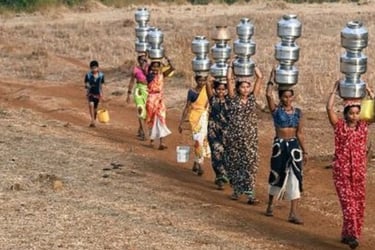

The concept of “risk society,” coined by Ulrich Beck, highlights how modern crises amplify risks globally, with women disproportionately bearing the impact, especially in developing countries.
What is Risk Society?
Risk society describes a phase where manufactured risks from technological and environmental developments dominate modern life, unlike the natural risks of the past.
It focuses on managing risks rather than just distributing wealth, reflecting the unintended consequences of industrialization.
Features:
Reflexive Modernization: Societies must constantly adapt to problems created by earlier technological advances.
Globalized Risks: Threats like pandemics, nuclear disasters, and climate change transcend national boundaries.
Unpredictability: Manufactured risks are complex, harder to foresee, and harder to control.
Three Distinctive Epochs of Modernity:
Pre-Industrial Society: Risks were localized and natural, like famine and plagues, managed through traditional systems.
Industrial Society: Urbanization and technological advances created new risks, including pollution and resource depletion.
Risk Society: Today, human activities are the primary source of global, unpredictable hazards like nuclear accidents and pandemics.
Types of Risk:
Natural Risk:
Originates from natural phenomena like earthquakes, floods, or disease outbreaks.
Example: The 2004 Indian Ocean Tsunami was a major natural risk affecting millions.
Manufactured Risk:
Emerges from human activities, particularly industrial and technological development.
Example: The Chernobyl nuclear disaster (1986) caused lasting environmental and human health impacts.
Women and the Unequal Burden in Risk Society:
Higher Exposure to Health Risks: Women’s roles in water collection and use of biomass fuels for cooking expose them to contaminated water and indoor air pollution
Increased Disaster Mortality Risk: UNDP studies show women are 14 times more likely to die in climate disasters due to mobility restrictions, care responsibilities, and inadequate early warning access.
Loss of Livelihood Security: Women in agriculture (43% of India’s rural workforce) suffer first when climate-induced droughts, floods, or soil degradation destroy crops and reduce rural income (FAO 2023 report).
Invisible and Unpaid Care Burden: Post-disaster recovery tasks like caregiving, food preparation, and healthcare fall heavily on women without financial recognition.
Water and Food Insecurity Amplification: Climate change-induced resource scarcity leads to women traveling longer distances for water and receiving less food during shortages.
Way Ahead:
Gender-Disaggregated Disaster Data Systems: Mandate gender-sensitive risk assessments and data collection to design policies that directly target vulnerabilities
Community-Led Natural Resource Management: Empower women-led cooperatives for water management, seed preservation, and sustainable farming.
Climate-Resilient Social Protection Schemes: Expand MGNREGA-style cash-for-work programs post-disaster, prioritizing women-headed households for immediate recovery.
Financial Access Reforms: Promote special microfinance and insurance packages for rural women to rebuild livelihoods after environmental or health crises.
Inclusive Climate Governance: Set mandatory quotas for women’s representation in local climate adaptation bodies and Panchayati Raj institutions handling natural resource management.
Conclusion:
The concept of a risk society underscores the growing complexity and unpredictability of modern hazards. It also reveals the systemic inequalities that make women especially vulnerable to these risks. Ensuring gender equity in risk management is critical for building a resilient, sustainable future.
(NNI / Latest news / Latest news india / India latest news/UPSC Preparation)
India’s Journey of Heritage Preservation
World Heritage Day 2025
Latest News: 17th April 2024, UPSC Preparation
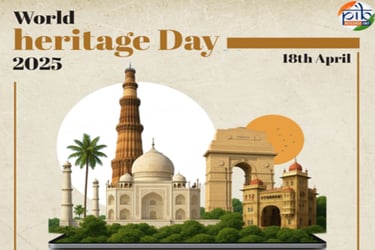

World Heritage Day is celebrated every year on 18th April to honor and protect cultural and natural heritage.
This year theme is “Heritage under Threat from Disasters and Conflicts: Preparedness and Learning from 60 years of ICOMOS Actions.”
The World Heritage Convention is an international agreement created by UNESCO in 1972.
World Heritage Convention was adopted by countries around the world to protect important cultural and natural sites.
As of October 2024, there are 1,223 World Heritage Sites across 196 countries (952 cultural, 231 natural, 40 mixed).
India has 43 World Heritage Sites, with Agra Fort, Taj Mahal, Ajanta, and Ellora Caves among the first listed in 1983.
(NNI / Latest news / Latest news india / India latest news/UPSC Preparation)
Post Office Rules, 2024, and Post Office Regulations, 2024
Latest News: 28th December 2024, UPSC Preparation

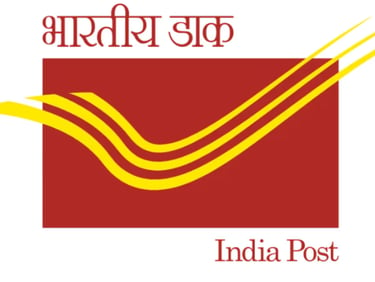
The Department of Posts (DoP) has introduced reforms in the Indian postal system with the Post Office Act, 2023, effective from June 18, 2024, to modernise services and enhance accessibility for citizens. The accompanying Post Office Rules, 2024, and Post Office Regulations, 2024, implemented from December 16, 2024, support these changes.
Objectives of the New Legislation
The Act aims to simplify postal processes and promote efficient governance. It adheres to the principles of “Dak Sewa Jan Sewa,” focusing on citizen-centric services. The vision aligns with “Atmanirbhar Bharat,” advocating for self-reliance and minimal government intervention.
Key Features of the New Rules
The new rules comprise 19 rules and 180 regulations. They enhance service delivery through the vast postal network, targeting remote areas. Features include digital addresses, payment options, and a grievance redressal mechanism without penalties.
The regulations streamline mail and parcel services to meet contemporary demands. Simplified product categories make services more user-friendly. For instance, book packets are now classified under “Book Post,” and the money order limit has increased from ₹5,000 to ₹10,000.
Enhanced Tracking and Registration
Parcels must now include tracking features, benefiting small and medium businesses. Registration services have expanded to include new products such as pictorial postcards with tracking options. The Act also ensures smooth transition processes for registered newspapers under the Press and Registration of Periodicals Act, 2023.
Collaborations for Broader Services
The postal network can now offer services to public and private entities through agreements. This collaboration aims to enhance service delivery and job generation within the postal system.
Stakeholders seeking further information can access the complete Post Office Rules and Regulations through official DoP links. These reforms represent shift towards a more efficient and citizen-focused postal service in India.
(NNI / Latest news / Latest news india / India latest news/UPSC Preparation)
India Crossess 73,000 Startups with Women Leaders
Latest News: 27th December 2024, UPSC Preparation


India’s startup boasts over 73,000 startups with at least one woman director, which is nearly half of the total 157,066 startups recognized under the Startup India initiative. The growing involvement of women marks their vital role in innovation and economic progress.
Key Statistics
India now ranks as the third-largest startup hub globally, and is home to more than 100 unicorns, which are startups valued at over $1 billion. This surge in entrepreneurship has transformed cities like Bengaluru, Hyderabad, Mumbai, and Delhi-NCR into major innovation centers.
Factors Fueling Growth
Affordable internet access and a vibrant, young workforce have contributed to the growth of startups. Sectors such as fintech, edtech, health-tech, and e-commerce are thriving. Startups leverage technologies like artificial intelligence (AI), blockchain, and the Internet of Things (IoT) to address both local and global challenges.
Government Initiatives
The Government of India has implemented various initiatives to encourage startup growth. The Startup India programme, launched in 2016, has been very important. By December 2024, over 759,000 users are registered on its platform. Additional support includes tax benefits, funding opportunities, and the Bharat Startup Knowledge Access Registry (BHASKAR).
Support Structures
Infrastructure and funding support are provided through initiatives like the Atal Innovation Mission (AIM) and the National Initiative for Developing and Harnessing Innovations (NIDHI). The SAMRIDH scheme, established in 2021, offers up to ₹40 lakh in funding to software product startups via accelerators.
Prominent Indian startups, such as BYJU’S, Zomato, Ola, and Nykaa, have successfully expanded their operations internationally. Indian-origin startups in Silicon Valley further exemplify India’s influence in the global innovation landscape. Partnerships with global companies are on the rise, showcasing the scalability and strength of India’s startup ecosystem.
(NNI / Latest news / Latest news india / India latest news/UPSC Preparation)
Govt Plans to Distribute Property Cards under SVAMITVA Scheme
Latest News: 26th December 2024, UPSC Preparation
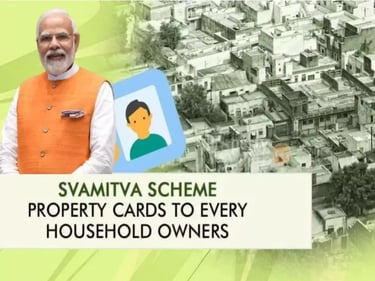

The SVAMITVA scheme is an initiative aimed at empowering rural property owners and Prime Minister Narendra Modi will distribute over 58 lakh property cards, enhancing ownership rights in villages. The scheme is designed to provide a legal record of property ownership, which can facilitate access to credit and financial services.
Purpose of the SVAMITVA Scheme
The primary goal of the SVAMITVA scheme is to provide property ownership documentation, reduce property disputes, and improve village-level planning. The initiative also seeks to increase property tax collection, thereby enhancing local governance.
Beneficiary Interaction
During the event, Prime Minister Modi will interact with beneficiaries to understand their experiences. This interaction aims to highlight the positive impact the scheme has on rural livelihoods. Engaging with beneficiaries encourages a sense of community and encourages further participation in government initiatives.
Approximately 3 lakh 17 thousand villages have been surveyed using drones. These surveys have mapped over 1 lakh 37 thousand crore square meters of residential land. The mapping process is crucial for creating accurate property records and ensuring transparency in land ownership.
Property Card Distribution
Nearly 2 crore property cards have been issued to date, marking milestone. The distribution of these cards empowers villagers by providing them with proof of ownership. This ownership documentation allows villagers to leverage their properties for financial purposes.
Various Union Ministers and Chief Ministers from across India will participate in the event online. Their involvement puts stress on the importance of the SVAMITVA scheme in national development. The collaboration among different levels of government enhances the scheme’s reach and effectiveness.
(NNI / Latest news / Latest news india / India latest news/UPSC Preparation)
TRAI Introduces New Telecom Regulations
Latest News: 25th December 2024, UPSC Preparation
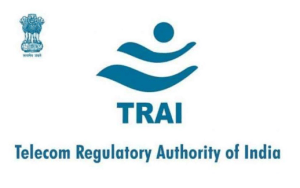

The Telecom Regulatory Authority of India (TRAI) has introduced amendments to enhance consumer protection in the telecom sector. The Telecom Consumers Protection (Twelfth Amendment) Regulations, 2024, and the Telecommunication Tariff (Seventieth Amendment) Order, 2024 were published recently, aim to improve the experience for consumers while ensuring fair practices among service providers.
Consultation Process Overview
On 26th July 2024, TRAI released a consultation paper to assess the existing Telecom Consumer Protection Regulations, 2012. The paper addressed various issues, including tariff choices, the validity of vouchers, and voucher denominations. An Open House Discussion took place on 21st October 2024, allowing stakeholders to voice their opinions and concerns.
The new regulations introduce a Special Tariff Voucher (STV) specifically for Voice and SMS services. This initiative aims to provide more options to consumers, particularly benefiting elderly and rural customers.
Extended Validity Period
The validity period for STVs and Combo Vouchers (CVs) has been increased from 90 days to 365 days. This extension is designed to offer greater flexibility and convenience to consumers, allowing them to use their vouchers at their own pace.
The requirement for colour coding physical vouchers has been abolished. This change reflects the growing trend of online recharges, making it easier for consumers to navigate their options without confusion.
Changes to Top-Up Vouchers
The previous restriction on top-up vouchers, which limited them to denominations of ₹10 and its multiples, has been removed. However, consumers will still have access to at least one ₹10 top-up voucher, ensuring affordability remains a priority.
The amendments align the definitions of STVs and CVs with the latest regulations. Detailed explanatory memorandums accompany the new regulations and orders, providing clarity on the changes implemented.
(NNI / Latest news / Latest news india / India latest news/UPSC Preparation)
What is Athlete Biological Passport?
Latest News: 16th December 2024, UPSC Preparation


The World Anti-Doping Agency (WADA) approved the National Dope Testing Laboratory (NDTL) in New Delhi, enabling NDTL to manage the Athlete Biological Passport (ABP). The ABP is an advancement in anti-doping efforts, allowing for the monitoring of an athlete’s biological markers over time.
Athlete’s Biological Passport (ABP)
The Athlete Biological Passport is a sophisticated system that tracks biological variables, and focuses on changes in blood and steroid levels. This tool aims to detect potential doping practices by comparing an athlete’s biological data over time.
Importance of the Approval
WADA’s approval marks an important milestone for India in its anti-doping initiatives. India is now among 17 countries with a recognized Athlete Passport Management Unit (APMU). This recognition enhances India’s credibility in the global anti-doping movement.
Role of the National Dope Testing Laboratory (NDTL)
The NDTL in New Delhi will oversee the administration of the ABP. It will conduct tests and manage data related to athletes’ biological markers. This role is essential for ensuring compliance with international standards in anti-doping.
The APMU in India will not only serve Indian athletes but also support anti-doping organisations in neighbouring countries. This collaborative approach strengthens regional efforts against doping in sports.
Significance for Clean Athletes
The establishment of the ABP system is designed to protect clean athletes, promotes fair play by ensuring that athletes who adhere to the rules are not unfairly disadvantaged. The initiative aims to encourage a culture of integrity in sports.
With the approval of the NDTL, India is positioned to enhance its anti-doping framework. This development is expected to lead to more rigorous testing and monitoring practices. The commitment to clean sports will continue to grow in the coming years.
(NNI / Latest news / Latest news india / India latest news/UPSC Preparation)
What is Hybrid Agricultural Intelligence?
Latest News: 05th December 2024, UPSC Preparation
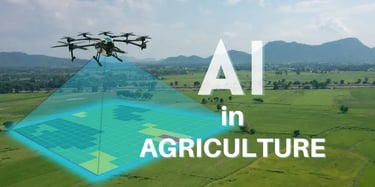

Moravec’s paradox illustrates how AI excels at complex tasks but struggles with simple, interactive ones. This opens the door for combining human intelligence with AI, especially in agriculture. By Integrating traditional farming knowledge with AI, this Hybrid Agricultural Intelligence (HAI) can create sustainable solutions to support Indian farmers.
Importance of Agriculture in India
Agriculture is crucial to India’s economy, which contributes 18.2% to the GDP. Additionally, it supports 42.3% of the population’s livelihoods. Indian farmers possess extensive knowledge developed over centuries. They manage diverse crops, soil types, and weather conditions effectively.
Indigenous Technology Knowledge (ITK)
Indigenous Technology Knowledge (ITK) is vital for small farmers, who comprise over 80% of the farming community. ITK enables farmers to adapt to challenges like limited resources and unpredictable weather. Collaborations with organizations like the Indian Council of Agricultural Research (ICAR) have further strengthened agriculture in India.
Role of Modern Technology
Modern technologies such as AI, drones, and sensors have transformed farming practices globally. These technologies are now being introduced in India to enhance productivity and sustainability. However, small landholdings pose challenges for AI adoption. Most AI tools are designed for larger farms, making them less accessible for smallholders.
The Role of AI in Agriculture
AI has the potential to reduce farming costs . The AI4AI program in Telangana demonstrated improvements in chilli yields and reduced pesticide use. This integration can enhance farmer incomes and resilience.
Building Hybrid Agricultural Intelligence (HAI)
For HAI to thrive, farmers must value their traditional knowledge while adopting AI. Training programs can facilitate this integration. Collaborative platforms can enable farmers to share insights with AI developers.
Partnerships among the government, ICAR, tech companies, and farmer cooperatives are crucial. They ensure the equitable and inclusive development of HAI. Accessible AI tools are essential for small farmers to thrive in the evolving agricultural landscape.
Important Facts for Exams:
Moravec’s Paradox: This paradox illustrates AI’s proficiency in complex tasks while struggling with simple ones. It marks the need for collaboration between human intelligence and AI for effective solutions.
Hybrid Agricultural Intelligence (HAI): HAI merges traditional farming knowledge with AI technology. This combination aims to provide sustainable agricultural solutions, particularly benefiting Indian farmers facing various environmental challenges.
Indigenous Technology Knowledge (ITK): ITK is crucial for small farmers in India. It enables them to adapt to resource limitations and unpredictable weather, enhancing resilience in agricultural practices across diverse regions.
Kisan-e-Mitra: This project facilitates communication between farmers and AI developers. It aims to refine AI tools by incorporating local knowledge, ensuring that technological advancements align with farmers’ needs and practices.
(NNI / Latest news / Latest news india / India latest news/UPSC Preparation)
Approval for 9 Support Centres for Indian Women Facing Distress Abroad
Latest News: 04th December 2024, UPSC Preparation
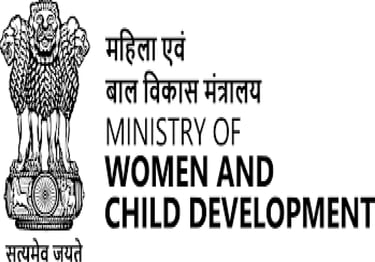

The Ministry of External Affairs has launched an initiative to support women in vulnerable situations. Nine One-Stop Centres (OSCs) will be established globally. Seven centres will be located in the Gulf countries and the remaining two will be in Toronto and Singapore.
Locations of the Centres
The OSCs will provide immediate assistance countries like Bahrain, Kuwait, Oman, Qatar, the UAE, and Saudi Arabia will each have a centre. Jeddah and Riyadh will host two centres in Saudi Arabia. Toronto and Singapore will have centres without shelter facilities.
Funding and Support
A dedicated budget has been allocated for these centres. The Indian Community Welfare Fund (ICWF) will support the initiative. The ICWF has been active in Indian missions worldwide, which focuses on aiding Indian nationals, especially women, in distress.
Expanded ICWF Guidelines
The ICWF updated its guidelines in 2017, which includes support for emergency needs. This includes food, temporary housing, and travel for stranded individuals. Legal aid and medical care are also part of the assistance. The fund helps return the remains of deceased individuals to India.
Specific Measures for Women
The ICWF includes measures for Indian women facing challenges abroad. This includes those abandoned by overseas spouses. Legal assistance and counselling are offered to these women. Legal panels are established in countries with large Indian communities. They provide timely help for various issues.
The fund can cover fines for minor legal issues. This helps secure the release of Indian nationals. The initiative aims to alleviate the unique difficulties faced by Indians abroad, particularly women.
Important Facts for Exams:
One-Stop Centres (OSCs): OSCs provide immediate support for women in vulnerable situations. Seven centres will be established across Gulf countries. Two additional centres will be in Toronto and Singapore.
Indian Community Welfare Fund (ICWF): ICWF assists Indian nationals in distress. It focuses on emergency needs like food and housing. The fund has expanded its support since guidelines were updated in 2017.
Legal Panels: Legal panels support Indian women abroad facing challenges. They provide timely help for legal issues. These panels are set up in countries with large Indian communities.
Emergency Needs Support: The ICWF addresses various emergency needs. This includes legal aid and medical care. The fund also facilitates the return of deceased individuals’ remains to India.
(NNI / Latest news / Latest news india / India latest news/UPSC Preparation)
Urban Infrastructure Development Fund (UIDF)
Latest News: 03rd December 2024, UPSC Preparation


The Urban Infrastructure Development Fund (UIDF) has been created by the government, which aims to enhance urban infrastructure in smaller cities. It specifically targets Tier 2 and Tier 3 cities, which is crucial for improving essential services in these areas.
Purpose of UIDF
The UIDF addresses the shortfall in priority sector lending, which supports State Governments, Union Territories, and local agencies. The fund focuses on developing critical urban services.
Key Areas of Focus
UIDF prioritizes several essential projects, which include sewerage systems, solid waste management, and water supply. Sanitation and drainage system improvements are also included, aiming to enhance living conditions in urban areas.
Financing Structure
The UIDF provides a consistent source of funding, ensures reliable financial support for urban infrastructure projects. This stability is vital for long-term urban development initiatives. The National Housing Bank manages the UIDF, oversees the allocation of funds. It ensures that resources are used effectively for urban projects.
Ministerial Announcement
Shri Tokhan Sahu, Minister of State for Housing and Urban Affairs, announced the UIDF. He shared this information in the Lok Sabha. The announcement marks the government’s commitment to improving urban infrastructure.
The UIDF aims to bridge the infrastructure gap in smaller cities. Improved services will enhance the quality of life for residents. The fund encourages sustainable urban development practices.
Important Facts for Exams:
UIDF: The Urban Infrastructure Development Fund aims to enhance urban infrastructure in smaller cities. It specifically targets Tier 2 and Tier 3 cities for essential service improvements.
National Housing Bank: The National Housing Bank manages the UIDF. This institution ensures effective allocation of funds for urban infrastructure projects across various regions in India.
Priority Sector Lending: Priority sector lending refers to the financial support directed towards vital sectors. The UIDF addresses the shortfall in this lending to enhance urban infrastructure in smaller cities.
(NNI / Latest news / Latest news india / India latest news/UPSC Preparation)
Air Pollution from Wildfires Causes Millions of Deaths
Latest News: 02nd December 2024, UPSC Preparation


A recent study has revealed alarming statistics about air pollution from landscape fires, conducted by Australian researchers, it marks the severe health impacts worldwide. Over 1.5 million deaths occur annually due to this pollution, which emphasizes the urgent need for action, especially in vulnerable regions.
Key Findings
The study indicates that 1.53 million deaths per year are linked to air pollution from wildfires. This data covers the period from 2000 to 2019. The majority of these deaths, over 90%, are in low and middle-income countries. Regions most affected include sub-Saharan Africa, Southeast Asia, South Asia, and East Asia.
Health Impacts
The research identifies specific health issues caused by wildfire-related air pollution. Heart disease accounts for approximately 450,000 deaths. Respiratory diseases contribute to around 220,000 fatalities. Fine particulate matter from wildfires is responsible for 77.6% of these deaths. Surface ozone exposure contributes to 22.4% of the fatalities.
The study links the increasing frequency and intensity of wildfires to climate change. As wildfires become more common, the health risks associated with air pollution are expected to rise. This trend marks the urgent need for comprehensive strategies to mitigate these effects.
Recommendations for Action
The researchers advocate for high-income countries to assist vulnerable nations. Financial and technological support is crucial to help manage health risks. This assistance can also address the inequalities in death rates caused by wildfire pollution. Collaborative efforts are essential to reduce the health impacts of landscape fires.
Countries in sub-Saharan Africa report the highest death rates linked to landscape fires. This region faces important challenges in managing air quality and health outcomes. Strategies tailored to local conditions are necessary to combat these issues effectively.
Important Facts for Exams:
Sub-Saharan Africa: This region includes countries located south of the Sahara Desert. It faces important challenges, including poverty and health disparities. It is particularly affected by air pollution from wildfires.
Fine Particulate Matter: Fine particulate matter, or PM2.5, consists of tiny particles in the air. These particles can penetrate deep into the lungs. They are linked to severe health issues, including heart and respiratory diseases.
Surface Ozone: Surface ozone is a harmful air pollutant formed by chemical reactions. It occurs when sunlight interacts with pollutants from vehicles and industrial facilities. It poses important health risks, especially in urban areas.
(NNI / Latest news / Latest news india / India latest news/UPSC Preparation)
India Re-Elected to UN Peacebuilding Commission for 2025-2026
Latest News: 01st December 2024, UPSC Preparation
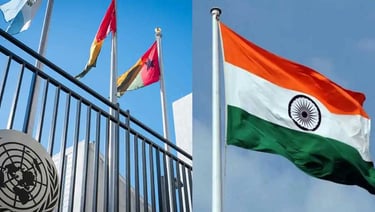

India has been re-elected to the UN Peacebuilding Commission (PBC) for the 2025-2026 term. This reaffirmation of India’s role marks its commitment to global peace efforts, which was made by the Permanent Mission of India to the United Nations on social media.
What is the UN Peacebuilding Commission?
The UN Peacebuilding Commission is an advisory body, which supports peace efforts in conflict-affected countries. Established in December 2005, it aims to strengthen international peace initiatives. The PBC serves as a vital link between the UN General Assembly and the Security Council.
Objectives of the PBC
The primary goal of the PBC is to promote a coordinated approach to peacebuilding, which advises on peacebuilding needs and priorities. The commission works to ensure that peacebuilding efforts are nationally led. It also facilitates discussions on specific countries and regions.
India’s Role in the PBC
India is a founding member of the PBC, which has consistently contributed to UN peacekeeping missions. India’s engagement focuses on promoting stability and peace globally. The country has played role in shaping the commission’s strategies.
Activities of the PBC
The PBC organises discussions on peacebuilding, which allow countries to share experiences and best practices. The commission invites field representatives to its meetings. This includes participants from peacekeeping operations and UN Country Teams.
The PBC plays important role in sustaining peace, which works to coordinate efforts among various actors. The commission helps ensure that peacebuilding initiatives are effective and inclusive. Its advisory capacity enhances the overall impact of peacekeeping efforts.
Important Facts for Exams:
PBC: The UN Peacebuilding Commission was established in December 2005. It serves as an advisory body to enhance international peace initiatives in conflict-affected countries.
UN Country Teams: UN Country Teams consist of UN staff working in a specific country. They coordinate various UN activities and support local peacebuilding efforts. Their involvement is crucial for effective peace initiatives.
Peacekeeping Operations: Peacekeeping operations are deployed by the UN to maintain peace in conflict zones. They involve military, police, and civilian personnel. These operations aim to stabilise regions and protect civilians.
(NNI / Latest news / Latest news india / India latest news/UPSC Preparation)
India’s Oilseed Production and GMO Adoption
Latest News: 24th November 2024, UPSC Preparation


The Solvent Extractors’ Association of India (SEA) advocates for genetically modified (GMO) crops to boost oilseed production. President Sanjeev Asthana brought into light the potential increase in production from 35 million tonnes to 45-50 million tonnes by 2029-30. This would enhance vegetable oil availability by 5-6 million tonnes, reaching 15-17 million tonnes. However, demand for edible oil is projected to rise to 28-32 million tonnes due to the popularity of convenience foods.
Government Initiatives
The Government of India has launched the National Oilseeds Mission and the Palm Oil Mission. These initiatives aim to support oilseed production and meet growing demand. The focus is on enhancing self-sufficiency in edible oil.
Export Support for Rapeseed Meal
Asthana called for increased support for rapeseed meal exports. In 2023-24, India exported 22 lakh tonnes, benefiting farmers. However, a 25% decline in exports in 2024 was noted due to uncompetitive pricing. SEA urges a 15% export incentive to improve competitiveness.
Soyabean Procurement Challenges
The government has raised moisture limits for soyabean procurement from 12% to 15% to assist farmers. Despite this, soyabean prices remain below the minimum support price (MSP) of ₹4,890 per quintal, trading around ₹4,200. Full-scale procurement at MSP is necessary in key states.
Domestic demand for soyabean meal has declined due to the use of DDGS in feed. Low international prices have further pressured the market. The ban on de-oiled rice bran exports has also affected prices, leading to a drop from ₹17,000 to ₹10,000 a tonne.
Futures Trading Suspension
The suspension of futures trading in mustard seeds, soyabean, and crude palm oil since 2021 has disrupted price discovery. SEA requests the government to lift this suspension, as it is vital for farmers and the industry.
The domestic oleochemical industry faces challenges from imports of soap noodles from South-East Asia. SEA proposes either restricting these imports or imposing a 25% duty to protect local manufacturers.
Important Facts for Exams:
SEA – The Solvent Extractors’ Association of India advocates for the adoption of GMO crops. This could increase oilseed production, enhancing India’s vegetable oil availability.
MSP – Minimum Support Price is a government-set price to protect farmers. Soybean prices are currently below MSP, indicating market challenges and the need for full-scale procurement.
Oleochemical Industry – This industry produces chemicals from fats and oils. It faces challenges from low-duty imports of soap noodles, prompting calls for protective measures from SEA.
(NNI / Latest news / Latest news india / India latest news/UPSC Preparation)
Dengue Surge Linked to Climate Change
Latest News: 18th November 2024, UPSC Preparation

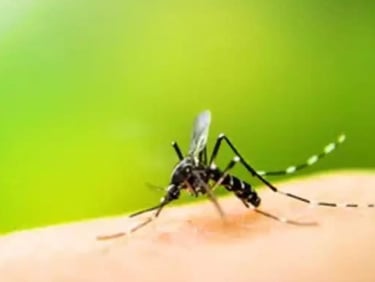
Dengue fever cases are at record levels worldwide, with studies linking 19% of the rise to climate change, which is expected to worsen by 2050. Predictions indicate a potential 40-60% rise in cases, with some areas facing increases of 150-200%.
Current Global Context
Recently, nearly 12 million dengue cases were reported in the Americas. This marks an important rise from 4.6 million in 2023. Locally acquired infections have emerged in California and Florida. India is also experiencing a surge in cases.
Research Findings
Researchers from Stanford and Harvard conducted a study on dengue incidence. They analyzed data from 21 countries in Asia and the Americas. The results show a direct correlation between rising temperatures and increasing dengue infections.
Dengue can cause mild to severe symptoms. Severe cases may lead to bleeding and shock. There are no specific treatments for dengue. Two vaccines exist but face challenges in widespread use.
Impact of Climate Change
The study marks climate change as an important health threat. Reducing global warming could lessen dengue’s impact. Sharp cuts in emissions could reduce the expected 60% rise in infections to about 40%.
Future Predictions
Despite potential emission reductions, some countries will still see increases. Of the 21 countries studied, 17 are predicted to experience climate-driven dengue rises. Areas entering the optimal temperature range for virus transmission face the highest risks.
Mitigating climate change is crucial for controlling dengue. Effective emission cuts can help manage the future burden of this disease.
Important Facts for Exams:
ASTMH: The American Society of Tropical Medicine and Hygiene is a leading organisation in tropical medicine. It hosts annual meetings to discuss global health issues and research findings.
Erin Mordecai: Erin Mordecai is an infectious disease ecologist at Stanford University. She studies the impact of climate change on diseases like dengue and advocates for emission reductions to mitigate health risks.
Breakbone Fever: Breakbone fever is a nickname for dengue due to severe joint pain. This symptom can cause debilitating discomfort for those infected and marks the disease’s serious nature.
Dengue Vaccines: There are two licensed vaccines for dengue. Both vaccines face challenges regarding widespread adoption due to effectiveness concerns and logistical issues in distribution and administration.
(NNI / Latest news / Latest news india / India latest news/UPSC Preparation)
Clean Ganga Mission to Start Dolphin Ambulance
Latest News: 17th November 2024, UPSC Preparation


The National Mission for Clean Ganga (NMCG) is actively promoting conservation efforts and targeting the Ganga River’s biodiversity. They focus particularly on endangered species like the Ganga Dolphin. Recent developments include the introduction of a Dolphin Ambulance. This vehicle will aid in rescuing injured dolphins, which are crucial to the river’s ecosystem.
Dolphin Ambulance Initiative
The Dolphin Ambulance project is titled Advancing Rescue System for the Protection of Stranded Ganges River Dolphins, which has a budget of Rs 1 crore. The ambulance will provide immediate care to injured dolphins. The initiative aims to enhance public awareness about dolphin conservation. Training will be provided to local communities. This training focuses on the effective management of dolphin-related issues.
Additional Conservation Projects
NMCG has approved several other projects aimed at aquatic life conservation. These projects address the broader ecological health of the Ganga and its tributaries. They highlight the river’s importance in maintaining biodiversity. Each project aims to safeguard various species that inhabit the river ecosystem.
Turtle Conservation Efforts
One notable project focuses on endangered turtle species in the Ganga basin. This initiative specifically targets Uttar Pradesh. The project aims to rehabilitate and reintroduce three highly threatened turtle species. Its estimated cost is Rs 78.09 lakh. The project includes establishing a spatial monitoring tool. This tool will be used at the National Chambal Sanctuary to track conservation progress.
Preserving biodiversity in the Ganga is vital for ecological balance. Endangered species like the Ganga Dolphin and various turtles play important roles in the ecosystem. Healthy populations of these species indicate a balanced environment. Conservation efforts contribute to the overall health of the river.
Community Engagement and Awareness
Community involvement is crucial for the success of these initiatives. Raising awareness about the importance of these species encourages local support. Educating communities can lead to better protection measures. Engaged communities are more likely to participate in conservation activities.
The NMCG’s initiatives indicate a strong commitment to environmental conservation. Ongoing projects will continue to evolve as new challenges arise. Future efforts will likely expand to include more species and habitats. The focus remains on restoring the Ganga’s ecological integrity.
Important Facts for Exams:
NMCG: The National Mission for Clean Ganga is focused on preserving the Ganga’s biodiversity. It aims to restore ecological balance while protecting vital species.
Dolphin Ambulance: The Dolphin Ambulance project is designed to rescue injured Ganga Dolphins. It is part of a larger initiative for dolphin conservation and community training.
National Chambal Sanctuary: The National Chambal Sanctuary is crucial for monitoring turtle conservation efforts. It will track the progress of endangered species rehabilitation in the Ganga basin.
Uttar Pradesh Turtle Project: The project in Uttar Pradesh targets three endangered turtle species. It aims to rehabilitate and reintroduce these species to their natural habitat.
(NNI / Latest news / Latest news india / India latest news/UPSC Preparation)
Census 2025
Latest News: 04th November 2024, UPSC Preparation


The Government of India has announced the Census for 2025, which has been widely approved. The Census has been crucial since it began in 1872. It records demographic changes, economic conditions, and socio-political trends. The upcoming Census will focus on three major initiatives: caste enumeration, electoral delimitation, and the National Population Register (NPR).
The Role of Census in India
The Census is a vital tool for shaping public policy. It provides essential data for planning and governance. Since independence, the focus has shifted from caste-based categorization to promoting a unified national identity. Previous Censuses primarily recognized Scheduled Castes (SCs) and Scheduled Tribes (STs), leaving out other castes.
Caste Enumeration
Caste enumeration in 2025 could provide detailed data, including group size, geographical distribution, gender composition, and socio-economic status. Such information would enhance understanding of India’s social structure and inform policies and programmes aimed at social equity.
Electoral Delimitation
Census data is crucial for electoral delimitation. This process involves redrawing constituency boundaries. The 42nd Amendment Act of 1976 froze delimitation until 2000. The 84th Amendment Act of 2002 extended this freeze until 2026. The 2025 Census will provide demographic details necessary for this task. It will help determine constituency boundaries and reservation of seats for various social groups.
National Population Register (NPR)
The NPR aims to create a comprehensive database of every resident in India. This will support the establishment of a National Register of Indian Citizens. Section 14A of the Citizenship Act, of 1955, mandates the registration of all citizens and the issuance of national identity cards. Data for the NPR was previously collected in Census 2011 but was not fully realized.
Preparation for Caste Enumeration
Caste enumeration requires extensive preparation. Historical records, including British India census reports, will be vital. Anthropological and ethnographic surveys, such as the ‘People of India’, will also contribute. Data from sample surveys and administrative records will need to be integrated. This combination will help create a balanced framework for the Census.
Challenges in Data Collection
Collecting caste data poses challenges. Historical data, like that from the 1931 Census, is limited to modern needs. Sample surveys can provide insights but may suffer from biases. Administrative records, such as those from schools and employment, may lack completeness. Despite these challenges, these sources will be crucial for accurate assessment.
Government Responsibility
The Ministry of Home Affairs oversees the Census in India. The Office of the Registrar General and Census Commissioner is responsible for its planning and implementation. Each state and union territory has a Directorate of Census Operations. They conduct the Census in their respective areas.
Importance of Accurate Data
Accurate data from the Census is essential for effective governance. It informs social policies, resource allocation, and electoral processes. The upcoming Census will play a pivotal role in shaping India’s future. It will provide vital information about the country’s demographics and social dynamics.
(NNI / Latest news / Latest news india / India latest news/UPSC Preparation)
Sarvam AI Launches New Language Model for Indian Languages
Latest News: 27th October 2024, UPSC Preparation


Sarvam AI, a rising player in India’s generative AI sector, has introduced a new language model named Sarvam-1. This model is specifically designed for Indian languages and is open-source. It supports ten Indian languages, including Bengali, Hindi, and Tamil, as well as English. Launched in October 2024, Sarvam-1 follows the company’s earlier model, Sarvam 2B, which debuted in August 2024.
Overview of Sarvam-1
Sarvam-1 is developed with 2 billion parameters. Parameters indicate the complexity and capability of an AI model. For comparison, Microsoft’s Phi-3 Mini has 3.8 billion parameters. Sarvam-1 is classified as a small language model (SLM) because it has fewer than ten billion parameters. This contrasts with large language models (LLMs) like OpenAI’s GPT-4, which has over a trillion parameters.
Technical Specifications
Sarvam-1 is powered by 1,024 Graphics Processing Units (GPUs) from Yotta and trained using NVIDIA’s NeMo framework. The model addresses a major challenge: the lack of high-quality training data for Indian languages. Existing datasets often lack the necessary depth and diversity. To overcome this, Sarvam AI created its training corpus, Sarvam-2T.
Training Data
Sarvam-2T consists of an estimated 2 trillion tokens. The dataset is evenly distributed across all ten supported languages. It includes synthetic data generation techniques to enhance the quality of the training data. Approximately 20% of the dataset is in Hindi, with considerable portions in English and programming languages. This diversity aids the model in performing both monolingual and multilingual tasks.
Performance Metrics
Sarvam-1 is reported to be more efficient in handling Indic language scripts than previous LLMs. It uses fewer tokens per word, which contributes to its efficiency. The model has surpassed larger AI models like Meta’s Llama-3 and Google’s Gemma-2 on several benchmarks, including MMLU and ARC-Challenge.
Benchmark Achievements
On the TriviaQA benchmark, Sarvam-1 achieved an accuracy of 86.11 for Indic languages. This score exceeds that of Meta’s Llama-3.1 8B, which scored 61.47. Sarvam-1 also boasts computational efficiency, with inference speeds 4-6 times faster than larger models such as Gemma-2-9B and Llama-3.1-8B.
Practical Applications
The combination of strong performance and high inference efficiency makes Sarvam-1 suitable for practical applications, including deployment on edge devices. This is particularly important for real-world use cases where computational resources may be limited.
Sarvam-1 is available for download on Hugging Face, an online platform for open-source AI models. This accessibility allows developers and researchers to utilise the model for various applications involving Indian languages.
(NNI / Latest news / Latest news india / India latest news/UPSC Preparation)
Bihar Inaugurates First Dry Port to Boost Exports
Latest News: 24th October 2024, UPSC Preparation

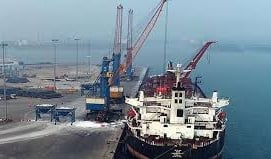
Bihar’s Industry Minister Nitish Mishra inaugurated the state’s first dry port in Bihar, near Patna. This initiative aims to enhance exports of goods produced in Bihar, in partnership with a private company. The dry port is an important step towards improving the logistics and export capabilities of the state.
About Dry Port
A dry port, also known as an inland container depot (ICD), is a logistics facility located inland. It serves as a hub for cargo handling, storage, and transportation. Dry ports connect inland regions with seaports and airports, facilitating efficient movement of goods. They play a crucial role in streamlining logistics.
Why was a Dry Port Needed in Bihar?
Bihar, with its diverse manufacturing locations, required a central facility for cargo consolidation. The state primarily exports agro-based products, garments, and leather goods. The dry port allows for easier transport of these goods, reducing logistics complexities. It also handles customs clearance, alleviating congestion at traditional ports.
Benefits of the Bihar Dry Port
The dry port spans seven acres and operates under a Public-Private Partnership (PPP) model. It is managed by Pristine Magadh Infrastructure Private Limited and the state industry department. Key benefits include:
Streamlined cargo handling
Lower transportation costs
Improved storage and handling capabilities
Export Potential of Bihar
Bihar has a rich agricultural base, producing fruits and vegetables like potatoes, tomatoes, bananas, litchis, and makhana. The state also excels in maize production, with 11 districts focusing on it. Additionally, Bihar exports sponge iron, packed food, waste paper, newsprint, rice, and meat. The leather and garment sectors are also growing. New manufacturing units have opened in districts such as Muzaffarpur and East Champaran. The first consignment exported from the dry port was leather shoes sent to Russia, denoting the state’s export potential.
Government Support for Exports
The Bihar government is committed to expanding its export capacity. Industry Minister Mishra has stated that they are increasing land availability to attract more investments. In the fiscal year 2022-23, Bihar recorded exports worth Rs 20,000 crore. The establishment of the Bihar dry port is expected to boost these figures.
Regional Impact of the Bihar Dry Port
The Bihar dry port is fully operational and approved by the Union Ministry of Finance. It is strategically connected by rail to major gateway ports, including Kolkata and Haldia in West Bengal, Visakhapatnam in Andhra Pradesh, Nhava Sheva in Maharashtra, and Mundra in Gujarat. This connectivity will benefit not only Bihar but also neighboring states like Jharkhand, Uttar Pradesh, and Odisha. The dry port’s operations are set to enhance regional trade and logistics, creating a more integrated market in eastern India. The initiative reflects a broader vision for economic development in Bihar and its surrounding areas.
(NNI / Latest news / Latest news india / India latest news/UPSC Preparation)
India’s Mission Mausam
Latest News: 23rd October 2024, UPSC Preparation

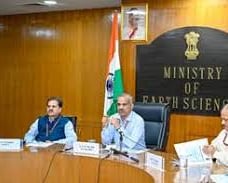
Mission Mausam was launched by the Government of India in September 2024. This initiative aims to enhance weather forecasting and manage specific weather events. The mission seeks to control rainfall, hail, fog, and later, lightning strikes.
Importance of Cloud Physics
Cloud physics is crucial for effective weather modification. It involves studying how clouds behave in different conditions. India needs to strengthen its research in this area. This will help in understanding and manipulating weather patterns more effectively.
To support this research is building a unique cloud chamber at the Indian Institute of Tropical Meteorology (IITM) in Pune. This chamber is designed to simulate cloud formation under controlled conditions.
What is a Cloud Chamber?
A cloud chamber is a closed cylindrical or tubular structure. Inside, water vapour and aerosols are injected. Under specific humidity and temperatures, clouds can develop. The Pune facility will allow scientists to study cloud droplets and ice particles in detail.
Features of the Pune Facility
Unlike basic cloud chambers found in many countries, the Pune facility will have convection properties. This makes it suitable for studying Indian monsoon clouds. There are only a few convective cloud chambers globally, making this facility.
Objectives of the Convective Cloud Chamber
The primary goal is to understand cloud behaviour during normal and extreme conditions. Scientists will study how rain droplets and ice particles form. They will also examine how moisture from cyclones affects the atmosphere. These interactions are vital for weather modification strategies.
Planned Research Activities
Scientists will tailor environmental parameters in the cloud chamber. They will adjust temperature, humidity, and convective conditions to study their effects on clouds. Senior IITM scientist Thara Prabhakaran emphasised the need for controlled environments to test new ideas.
Development Timeline
Over the next 18-24 months, the focus will be on creating advanced instruments and probes. These tools will monitor various conditions inside the chamber. Civil construction of the chamber will begin soon.
India’s Experience with Cloud Seeding
India has previously conducted cloud seeding experiments, notably the Cloud Aerosol Interaction and Precipitation Enhancement Experiment (CAIPEEX). This programme lasted over a decade and had four phases.
Results of CAIPEEX
In the last phase, experiments were conducted in Maharashtra’s Solapur district. Results showed that cloud seeding could enhance rainfall by up to 46% in some areas. On average, it increased rainfall by about 18% over a 100-square-kilometre area downwind of the seeding location.
Limitations of Cloud Seeding
Despite positive results, cloud seeding is not a comprehensive solution for rainfall issues. It has limitations and cannot be relied upon solely to address all weather-related challenges.
Mission Mausam and the establishment of the cloud chamber represent an important step towards advanced weather management in India. The research conducted here could lead to better understanding and control of weather phenomena, particularly during the monsoon season.
(NNI / Latest news / Latest news india / India latest news/UPSC Preparation)
Study Reveals Brain Network Changes Linked to Depression
Latest News: 22nd October 2024, UPSC Preparation

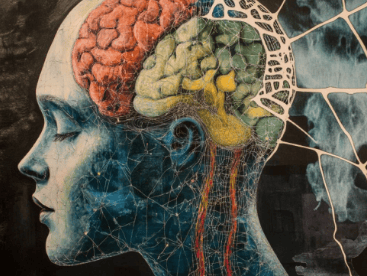
A new study published in Nature reveals that depression alters brain communication patterns, even when symptoms are absent. Using fMRI technology, researchers identified changes in a key brain network related to motivation and attention. This remapping can predict future depression risk in individuals.
About the Salience Network
The salience network is crucial for processing relevant stimuli and regulating emotional responses. Researchers found this network is expanded in individuals with depression compared to healthy controls. This enlargement can indicate vulnerability to developing depression later in life.
Study Overview
The study involved 141 participants with depression and 37 without. Researchers focused on how different brain regions communicate. They discovered that the frontostriatal salience network was larger in those with depression. This network plays a role in mental health, influencing symptoms of depression and anxiety.
Predictive Indicators
The study identified that the salience network’s expansion can predict who may develop depression. Notably, children aged 10-12 who later experienced depression already showed signs of an enlarged salience network. This suggests that changes in brain structure can precede clinical symptoms.
Correlation with Symptoms
The strength of the salience network was correlated with specific depression symptoms, particularly those relating to pleasure and motivation loss. However, the study did not link these changes directly to psychological experiences or depressive thoughts. Instead, the salience network’s remapping serves as a potential risk marker for future depression.
Remapping of Brain Networks
The study indicates that the salience network expands into regions not typically associated with depression. This includes areas involved in effort-related decision-making, given that individuals with depression often struggle with tasks requiring effort.
Implications of Exercise
Researchers suggest that the positive effects of exercise on depression may stem from its influence on the effort-related network. Exercise could help modify brain activity, offering a non-pharmaceutical approach to managing depressive symptoms.
Potential Biomarker for Depression
The stable enlargement of the salience network raises the possibility of it becoming a biomarker for depression. A biomarker is a measurable indicator of a disease, similar to an antigen test for COVID-19. If validated, the size of the salience network could provide a reliable method for identifying depression risk.
Scientific Skepticism
While some researchers are optimistic about the salience network as a biomarker, others remain skeptical. Jonathan Roiser argues that depression is not a single entity and may not have a universal biomarker. He views depressive symptoms as manifestations of various brain states, influenced by multiple brain circuits.
(NNI / Latest news / Latest news india / India latest news/UPSC Preparation)
New Road Safety Sensor Prototype Developed by Researchers
Latest News: 20th October 2024, UPSC Preparation
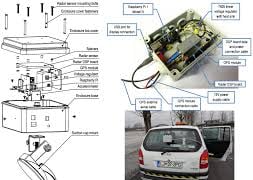

Researchers at the Centre for Nano and Soft Matter Sciences (CeNS) have created a special road safety sensor to improve safety at dangerous road curves where accidents often happen. This new sensor is made from a unique material that can both sense pressure and generate energy.
Development of the Prototype
The sensor uses a new kind of material called a polymer nanocomposite. This material can generate energy using the piezoelectric effect, which means it creates electricity when pressure is applied. The sensor is designed to be placed on movable ramps 100 meters before risky curves, giving oncoming vehicles visual signals, like lights, to alert them.
Material Composition
The key material in the sensor is a polymer nanocomposite. It is made by combining a base polymer, poly (vinylidene difluoride) (PVDF), with a special compound called vanadium disulfide (VS2). The VS2 gives the material a high surface charge, which improves its ability to generate electricity when pressure is applied. This makes the sensor more effective in gathering energy and sending signals.
Scientific Process
Making the Nanoparticles: The researchers first created tiny particles (nanoparticles) of VS2 to improve the piezoelectric performance of the sensor.
Creating the Composite Film: They mixed different amounts of VS2 into the PVDF polymer to create a film that has both pressure-sensing and energy-harvesting abilities.
Research Focus: The team studied how the surface charge of the nanoparticles affects the overall piezoelectric properties of the composite material. The more charge the nanoparticles have, the better the material performs.
Laboratory Demonstration
The researchers made a small version of the road safety sensor in the lab. It worked successfully as a pressure sensor, showing how it could be used in real-life applications. This prototype could also be used in future smart technologies.
Publication and Patent
The findings were published in the Journal of Material Chemistry A, and the researchers have applied for a patent in India. This means the technology has the potential to be developed for commercial use, and more research may follow to improve it further.
(NNI / Latest news / Latest news india / India latest news/UPSC Preparation)
Samarth Scheme – Recent Updates
Latest News: 18th October 2024, UPSC Preparation
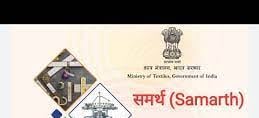

The Samarth Scheme, an important project by the Ministry of Textiles, has been extended for another two years, covering the financial years 2024-25 and 2025-26. The government has set aside Rs. 495 crore for this extension. The goal is to train 300,000 people in different textile-related skills.
What is the Objective of the Samarth Scheme?
The main purpose of the Samarth Scheme is to help create jobs in the textile industry, focusing on the organized sector. It supports skill development across the entire textile value chain except for spinning and weaving. This helps people find employment and boosts the productivity of the industry.
Focus on Training
The training programs under this scheme are updated to meet modern technological changes and market needs. It offers:
Entry-level training for newcomers to the textile sector.
Upskilling and reskilling programs for existing workers, especially in the Apparel and Garmenting sectors. This helps them learn new skills and become more efficient in their work.
The scheme also focuses on workers in traditional textile sectors, like handloom, handicrafts, silk, and jute, ensuring these age-old practices thrive in modern times.
Who Implements the Scheme?
The Samarth Scheme is carried out by Implementing Partners (IPs), which include:
Textile industry players.
Government agencies at both central and state levels.
Sector-specific organizations like the Development Commissioners for Handloom and Handicrafts and the Central Wool Development Board.
Achievements of the Scheme
Since its start, the Samarth Scheme has trained 327,000 people. Of these, 260,000 (about 79.5%) have successfully found jobs, which shows the effectiveness of the training.
Focus on Women’s Employment
The scheme places special emphasis on women’s employment. Out of all the trained candidates, 289,000 (around 88.3%) are women, highlighting the program’s dedication to gender inclusivity in the textile sector.
About the Samarth Scheme
Launched in 2018 by the Ministry of Textiles, the Samarth Scheme is all about promoting skill development in the textile industry. It helps improve productivity and encourages entrepreneurship among artisans. The scheme supports a variety of textile industries, including handlooms and handicrafts, and provides market-driven training programs. It also focuses on creating sustainable livelihoods and promotes the involvement of women artisans. Financial assistance is available for setting up new businesses, and the scheme works with many partners to reach a wide audience for better implementation.
(NNI / Latest news / Latest news india / India latest news/UPSC Preparation)
Researchers Develop Efficient Photocatalyst to Degrade Antibiotics
Latest News: 16th October 2024, UPSC Preparation


Scientists have made an exciting breakthrough in photocatalysis, developing a new catalyst that can efficiently break down sulfamethoxazole (SMX), a common antibiotic. This discovery is important because it addresses growing concerns about how antibiotics in the environment can harm both ecosystems and human health.
Why is Antibiotic Contamination a Problem?
When antibiotics like SMX enter the environment, they create several issues:
Antibiotic Resistance: The overuse of antibiotics in nature can lead to the development of bacteria that are resistant to treatment, making infections harder to cure.
Ecological Impact: These antibiotics can disrupt the balance of local ecosystems, affecting plants, animals, and microorganisms.
Human Health: Long-term exposure to antibiotics in contaminated water can affect human health, potentially leading to health problems.
How was the Catalyst Developed?
The team of scientists, led by Prof. Devasish Chowdhury at the Institute of Advanced Study in Science and Technology (IASST), created the catalyst using nanoparticles from materials like copper zinc tin sulfide (CZTS) and tungsten disulfide (WS2). Here’s what went into it:
They used common, non-toxic materials like zinc chloride, copper chloride, tin chloride, and tungsten disulfide.
These materials were processed through a hydrothermal reaction, which involves heating them in water to form the catalyst.
The final product is made from earth-abundant elements, meaning it’s cheap, safe, and environmentally friendly.
How does it work?
The new CZTS-WS2 composite works by breaking down sulfamethoxazole into less harmful substances. Key features include:
Degradation Mechanism: The catalyst transforms SMX into safer by-products, reducing its harmful impact on the environment.
Reusability: The catalyst remains effective even after multiple uses, which means it can be used over and over, making it cost-efficient.
How was it tested?
To test the catalyst’s ability to break down SMX, scientists used Liquid Chromatography-Mass Spectrometry (LC-MS), which helps identify the substances formed during the breakdown process. This analysis showed that the catalyst produced less harmful intermediates.
Catalyst Performance
The results were impressive:
The catalyst showed over 80% efficiency in scavenging free radicals (unstable molecules that can cause damage).
It also demonstrated antibacterial properties, meaning it could help reduce the presence of harmful bacteria in the environment.
This new CZTS-WS2 composite catalyst offers a promising solution for breaking down antibiotic pollution. It can potentially improve the way we manage antibiotic residues in the environment, reducing the associated risks to ecosystems and human health.
(NNI / Latest news / Latest news india / India latest news/UPSC Preparation)
SAMARTHAK- The First Ship of Multi-Purpose Vessel
Latest News: 15th October 2024, UPSC Preparation

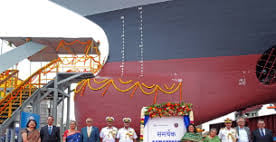
India’s first Multi-Purpose Vessel (MPV) project ship, built by L&T Shipyard for the Indian Navy, has been launched at L&T Kattupalli. This is a significant achievement for Indian shipbuilding, with Admiral Dinesh K Tripathi, the Chief of Naval Staff, leading the ceremony. Mrs. Shashi Tripathi, President of the Naval Wives Welfare Association, launched the vessel, named ‘Samarthak’, which means ‘Supporter’ in Hindi.
What is the MPV Project?
The project to build two MPVs was started on 25 March 2022, when a contract was signed between India’s Ministry of Defence and L&T Shipyard. These vessels are designed to handle many different tasks for the Navy, showing the comprehensive role modern naval ships are expected to play.
Capabilities of the Multi-Purpose Vessels
The MPVs have many uses. They are built to perform tasks such as:
Towing ships: Helping other ships move, especially in emergencies.
Launching and recovering targets: These ships can handle different kinds of targets used during naval training.
Operating uncrewed vehicles: They can deploy and control autonomous vehicles that don’t need a crew.
Trial platform for weapons: The MPVs will be used to test new weapons and sensors developed in India.
Key Specifications
The MPV Samarthak has the following features:
Length: 106 meters (about the length of a football field)
Width: 16.8 meters
Maximum Speed: 15 knots (about 27 km/h)
Why is this Important?
The launch of Samarthak is a big step forward for India’s shipbuilding industry. It aligns with the Indian government’s efforts toward ‘Aatmanirbhar Bharat’ (Self-Reliant India) and the ‘Make in India’ campaign, which aims to boost domestic production in various sectors, including defense. This launch shows India’s growing ability to build advanced ships on its own, strengthening the country’s maritime capabilities.
What is Multi Purpose Vessels (MPVs)?
Multi Purpose Vessels (MPVs) are special types of ships that can carry many different types of cargo, such as containers, large machinery, or heavy loads. They are used for both commercial and offshore operations, such as helping in oil and gas exploration. MPVs often come with heavy lift cranes, which allow them to handle heavy and complex loads. They are also used for humanitarian missions and disaster relief, making them highly versatile and useful in various situations. Additionally, they can work in shallow waters, making them more flexible in where they can operate.
(NNI / Latest news / Latest news india / India latest news/UPSC Preparation)
New Aadhaar Rules Cause Enrollment Issues for Overseas Citizens
Latest News: 14th October 2024, UPSC Preparation


New rules were introduced for people applying for Aadhaar, India’s unique identification number. These changes affect Overseas Citizens of India (OCIs) and Non-Resident Indians (NRIs). Now, anyone over 18 must prove that they have stayed in India for at least 182 days during the previous year to qualify for Aadhaar enrolment.
Overview of the New Rules
The new regulations require anyone wanting to enroll for Aadhaar to prove they have lived in India for the required 182 days. This rule applies to OCIs, foreign nationals, and other applicants. The goal is to ensure that only people with genuine residency in India get an Aadhaar number, helping to prevent fraudulent applications.
Verification Process
The verification of residency is now handled by Revenue officials, similar to how passport checks are done. This process involves stricter checks, which has slowed down the enrolment process. Many applications are delayed or even rejected as officials carefully verify whether applicants meet the new residency requirements.
Impact on Aadhaar Applications
Since the rule change, thousands of Aadhaar applications have been rejected, especially in cities like Bengaluru. Around 10,000 applications are still waiting for verification there. The new verification process is causing a backlog, as many applicants are unable to provide the necessary documents or prove they have lived in India long enough.
Challenges for OCIs and NRIs
While NRIs do not have to meet the 182-day residency requirement, they still face challenges during the verification process. For OCIs, especially those from countries like Nepal, issues have come up due to discrepancies in their documents. For example, some applicants have problems when the dates on their rental agreements don’t match their tax records.
Why were these Changes Made?
The government introduced these changes primarily for national security reasons. Since Aadhaar is widely used as a primary form of identification in India, the government wants to prevent fraudulent applications that could pose security risks. By tightening the rules, they aim to ensure that Aadhaar numbers are issued only to people with a legitimate connection to India.
(NNI / Latest news / Latest news india / India latest news/UPSC Preparation)
National Wildlife Week 2024 – Oct 02 to 08
Latest News: 04th October 2024, UPSC Preparation
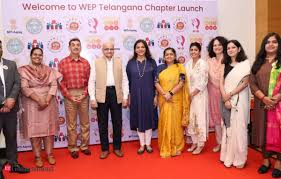

On the eve of Wildlife Week 2024, the Department of Wildlife Protection in Jammu and Kashmir kicked off celebrations with an inaugural event at the beautiful Dachigam National Park. This year’s theme is celebrating nature’s beauty and highlighting the vital importance of conserving wildlife.
Gathering of Young Minds
The event had many excited school students who participated in different activities. These young minds were encouraged to learn more about the environment and understand why it is important to take care of wildlife.
Activities Conducted
Students enjoyed nature walks, educational workshops, and interactive sessions with wildlife experts. These activities helped raise awareness about why protecting wildlife is essential and how it keeps our ecosystems balanced and healthy.
Statements from Officials
Tawheed Ahmad Deva, the Regional Wildlife Warden, spoke about the importance of the event, calling it a chance to renew the commitment to protecting nature. He emphasized that it is crucial to teach young people about environmental responsibility because they are the ones who will protect the planet in the future.
Ongoing Wildlife Week Celebrations
Throughout Wildlife Week, many programs will take place to help people understand the importance of wildlife conservation. These include movie screenings about nature, art competitions, and discussions with experts, all aimed at encouraging community involvement in protecting wildlife.
Key Attendees
Several important figures attended the event, including Rashid Y. Naqash, Parvez Wani, Intesar Suhail, Aliya Mir, and Nadeem Qadri. Each of them plays an important role in efforts to safeguard wildlife in the region.
(NNI / Latest news / Latest news india / India latest news/UPSC Preparation)
Telangana Launches First NITI Aayog Women Entrepreneurship Chapter
Latest News: 03rd October 2024, UPSC Preparation


Telangana has made history as the first state in India to start a chapter of NITI Aayog’s Women Entrepreneurship Platform (WEP). This initiative is focused on helping women entrepreneurs by offering them important tools, resources, and connections to grow their businesses.
Launch and Vision
The WEP Telangana Chapter was officially launched in Hyderabad by BVR Subrahmanyam, CEO of NITI Aayog, along with other government officials. This platform is aimed at encouraging women to start and grow businesses by offering support in areas like digital skills, access to financial services, mentorship, and market opportunities.
Role of WE Hub
WE Hub, India’s first incubation center created specifically to support women entrepreneurs, will manage the WEP in Telangana. WE Hub has a large network and will use its resources to empower women in business, helping them improve their abilities and find better business opportunities.
Importance for Economic Growth
Mr. Subrahmanyam highlighted that women’s entrepreneurship is very important for the future of India’s economy. The WEP Telangana Chapter is designed to tackle some of the big challenges that women entrepreneurs face, such as getting funding, finding mentors, and accessing markets. By addressing these issues, the platform aims to help women build successful businesses.
Future Expansion Plans
Anna Roy, Principal Economic Advisor at NITI Aayog, mentioned that there are plans to expand the WEP to smaller cities, known as tier 2 and tier 3 cities, in the future. The goal is to work with different states to build a supportive environment where women entrepreneurs can thrive, making it easier for them to succeed in business.
WE Bridge Initiative
The ‘WE Bridge’ initiative was also launched, offering a one-stop platform where women entrepreneurs in Telangana can easily access funding, technology, and networking opportunities. This initiative aims to simplify the process for women entrepreneurs to get the support they need, helping them grow and innovate in their businesses.
Objectives of the WEP Telangana Chapter
The WEP Telangana Chapter has three main objectives:
Empower women with digital and financial skills: Helping women learn essential skills that will improve their business operations.
Connect women entrepreneurs with industry leaders: Offering mentorship from experienced business leaders to guide women in growing their businesses.
Facilitate market access: Helping women entrepreneurs connect with investors and find business opportunities that can help them succeed.
This program aims to create an environment where women entrepreneurs can flourish, contributing not only to their personal growth but also to the economic development of Telangana and beyond.
(NNI / Latest news / Latest news india / India latest news/UPSC Preparation)
India Set to Launch Carbon Market by 2026
Latest News: 18th September 2024, UPSC Preparation


India is preparing to create a carbon market through the Carbon Credit Trading Scheme (CCTS), first announced in June 2023. This plan is designed to help reduce harmful emissions in different industries. Under this scheme, sectors that manage to reduce their emissions more than required can sell carbon credits to those that cannot meet their targets. Those who fall short of their goals must buy these credits to offset their emissions.
When will the CCTS start?
The detailed rules for how the CCTS will work were shared by the Bureau of Energy Efficiency (BEE) in August 2024. However, the government has not yet set specific emission reduction targets, which are needed to make the scheme work. BEE officials believe that the scheme might start functioning by 2026.
What is the CCTS?
The CCTS is a system that encourages companies to either reduce or limit their emissions. It is part of India’s commitment to the Paris Agreement of 2016, where the country promised to cut its emissions intensity (the amount of emissions per unit of GDP) by 45% from 2005 levels by 2030. This means that India is working to produce less pollution while growing its economy.
India’s emission reduction goals
Apart from the 2030 target, India also has a long-term goal of achieving net-zero emissions by 2070. This means that by 2070, India aims to balance the amount of greenhouse gases it emits with the amount it removes from the atmosphere. This is important both for global climate efforts and for managing the impact of climate change within India.
Why is India introducing the CCTS?
India’s decision to introduce the CCTS is partly influenced by international actions, such as the European Union’s Carbon Border Adjustment Mechanism (CBAM). Set to start in 2026, the CBAM will place a tax on imported goods based on how much pollution was created during their production. Countries like China and Indonesia have also created carbon markets, which likely encouraged India to pursue similar strategies.
The biggest challenge for the CCTS is making sure it truly helps reduce emissions. Its success depends on setting strong emission targets and ensuring that industries follow the rules.
What is a carbon market?
A carbon market allows companies to trade carbon credits to reduce the overall impact of carbon dioxide (CO2) emissions. One carbon credit equals one ton of CO2 reduced. The idea started with the Kyoto Protocol in 1997. For example, California has a large cap-and-trade program, and the European Union began its Trading System in 2005. There are also voluntary markets, where companies or individuals can buy carbon credits to offset their own emissions. New technologies, like blockchain, are being explored to improve transparency in these markets. Carbon markets also support sustainable development and biodiversity conservation efforts.
(NNI / Latest news / Latest news india / India latest news/UPSC Preparation)
"Navi Mumbai Kicks Off ‘Cleanliness is Service’ Drive with Major Clean-Up at Jagriteshwar Lake"
Latest News: 17th September 2024, Navi-Mumbai, Maharashtra
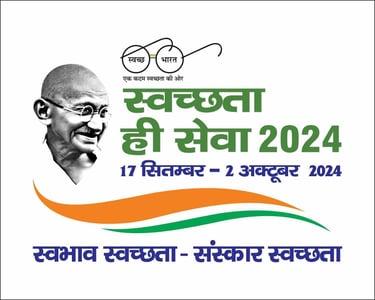

Navi Mumbai Launches 'Cleanliness is Service' Campaign at Jagriteshwar Lake
The Navi Mumbai Municipal Corporation (NMMC) is set to launch the 'Cleanliness is Service' campaign, a significant initiative under the Swachh Bharat Mission, with a comprehensive clean-up drive at Jagriteshwar Lake in Sector 6, Vashi. The campaign, running from September 14 to October 1, 2024, aims to promote cleanliness and community involvement across the city.
As part of the campaign, Dr. Kailas Shinde, Municipal Commissioner of Navi Mumbai, has outlined various activities to be carried out under the 'Cleanliness is Service' fortnight. This initiative aligns with the central government's 'Swachh Bharat Mission' and emphasizes the importance of both personal and cultural cleanliness.
The special clean-up drive is scheduled for September 18, 2024, at 7 a.m., coinciding with the Anant Chaturdashi festival. This day sees large crowds gathering for the immersion of Ganesh idols, necessitating meticulous cleanliness efforts at immersion sites to ensure a safe and tidy environment. The Jagriteshwar Lake, a key immersion site, will be the focus of this intensive clean-up operation.
The event will see active participation from various stakeholders, including esteemed public representatives, volunteers from local NGOs and associations, as well as residents such as women, senior citizens, and students. The clean-up drive aims to engage the community in maintaining hygiene and environmental sustainability.
Dr. Shinde has called upon all cleanliness enthusiasts and Navi Mumbai residents to actively participate in the clean-up campaign and contribute to the city's cleanliness. The initiative is expected to set a benchmark for community-driven cleanliness efforts and enhance the overall sanitation of Navi Mumbai.
The NMMC encourages citizens to join in and support the 'Cleanliness is Service' campaign by participating in the clean-up at Jagriteshwar Lake and other related activities. This effort is pivotal in achieving the goals of the Swachh Bharat Mission and fostering a cleaner, healthier urban environment.
(NNI / Latest news / Latest news india / India latest news/UPSC Preparation)
"Navi Mumbai Municipal Corporation’s Efficient Planning for Ganesh Visarjan on Anant Chaturdashi"
Latest News: 17th September 2024, Navi-Mumbai, Maharashtra
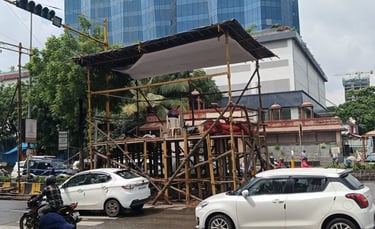

Mumbai’s Ganesh Visarjan: Navi Mumbai Municipal Corporation Ensures Smooth Process for Anant Chaturdashi
As Ganesh Chaturthi celebrations reach their peak, the Navi Mumbai Municipal Corporation (NMMC) is set to handle the Anant Chaturdashi Visarjan with meticulous planning. Since September 7, the festival has been marked by great enthusiasm, with Dr. Kailas Shinde, Municipal Commissioner, leading efforts to ensure an eco-friendly, plastic-free celebration.
In response to a call for more environmentally conscious practices, many citizens have preferred installing clay idols over plaster-of-Paris (POP) ones. To recognize and honor those who chose eco-friendly Ganesh idols, the NMMC has distributed certificates of appreciation to devotees who have opted for clay idols, underscoring their commitment to cleanliness and environmental protection.
To safeguard natural water sources, the NMMC has created a significant number of artificial ponds, totaling 137 across its eight departmental areas. These ponds have seen a high level of engagement from environmentally conscious citizens, contributing to the smooth execution of the immersion process.
With a total of 159 immersion sites, including 22 natural and 137 artificial, the NMMC has ensured efficient arrangements for the immersion of Ganesh idols on various days of the festival. On Anant Chaturdashi alone, 35,720 idols are expected to be immersed, with meticulous arrangements in place for a smooth process.
Under the guidance of Dr. Shinde, the NMMC has bolstered preparations for September 17, the day of Anant Chaturdashi, by enhancing arrangements at all immersion sites. This includes deploying a large number of volunteers and lifeguards at all 22 natural immersion sites, along with firefighters and police personnel to maintain law and order. CCTV cameras have been installed to monitor crowd movement and ensure safety.
The immersion sites are equipped with medium and large-sized pontoons, forklifts, and cranes to handle the large-scale immersions. An advanced mechanical pontoon has been set up at the Dharan Lake in Koparkhairane to facilitate the immersion of larger idols efficiently.
To manage the expected large crowds, the NMMC has implemented bamboo barricades, backup power generators, and medical first-aid facilities. Tables have been arranged for orderly queues, and special platforms have been erected for guidance and coordination of the devotees.
The NMMC has also made provisions for the segregation and processing of 'wet' and 'dry' offerings brought along with the idols. Special vehicles are in place to transport these offerings to designated processing sites, where they are treated with due reverence. Additionally, fruits and food items are being distributed to needy children and citizens.
At Chhatrapati Shivaji Maharaj Chowk in Vashi, known for its high footfall during Ganesh Visarjan, the NMMC and police have set up comprehensive arrangements to ensure the safety and smooth execution of the event. A large stage will be set up to shower floral tributes on the idols as they proceed to the immersion site.
The NMMC, led by Dr. Shinde, is calling on citizens to continue their excellent cooperation to ensure that the Ganesh Visarjan festivities, especially on Anant Chaturdashi, proceed smoothly and without any hitches.
(NNI / Latest news / Latest news india / India latest news/UPSC Preparation)
Gram Nyayalayas Act, 2008
Latest News: 17th September 2024, UPSC Preparation


The Supreme Court of India has stressed the urgent need to improve access to justice, especially in rural areas. This has led to renewed calls for setting up gram nyayalayas (village courts) across the country. However, despite being introduced more than a decade ago, the Gram Nyayalayas Act, 2008, has faced many challenges that have slowed its implementation.
What is the Gram Nyayalayas Act, 2008?
The Gram Nyayalayas Act was passed in 2008 to bring the judicial system closer to rural populations. The goal of the Act is to decentralize the court system, making justice more accessible, faster, and less expensive for people living in villages. By setting up courts at the grassroots level, it aims to reduce the burden on higher courts and make the legal process simpler for everyone.
Key Features of the Act
Accessibility: Gram nyayalayas are designed to function at the panchayat (village council) level, ensuring that people in rural areas don’t have to travel far for legal help.
Jurisdiction: These courts handle civil cases, like land or property disputes, and minor criminal cases, such as theft or public nuisances.
Simplified Procedures: Unlike regular courts, gram nyayalayas focus on informal and accessible ways to resolve disputes, often encouraging conciliation or settlement instead of lengthy legal battles.
Current Status and Challenges in Implementation
Even though gram nyayalayas have the potential to make justice more accessible, their establishment has been slow. Here are some facts:
Less than 500 gram nyayalayas have been set up, far below the target of 2,500.
Major states like Uttar Pradesh and Bihar, which have large rural populations, still do not have functioning village courts.
Why Is It Difficult to Set Up Gram Nyayalayas?
Several factors have made it hard to set up and run gram nyayalayas effectively:
Infrastructure Issues: Many of these courts do not have proper buildings or facilities to hold hearings.
Financial Constraints: There isn’t enough funding to ensure that these courts can operate smoothly and pay for staff and equipment.
Low Awareness: Many rural citizens are not aware that gram nyayalayas exist, so they do not use them.
Integration Problems: There is not enough coordination between gram nyayalayas and the higher courts, making it difficult to handle appeals and provide proper oversight.
What Happens When Gram Nyayalayas Don’t Work?
The slow implementation of gram nyayalayas has several negative effects:
Rural litigants have to travel long distances to reach regular courts, which is time-consuming and costly.
Minor cases remain unresolved at the local level, adding to the overall backlog in India’s already overburdened court system.
The Potential Benefits of Gram Nyayalayas
Despite the challenges, gram nyayalayas have the potential to significantly improve the judicial process in rural areas:
Decentralized Justice: By reducing the need for rural citizens to travel to distant courts, they can save both time and money.
Community-Centric Approach: Since these courts promote conciliation, they align with traditional methods of conflict resolution that are familiar to many rural communities.
Inclusiveness: The simplified processes allow people to represent themselves in court, improving access to justice for those who cannot afford lawyers.
The Way Forward
To make gram nyayalayas work as intended, several changes need to be made:
Increase Resources: More funding and better infrastructure are needed to ensure these courts can operate effectively.
Public Awareness: People in rural areas must be made aware of their rights and the existence of these village courts.
Better Integration: Stronger links between gram nyayalayas and the wider judicial system are needed to ensure proper oversight and the smooth handling of appeals.
With these reforms, gram nyayalayas can help make justice more accessible and affordable for rural communities across India.
(NNI / Latest news / Latest news india / India latest news/UPSC Preparation)
"Navi Mumbai Municipal Corporation Introduces Online Application Facility for Various Welfare Schemes"
Latest News: 15th September 2024, Navi-Mumbai, Maharashtra
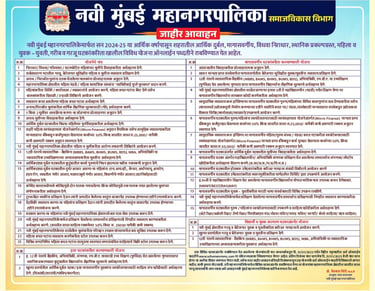

The Navi Mumbai Municipal Corporation (NMMC) has announced a major upgrade to its welfare programs with the introduction of an online application system. This new facility aims to streamline the application process for various schemes designed to support economically disadvantaged, backward classes, widows, and other vulnerable groups in the community.
Until now, applicants had to submit their forms manually at municipal offices, a process that was often cumbersome and time-consuming. With the new online system, residents can now apply for a range of welfare schemes from the comfort of their homes. The online application process will be available on the dedicated website www.schemenmmc.com until January 31, 2025.
The welfare schemes covered under this initiative include:
For Women and Children:
Financial assistance for the marriages of daughters of destitute, widowed, or divorced women.
Vocational training for unemployed educated women and girls from general categories.
Grants for adoptive parents of orphaned or abandoned children.
"Savitribai Phule Award" for women’s organizations and social institutions.
Workshops and training sessions for women, and kits for women’s self-help groups.
Financial support for women’s self-help groups engaged in business.
Annual educational fee assistance for orphans and abandoned children.
Incentives for couples undergoing surgeries for one or two daughters.
Financial aid for the marriage of orphan girls.
Support for the remarriage of widows from economically weak backgrounds.
Microfinance grants for women’s self-help groups undertaking personal or group businesses.
Health check-up camps for women and girls.
Financial support for young women pursuing higher professional education.
One-time grant for widows from economically weaker sections after the death of their earning spouse.
Financial aid for women with serious illnesses (e.g., HIV, cancer) for livelihood support.
Assistance for children who lost one or both parents due to COVID-19.
Training and market support for products created by transgender individuals.
Market support for products created by women in sex work.
Provision of bus passes for domestic workers.
Financial aid for beneficiaries undertaking vocational training provided by NMMC.
Bus services for students from NMMC schools.
Stalls for women’s self-help groups to conduct business.
Temporary stalls for seasonal festivals for women’s self-help groups.
For Backward Classes:
Incentives for inter-caste marriages.
Vocational training for educated unemployed youth from backward classes.
Educational fee assistance for high-achieving students from backward classes.
Financial aid for bicycles for school-going students from backward classes.
Entrepreneurship development workshops for backward class groups.
Microfinance support for self-employment among backward class individuals.
Grants for self-employment projects in backward class organizations.
Financial assistance for the marriage of daughters from economically weaker backward class families.
Financial aid for purchasing computers or laptops for backward class students in higher education.
Career guidance workshops for promising candidates from backward classes.
Rehabilitation programs for addiction among backward class individuals.
Free monthly passes for backward class students from 10th grade to college.
Marathi language promotion activities for youth from backward classes.
Financial aid for starting businesses related to vocational training provided by NMMC.
Support for purchasing equipment and materials for self-employment.
For Students and Youth:
Career guidance for needy and unemployed youth.
Training for needy and unemployed youth in open categories.
Financial support for higher education in professional fields for youth.
For Other Groups:
Educational fee assistance for local project-affected students pursuing higher education.
Financial aid for purchasing equipment for self-employment among economically weaker sections.
The municipal authorities urge all eligible beneficiaries to take advantage of these welfare schemes by applying online before the deadline. For more information or assistance, residents can contact the designated officials in various regions of Navi Mumbai.
Municipal Commissioner Dr. Kailas Shinde encourages all eligible individuals to utilize these schemes to improve their quality of life and contribute to the overall development of the community.
(NNI / Latest news / Latest news india / India latest news/UPSC Preparation)
IIL Partners with ICMR for India’s First Zika Vaccine
Latest News: 15th September 2024, UPSC Preparation
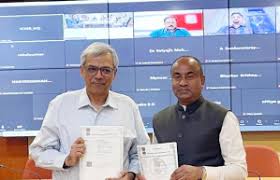

Indian Immunologicals Limited (IIL) has joined hands with the Indian Council of Medical Research (ICMR) to develop India’s first Zika virus vaccine. They have signed an agreement called a Memorandum of Agreement (MoA) to work together on this project. The main goal is to conduct phase I clinical trials, which will test the vaccine for its safety and effectiveness in humans.
ICMR will pay for the phase I clinical trials. This includes covering all the costs for running the trials, monitoring the participants, and performing the necessary investigations to see how the vaccine works. These trials will be done in different locations in India to make sure the vaccine is thoroughly tested.
ICMR’s Phase I Trial Network
ICMR has a network of places across India where early-stage trials, like phase I clinical trials, are conducted. This network helps researchers carry out their work smoothly within the country. The trials for the Zika vaccine will take place at these four sites:
ACTREC in Mumbai
KEM Hospital in Mumbai
SRM in Chennai
PGIMER in Chandigarh
This network allows Indian scientists to test new vaccines for safety without needing to go outside the country.
Collaboration with Griffith University
In addition to working with ICMR, IIL is also partnering with Griffith University in Australia to develop the Zika vaccine. The vaccine has already gone through many pre-clinical tests, which are tests done before trying it on humans. The project has also received approval to make GMP (Good Manufacturing Practice) grade materials, which are necessary for making vaccines that are safe and of high quality for human use.
IIL’s Broader Vaccine Development Efforts
Indian Immunologicals is not only focusing on the Zika vaccine. It is also working on vaccines for other important diseases, such as:
Kyasanur Forest Disease (KFD)
Chikungunya
An intra-nasal booster for SARS-CoV-2 (the virus that causes COVID-19)
This shows IIL’s dedication to creating vaccines for emerging infectious diseases, which are diseases that are becoming more common but don’t have enough treatment options.
Zika Virus Overview
The Zika virus is spread mainly by mosquito bites. Right now, there is no licensed vaccine to prevent Zika, making this new vaccine very important for public health.
About Indian Immunologicals
Indian Immunologicals Limited (IIL) was started in 1982 and is one of India’s biggest vaccine producers. It was the first company in India to make a recombinant Hepatitis B vaccine. IIL creates vaccines for both animals and humans. Some of the important vaccines in its portfolio include:
Rabies
DPT (Diphtheria, Pertussis, and Tetanus)
Typhoid
IIL is part of the National Dairy Development Board, and it has more than 15 manufacturing plants across India. The company is also involved in research and development (R&D), playing a key role in helping India become more self-sufficient in vaccination programs.
About the Indian Council of Medical Research (ICMR)
The Indian Council of Medical Research (ICMR) was founded in 1911, making it one of the oldest medical research organizations in the world. It works under the Department of Health Research, which is part of the Government of India. ICMR has its headquarters in New Delhi and operates 26 institutes across India. The council played a major role in eradicating polio in India and also helped coordinate COVID-19 vaccine development. It is involved in many other global health initiatives and launched the National Health Portal in 2015 to provide health information to the public.
(NNI / Latest news / Latest news india / India latest news/UPSC Preparation)
"Environmental Champions Honored as Mumbai Successfully Completes Ganesh Idol Immersion with Eco-Friendly Practices"
Latest News: 13th September 2024, Navi-Mumbai, Maharashtra
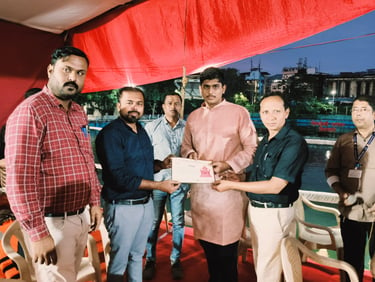

In a commendable display of environmental responsibility, the Navi Mumbai Municipal Corporation (NMMC) honored citizens who upheld eco-friendly practices during the Ganesh Chaturthi festival. The municipality awarded 'Cleanliness and Environmental Friend' certificates to those who installed clay Ganesh idols instead of plaster ones and supported the 'Eco-Friendly Plastic-Free Ganesh Festival' initiative. This effort aimed to promote environmental awareness and reduce pollution associated with the festival. The ceremony highlighted the city's commitment to preserving the environment while celebrating traditional festivals.
On the fifth day of the immersion process, NMMC effectively managed the immersion of 7,940 Ganesh idols across 159 designated sites, including both natural and artificial immersion points. A total of 1,925 idols were immersed in artificial tanks to protect natural water bodies. The meticulous arrangements and effective management ensured a smooth and pollution-free immersion process. This proactive approach has received positive feedback from the community, reflecting a growing awareness and commitment to environmental conservation.
(NNI / Latest news / Latest news india / India latest news/UPSC Preparation)
"New Homeless Shelter Opens in Ghansoli, Navi Mumbai to Support the City's Unhoused Population"
Latest News: 12th September 2024, Navi-Mumbai, Maharashtra
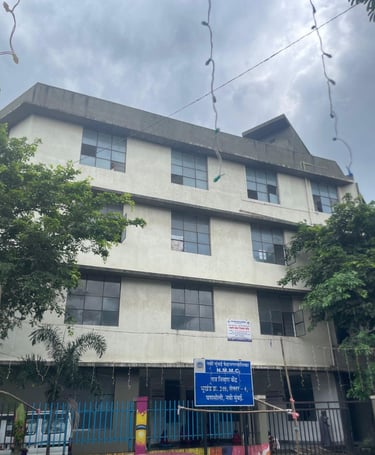

In a significant step to address the needs of the homeless and destitute citizens, the Navi Mumbai Municipal Corporation (NMMC) has inaugurated a new homeless shelter in Ghansoli. The shelter, located at Plot No. 240, Sector 4, Ghansoli, began operations on March 15, 2024.
The newly established shelter is a three-story building with the capacity to accommodate up to 103 beneficiaries. The first floor is designated for men, the second floor for women, and the third floor is reserved for families, ensuring that all groups have appropriate facilities.
The shelter aims to provide essential services and support to those without any form of housing, particularly individuals who are living on the streets or in open spaces. It offers a range of services, including counseling and information about the shelter itself. Beneficiaries are assisted in moving to the shelter based on their needs and preferences.
The facilities at the shelter include free medical services, tea, breakfast, and meals, along with access to hot water for bathing, clean drinking water, and recreational activities. These services are provided at no cost to the residents.
The shelter is operated by the NMMC through the Astha Social Development Service Organization, which has been tasked with managing the facility.
Navi Mumbai Municipal Commissioner Dr. Kailas Shinde has appealed to the public to report any homeless individuals (including the elderly, women, children, and disabled persons) found on the streets within the NMMC area. Reports can be made to Mr. Tushar Pawar at 98816 36168 and Mr. Rahul Wadhe at 86693 93306.
This initiative reflects the NMMC’s ongoing commitment to improving the welfare of its most vulnerable residents and providing them with a safe and supportive environment.
(NNI / Latest news / Latest news india / India latest news/UPSC Preparation)
MeitY Launches Third Phase of Digital India Capacity Building
Latest News: 12th September 2024, UPSC Preparation


The Ministry of Electronics and Information Technology (MeitY) has started the third phase of its capacity-building programmes to improve the digital skills of government officials. These officials come from both Central and State governments, and the training focuses on key digital areas.
What are the Key Focus Areas?
The programme aims to strengthen government officials’ knowledge in several important areas, including:
Digital Public Infrastructure (systems that provide government services using digital platforms).
Contract and Procurement Management (how the government manages buying and selling goods and services).
Artificial Intelligence (AI) & Machine Learning (ML) (using smart technologies for better decision-making).
Managing Large Digital Transformation Projects (handling major projects that involve using new technologies).
Digital Governance (improving the way governments use technology to serve citizens).
Data Management (handling large amounts of data effectively and securely).
How are the training programmes being conducted?
Specialised training programmes are being offered all over the country. One of these sessions, focused on Digital Public Infrastructure, started on September 10, 2024, at the India Habitat Centre in Delhi. This is part of a series of regional programmes designed to strengthen digital skills among officials.
The National e-Governance Division (NeGD) is leading this training effort, with help from the National Institute for Smart Governance (NISG). These organisations are responsible for ensuring that the training is guided by experts and well-organised.
What is the focus on Digital Public Goods?
The NeGD is working hard to promote Digital Public Goods (DPGs), which are systems that allow citizens to easily access public services through digital platforms. The goal of the training sessions is to help officials manage DPG projects effectively so that more people can benefit from digital public services.
The training combines both theoretical knowledge (learning the concepts) and practical case studies (real-world examples). Industry experts are involved to share their insights. This approach ensures that officials gain a deeper understanding and practical skills to apply in their own departments.
What is Digital Public Infrastructure?
crefers to the digital systems that help provide government services and public goods, such as:
e-Governance tools (online platforms for government services).
Open data platforms (data made publicly available to improve transparency).
Identity management systems (like India’s Aadhaar system, which provides a digital identity for citizens).
DPI helps include more people in the digital world by giving them access to important services through the internet. Countries with strong DPI systems often see better economic growth and more citizen participation in governance. New technologies, like blockchain, are also being integrated into DPI to improve efficiency and security.
About the Ministry of Electronics and Information Technology (MeitY)
MeitY, created in 2016, is responsible for policies related to information technology, e-governance, and electronics manufacturing in India. It leads initiatives like Digital India, which aims to create a digitally empowered society. MeitY also supports innovation through programmes like Startup India, develops important policies like the National Digital Communications Policy, and works on cybersecurity and data protection laws, including the Personal Data Protection Bill. Additionally, it plays a key role in international technology agreements and helps develop skills in the electronics and IT sectors.
(NNI / Latest news / Latest news india / India latest news/UPSC Preparation)
Yudh Abhyas-2024
Latest News: 11th September 2024, UPSC Preparation
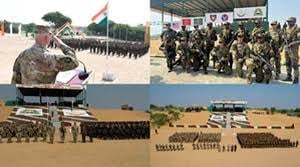

The 20th edition of the India-USA Joint Military Exercise, Yudh Abhyas 2024, started on September 9, 2024, at the Foreign Training Node in Mahajan Field Firing Ranges, Rajasthan. This exercise, scheduled from September 9 to 22, has grown larger and more complex compared to previous years.
History of YUDH ABHYAS
Yudh Abhyas has been held every year since 2004. The location alternates between India and the USA, providing both countries with a chance to work together and improve their military skills. It has become an important event for strengthening their defense ties.
This year, both nations are sending strong forces. India is represented by 600 personnel from the RAJPUT Regiment and other army branches. The United States has sent an equally strong team from the 1-24 Battalion of the 11th Airborne Division, based in Alaska.
Aims of the Exercise
The main goal of Yudh Abhyas is to improve how Indian and US forces work together to conduct counter-terrorism operations. These operations take place in unique, difficult situations, following the rules set out by the United Nations (Chapter VII).
What are the Focus Areas?
The exercise takes place in a semi-desert setting. Important activities include:
Working together to respond to terrorist actions
Joint planning for missions
Field training that mimics real counter-terrorism operations
Benefits of the Exercise
Yudh Abhyas allows both countries to share knowledge about tactics and military strategies, improving how their forces work together. It helps build teamwork and friendship between Indian and US forces and strengthens defense cooperation, which supports a stronger relationship between the two nations.
About Yudh Abhyas
Yudh Abhyas is an annual exercise between the Indian and US military forces, focusing on improving how they work together during counter-terrorism missions. The exercise started in 2004 and takes place in both India and the US in alternating years. In addition to practicing tactical operations, it includes live-fire drills and training in providing humanitarian assistance. It also involves air and logistical support, reflecting the growing strategic partnership between the two countries.
(NNI / Latest news / Latest news india / India latest news/UPSC Preparation)
SpaceX Aims to Launch Uncrewed Starships to Mars in Two Years
Latest News: 10th September 2024, UPSC Preparation


SpaceX is preparing to launch its first uncrewed Starship missions to Mars in the next two years, aligning with the ideal timing for space travel between Earth and Mars, known as the Earth-Mars transfer window. Elon Musk, the CEO of SpaceX, shared this announcement on social media. These initial missions are critical because their success will help plan for human missions to Mars within the next four years.
Uncrewed Starship Mission Goals
The primary goal of the uncrewed Starship missions is to test how well the spacecraft can land on Mars. These tests are crucial to ensure the technology works correctly before humans are sent on future missions. If the landings are successful, they will be a key step toward exploring Mars with humans onboard.
Timeline for SpaceX’s Mars Mission
Next 2 Years: The first uncrewed missions to Mars will be launched to test Starship’s reliability.
Next 4 Years: Crewed missions will be launched, provided the uncrewed flights succeed.
Next 20 Years: SpaceX aims to build a self-sustaining city on Mars, allowing humans to live there permanently.
Previous Achievements
In April, Musk mentioned that SpaceX hoped to land its first uncrewed Starship on Mars within five years, with human missions following two years later. SpaceX has already made important progress, such as a successful test of Starship in June, when it safely returned and landed in the Indian Ocean.
SpaceX’s Future Goals
Elon Musk sees the Starship as a game-changing spacecraft that could be used not only for Mars missions but also for trips to the Moon and other space exploration missions. The goal is for Starship to serve as a versatile platform for many types of missions over the coming decade.
About SpaceX
SpaceX, founded by Elon Musk in 2002, was the first private company to reach space orbit in 2008 with its Falcon 1 rocket. In 2012, its Dragon spacecraft became the first commercial vehicle to deliver cargo to the International Space Station (ISS). SpaceX also focuses on making rockets reusable to reduce the costs of space travel. In 2020, SpaceX successfully launched astronauts as part of NASA’s Commercial Crew Program, marking the first time astronauts were launched from U.S. soil since 2011.
(NNI / Latest news / Latest news india / India latest news/UPSC Preparation)
New Antarctic Dragonfish Species Discovered by Researchers
Latest News: 09th September 2024, UPSC Preparation
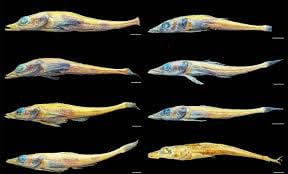

Antarctica’s waters are incredibly rich in marine life, with many species still unknown to science. Recent research by William & Mary’s Virginia Institute of Marine
Science has revealed a new species of fish in the Antarctic Peninsula. This new species is called the Banded Dragonfish (Akarotaxis gouldae).
Identification of the New Species
Researchers discovered the Banded Dragonfish while studying tiny sea creatures called zooplankton. Initially, they thought it was a different species, Akarotaxis nudiceps. However, as the fish grew, they noticed it had distinct features that set it apart. These features include two dark vertical bands and other unique traits that helped in its accurate identification.
Naming the New Species
The Banded Dragonfish is named after the Laurence M Gould, an Antarctic research vessel that played a significant role in scientific exploration but has now been retired. The Banded Dragonfish has a slim body, a broad snout, a long mouth, and large, oval-shaped eyes. Its most distinguishing features are the two dark bands on its sides.
How Researchers Studied the Fish
Researchers used genetic tests and a method called phylogenetic analysis to understand the evolution of this fish. They found that Akarotaxis gouldae and Akarotaxis nudiceps split into different species about 780,000 years ago. This separation likely occurred because of the isolated, glacial conditions that led to them becoming distinct species over time. The Banded Dragonfish is found only in the deep waters of the western Antarctic Peninsula. Studying this fish is challenging because it lives in very deep and remote areas of the ocean.
Significance of the Discovery
Finding Akarotaxis gouldae highlights the rich but hidden diversity in Antarctic waters. It also shows there could be many more unknown species waiting to be discovered as scientists continue exploring this under-researched area.
Facts About Antarctic Dragonfish
Habitat: Lives in very deep Antarctic waters, up to 2,000 meters deep.
Body: Transparent bodies to help them blend in and special proteins in their blood to stop ice from forming.
Diet: Eats small fish and krill.
Size: Can grow up to 38 cm long.
Bioluminescence: Their bodies can glow in the dark, helping them communicate and hide from predators.
Unique Features: No scales and has long teeth to catch prey.
(NNI / Latest news / Latest news india / India latest news/UPSC Preparation)
India’s First Bio-Hydrogen Project
Latest News: 08th September 2024, UPSC Preparation


The Indian government awarded a contract to develop the country’s first bio-hydrogen project, led by Gensol Engineering in collaboration with Matrix Gas & Renewables. Valued at Rs 164 crore, the project aims to align with the National Green Hydrogen Mission and is set to process 25 tonnes of bio-waste daily, producing 1 tonne of green hydrogen using advanced gasification technology over 18 months.
What is Bio-Hydrogen?
Bio-hydrogen is a type of hydrogen that is produced from organic materials, such as plants, food waste, or certain microorganisms. Unlike traditional hydrogen, which is typically made from fossil fuels like coal or natural gas, bio-hydrogen comes from natural sources like agricultural leftovers, food scraps, and industrial waste. This makes it a cleaner and more eco-friendly alternative. There are different ways to produce bio-hydrogen:
Biophotolysis: This method uses sunlight to split water molecules in organisms like algae, releasing hydrogen.
Dark Fermentation: Here, bacteria break down organic material without oxygen, creating hydrogen as a byproduct.
In the new Indian project, Gensol Engineering will use a technology called Plasma-Induced Radiant Energy-Based Gasification System (GH2-PREGS). This advanced process turns carbon-based waste into hydrogen gas.
Why is Bio-Hydrogen Important for India?
India is working hard to reduce its dependence on fossil fuels and move towards greener energy. One of the key initiatives supporting this is the National Green Hydrogen Mission. Given that India produces a huge amount of agricultural waste every year, bio-hydrogen provides a way to use that waste to create clean energy. This approach not only reduces environmental pollution but also supports industries, like steel and cement, that are looking to lower their emissions.
Bio-hydrogen also has the potential to help rural communities by setting up local plants that turn farm waste into energy, providing jobs and cleaner energy sources.
Opportunities for India’s Bio-Hydrogen Sector
India generates around 380 million tonnes of agricultural waste each year, providing a huge opportunity for bio-hydrogen production. Turning waste into clean energy can reduce pollution and contribute to a greener future. Additionally, industries like steel and cement, which are hard to make environmentally friendly, can use bio-hydrogen to lower their emissions.
(NNI / Latest news / Latest news india / India latest news/UPSC Preparation)
2024 State of Global Air Report
Latest News: 07th September 2024, UPSC Preparation

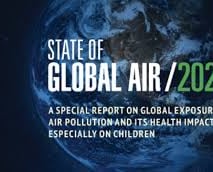
The 2024 State of Global Air Report brings alarming news about air pollution and its impact on children’s health in India. Every day, 464 children under the age of five die because of air pollution, making it the second largest cause of death for young children worldwide. This problem is especially severe in low and middle-income countries like India, and it needs immediate attention.
What is PM2.5 Particles?
PM2.5 particles are tiny bits of pollution that can be found in the air. These particles are very dangerous because they are small enough to get deep into our lungs. Once they enter the body, they can cause serious health problems like heart and lung diseases, diabetes, and even dementia. More than 90% of deaths related to air pollution are linked to these PM2.5 particles.
Impact on Young Children
Young children are particularly vulnerable to the harmful effects of air pollution. In 2021, nearly 5 million children worldwide died from indoor air pollution caused by dirty fuels like wood or coal used for cooking and heating. This shows how badly air pollution is affecting children’s health and why urgent action is needed to protect them.
What causes Air Pollution?
The main causes of air pollution include:
Fossil fuel power plants (such as coal and oil power stations)
Traffic emissions (pollution from cars and trucks)
Poor waste management (garbage that is not properly disposed of)
Burning of agricultural waste (farmers burning crop residue)
These sources of pollution are especially severe in cities like Delhi, making urban areas more polluted.
Rankings and Life Expectancy
According to the 6th Annual World Air Quality Report, New Delhi is the most polluted capital city in the world. India ranks third overall for the highest pollution levels globally. The toxic air reduces the life expectancy of people living in the country. On average, people in India are living three years less because of the bad air quality. In the northern areas, like Delhi, people could lose as much as 5.4 years of their lives due to pollution.
Government Efforts to Tackle the Crisis
The government is aware of the seriousness of the situation. A joint meeting was planned for September 5, 2024, where different government departments would come together to create a plan to reduce pollution in Delhi. The goal is to find effective strategies to tackle the issue.
The report stresses that air pollution is a bigger threat to public health than malnutrition and alcohol. It also reduces life expectancy more than smoking. To protect the health of current and future generations, it is essential to take strong and urgent measures to reduce air pollution as soon as possible.
(NNI / Latest news / Latest news india / India latest news/UPSC Preparation)
India Launches National Blockchain Framework
Latest News: 06th September 2024, UPSC Preparation
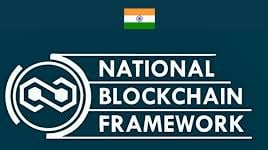

The Ministry of Labour & Employment (MoLE) recently highlighted the success of the eShram portal, which has registered over 30 crore unorganised workers since it was launched three years ago. This is a big achievement, as it shows progress in creating a digital system to support unorganised workers in India.
Purpose of the eShram Portal
The eShram portal is meant to be a “One-Stop-Solution” for unorganised workers. This means it helps them access various social security schemes all in one place, making it easier for them to get the benefits they are entitled to.
Government Initiatives
In the 2024-25 Budget speech, the government announced plans to further improve the eShram portal by linking it with other online platforms. This will make the portal even more useful as a central resource for unorganised workers.
Integration with Social Security Schemes
The Ministry of Labour & Employment is working to connect important social security schemes to the eShram portal. These schemes include:
Pradhan Mantri Jeevan Jyoti Bima Yojana (PMJJBY): A life insurance scheme.
Pradhan Mantri Suraksha Bima Yojana (PMSBY): An accident insurance scheme.
Ayushman Bharat Pradhan Mantri Jan Arogya Yojana (AB-PMJAY): A health insurance scheme.
Pradhan Mantri Street Vendors Atmanirbhar Nidhi (PM-SVANidhi): A scheme providing financial support to street vendors.
Mahatma Gandhi National Rural Employment Guarantee Act (MGNREGA): A scheme that guarantees employment in rural areas.
Pradhan Mantri Awas Yojana Gramin (PMAY-G): A scheme for providing housing in rural areas.
Ration Card Scheme: A scheme that provides subsidized food grains to eligible families.
Benefits for Unorganised Workers
By connecting these schemes to the eShram portal, unorganised workers will find it easier to access essential services and benefits. This integration will help ensure that these workers can secure their rights and improve their welfare more effectively. The portal is designed to make their lives better by providing them with easier access to important resources and support.
(NNI / Latest news / Latest news india / India latest news/UPSC Preparation)
eShram Portal Registers 30 Crore Unorganised Workers
Latest News: 05th September 2024, UPSC Preparation

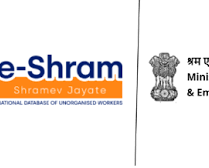
The Ministry of Labour & Employment (MoLE) recently highlighted the success of the eShram portal, which has registered over 30 crore unorganised workers since it was launched three years ago. This is a big achievement, as it shows progress in creating a digital system to support unorganised workers in India.
Purpose of the eShram Portal
The eShram portal is meant to be a “One-Stop-Solution” for unorganised workers. This means it helps them access various social security schemes all in one place, making it easier for them to get the benefits they are entitled to.
Government Initiatives
In the 2024-25 Budget speech, the government announced plans to further improve the eShram portal by linking it with other online platforms. This will make the portal even more useful as a central resource for unorganised workers.
Integration with Social Security Schemes
The Ministry of Labour & Employment is working to connect important social security schemes to the eShram portal. These schemes include:
Pradhan Mantri Jeevan Jyoti Bima Yojana (PMJJBY): A life insurance scheme.
Pradhan Mantri Suraksha Bima Yojana (PMSBY): An accident insurance scheme.
Ayushman Bharat Pradhan Mantri Jan Arogya Yojana (AB-PMJAY): A health insurance scheme.
Pradhan Mantri Street Vendors Atmanirbhar Nidhi (PM-SVANidhi): A scheme providing financial support to street vendors.
Mahatma Gandhi National Rural Employment Guarantee Act (MGNREGA): A scheme that guarantees employment in rural areas.
Pradhan Mantri Awas Yojana Gramin (PMAY-G): A scheme for providing housing in rural areas.
Ration Card Scheme: A scheme that provides subsidized food grains to eligible families.
Benefits for Unorganised Workers
By connecting these schemes to the eShram portal, unorganised workers will find it easier to access essential services and benefits. This integration will help ensure that these workers can secure their rights and improve their welfare more effectively. The portal is designed to make their lives better by providing them with easier access to important resources and support.
(NNI / Latest news / Latest news india / India latest news/UPSC Preparation)
Centre approves ₹2,817 Crore Digital Agriculture Mission
Latest News: 04th September 2024, UPSC Preparation


The Indian government has recently given the green light to the Digital Agriculture Mission, dedicating ₹2,817 crore to improve farming practices and boost the livelihoods of farmers. This decision was made during a cabinet meeting, showing the government’s strong commitment to modernizing agriculture using digital technology.
What is the Digital Agriculture Mission?
The Digital Agriculture Mission is a new initiative aimed at creating a digital framework for agriculture, similar to other successful digital infrastructures in the country. The goal is to use technology to make farming more efficient and productive. This mission builds on previous pilot projects that have shown promising results, and it is expected to bring significant improvements to farming in India.
Support for Farmers
Alongside the Digital Agriculture Mission, the government has also launched several other programs to support farmers and ensure food and nutritional security. One key focus is helping farmers prepare for climate change by introducing resilient crops that can withstand changing weather patterns.
Financial Plan
The government has laid out a detailed investment plan with specific allocations for various programs:
Digital Agriculture Mission: ₹2,817 crore to integrate technology into farming.
Food and Nutritional Security Programme: ₹3,979 crore to ensure that everyone has access to enough nutritious food.
Sustainable Horticulture Development: ₹860 crore to promote the growth of fruits, vegetables, and other plants in a sustainable way.
Strengthening Krishi Vigyan Kendra: ₹1,202 crore to support agricultural research centers that provide training and advice to farmers.
Natural Resource Management: ₹1,115 crore to ensure the sustainable use of natural resources like water and soil.
Sustainable Livestock Health and Production: ₹1,702 crore to improve the health and productivity of livestock.
Overall Impact
These initiatives aim to improve the lives of farmers by making agriculture more productive, sustainable, and resilient to climate change. By taking this comprehensive approach, the government hopes to create a strong and sustainable agricultural system in India by the year 2047.
(NNI / Latest news / Latest news india / India latest news/UPSC Preparation)
Activists Urge Review of EU’s 2030 Emission Goals
Latest News: 03rd September 2024, UPSC Preparation


Environmental activists, including groups like Climate Action Network and the Global Legal Action Network, are taking legal action against the European Commission. They believe that the European Union’s (EU) current plans to reduce emissions by 2030 are not strong enough to meet the goals of the Paris Agreement. The Paris Agreement aims to limit global warming to 1.5°C, and the activists argue that the EU’s targets fall short of this important goal.
Background of the Case
This case is significant because it’s the first time that EU courts will look into whether the EU’s climate targets are adequate. In the past, the European Court of Human Rights has ruled that countries must set emission targets based on science to stay within the 1.5°C limit. This case will test if the EU’s targets are truly science-based and if they meet the necessary standards to protect the environment.
What Legal Steps Have Been Taken?
On August 23, 2024, the two non-profit organizations asked the European Commission to review its Annual Emissions Allocations (AEA), which are the emission reduction targets set for each EU member state. When the Commission refused their request on December 14, 2023, the NGOs decided to take the matter to the EU Court on February 27, 2024. The court has recognized the urgency of the climate crisis, so it has given this case a high priority, with a hearing planned for 2025.
Emission Targets and Regulations
The Annual Emissions Allocations (AEA) are part of the EU Effort-Sharing Regulation, which requires each EU country to reduce emissions by a specific amount by 2030. This covers sectors like transport, buildings, and agriculture. However, the activists argue that these targets have not been thoroughly evaluated through scientific studies, and they worry that the targets won’t be enough to meet climate goals.
Implications of Insufficient Targets
The activists believe that the current EU emission targets could lead to a global temperature increase of 3°C by the year 2100 if other countries follow similar weak efforts. This level of warming could have severe consequences for the planet. To avoid this, the activists are pushing for a 65% reduction in emissions by 2030. They believe this is necessary for the EU to remain a leader in the fight against climate change.
If the activists win the case, the EU might be forced to set more ambitious emission reduction targets. This would not only align the EU’s actions with its own environmental laws but also strengthen its commitments under global climate agreements.
About the European Union
The European Union (EU) began in 1951 as the European Coal and Steel Community and has since grown into a union of 27 member countries with over 447 million people. The euro is the official currency in 19 of these countries. The Schengen Area allows people to travel between 26 countries without needing a passport. The EU has signed important treaties like the Maastricht and Lisbon Treaties, and it is committed to achieving carbon neutrality by 2050. It also supports cultural exchanges through programs like Erasmus+.
(NNI / Latest news / Latest news india / India latest news/UPSC Preparation)
Vulture Count 2024
Latest News: 02nd September 2024, UPSC Preparation
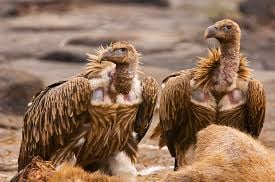

World Wide Fund(WWF)-India has started a new project called “Vulture Count 2024,” which will take place from September 7 to October 6, 2024. This initiative is timed to coincide with International Vulture Awareness Day. The goal is to count and evaluate the number of vultures in India, particularly focusing on species that are critically endangered. The project also aims to raise public awareness about the importance of vultures in our ecosystems.
Why are vultures important?
Vultures are very important to the environment because they act as nature’s cleanup crew. They eat dead animals (carrion), which helps prevent the spread of diseases among other animals, livestock, and even humans. By doing this, they also help recycle nutrients back into the environment, keeping the ecological balance intact.
Challenges Facing Vulture Populations
Vulture populations in India have dramatically decreased due to several threats, including:
Toxic Chemicals: Vultures often die after eating animals that have been treated with harmful non-steroidal anti-inflammatory drugs (NSAIDs), such as diclofenac.
Loss of Habitat: As human development expands, vultures are losing the natural areas they need to survive.
Electrocution: Vultures can get electrocuted by power lines.
Lack of Food: The availability of food has decreased, making it harder for vultures to find enough to eat.
Human Disturbances: Human activities often disrupt vulture habitats, making it difficult for them to thrive.
Goals of Vulture Count 2024
The main goals of the “Vulture Count 2024” initiative are:
Monitor Vulture Populations: Systematically track how many vultures there are to understand population trends.
Identify Critical Habitats: Find out which areas are most important for vulture survival.
Assess Environmental Impacts: Evaluate how the environment is affecting vulture populations.
The data collected from this initiative will help in creating better strategies for conserving vultures and spreading awareness about their importance.
Community Involvement
WWF-India is encouraging everyone, from citizen scientists and bird enthusiasts to local communities, to take part in this important project. Dipankar Ghose, a senior director at WWF-India, has highlighted the crucial role that volunteers can play in collecting data for vulture conservation.
Which Vulture Species Will Be Counted?
The count will focus on specific vulture species in India, including White-rumped vulture, Red-headed vulture, Indian vulture, Bearded vulture, Slender-billed vulture, Himalayan griffon, Eurasian griffon, Egyptian vulture and Cinereous vulture.
About WWF-India
WWF-India, established in 1969, is part of the global World Wide Fund for Nature (WWF) network. The organization focuses on protecting wildlife, preserving habitats, and promoting sustainable development. WWF-India runs over 100 projects across the country, with a particular focus on endangered species like the Bengal tiger and Indian rhinoceros. The organization also works on community-based conservation, encouraging eco-friendly practices. Through initiatives like the Green Schools program, WWF-India educates students about sustainability. The organization collaborates with government bodies to advocate for environmental policies and supports reforestation efforts to fight climate change.
(NNI / Latest news / Latest news india / India latest news/UPSC Preparation)
Study Reveals Microplastics Dominant in Indian Personal Care Products
Latest News: 29th August 2024, UPSC Preparation


A study led by Riya K. Alex at Cochin University has brought attention to the presence of microplastics, especially polyethylene (PE), in personal care products (PCPs). The study highlights concerns about the effects of these tiny plastic particles on the environment and human health, particularly in a fast-growing market like India.
What Are Microplastics?
Microplastics are tiny plastic particles that are smaller than 5 millimeters, which is about the size of a sesame seed. These microplastics include microbeads, which are even smaller, ranging from 1 to 1,000 micrometers (about the thickness of a human hair). Microbeads are often found in personal care products like face washes and scrubs.
Key Findings from the Study
Samples Analyzed: The study looked at 45 different personal care products from 2022, including face washes, scrubs, shower gels, and body scrubs.
Types of Microbeads: About 23.33% of the products contained microbeads made from cellulose, a material whose ability to break down naturally is still uncertain.
Appearance of Microbeads: The microbeads were mostly white, making them harder to see and detect.
Materials Used: More than half of the microbeads were made of polyethylene (PE). Other materials found included polypropylene and polyester.
Microbead Content: On average, microbeads made up 1.34% of the total weight of the products, but this amount varied depending on the type of product.
Microbeads in Personal Care Products
The study also provided specific amounts of microbeads found in different products:
Face Wash: About 0.26 grams of microbeads in every 30 grams of product.
Face Scrub: About 0.90 grams of microbeads in every 30 grams of product.
Body Scrub: About 1.24 grams of microbeads in every 30 grams of product.
Shower Gel: About 1.74 grams of microbeads in every 30 grams of product.
Shower gels contained the largest microbeads, with sizes averaging between 606.30 and 640.74 micrometers. These microbeads had irregular shapes, which could make them more harmful to the environment.
Environmental Impact of Microbeads
Microbeads are a significant environmental concern because they can enter the food chain and cause pollution. Their irregular shapes make them more likely to absorb harmful pollutants, increasing the risks they pose to aquatic life and ecosystems. The study also raised concerns about “greenwashing”—when products are marketed as “eco-friendly,” “organic,” or “natural,” but still contain significant amounts of plastic. In India, many consumers may not fully understand the ingredient lists on products, allowing companies to benefit from this lack of awareness.
The Regulatory Landscape
While some countries have banned the use of microbeads, India’s regulations on microbeads are still unclear. As consumer purchasing power grows, the study predicts that India could see a significant increase in microbead pollution by 2030. Microplastics are not just in personal care products—they are found in many everyday items, including food like salt and sugar, and even in human tissues. This widespread presence of microplastics raises serious public health concerns.
(NNI / Latest news / Latest news india / India latest news/UPSC Preparation)
FSSAI Withdraws Advisory on A1, A2 Milk Claims
Latest News: 27th August 2024, UPSC Preparation
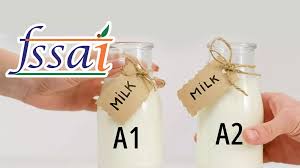

The Food Safety and Standards Authority of India (FSSAI) reversed its earlier advisory. This advisory had instructed food businesses to remove any references to ‘A1’ and ‘A2’ milk from their product packaging. The decision to retract this advisory was made to allow more discussions with food sector stakeholders.
Implications for Food Businesses
With the advisory withdrawn, food businesses can now continue to market and sell products that mention ‘A1’ and ‘A2’ types of milk. This means they do not have to remove these claims from their labels or stop using A1 and A2 branding.
Understanding A1 and A2 Milk
The difference between A1 and A2 milk lies in the type of beta-casein protein they contain. This protein variation is due to differences in cow breeds:
A1 Milk: Contains A1 beta-casein protein, which is found in certain breeds of cows.
A2 Milk: Contains A2 beta-casein protein, which is linked to other breeds of cows.
FSSAI’s Previous Advisory
On August 21, 2024, FSSAI issued an advisory requiring food businesses to remove any claims about A1 and A2 milk from their products and online listings. This was because current regulations under the Food Safety and Standards Act, 2006, did not recognize these protein differences. The earlier advisory had given food businesses six months to use up existing labels that mentioned A1 and A2 milk. This created challenges for businesses that relied on these claims for branding. With the advisory now withdrawn, the FSSAI plans to hold further discussions with industry stakeholders. These talks aim to review and possibly revise the regulations regarding A1 and A2 milk, which could lead to new guidelines and standards in the future.
About FSSAI
The Food Safety and Standards Authority of India (FSSAI) is responsible for regulating food safety in India. Established in 2006, it operates under the Ministry of Health and Family Welfare with its headquarters in New Delhi. FSSAI sets food safety standards, issues licenses, and conducts inspections. The organization’s logo includes a unique license number for traceability. FSSAI also runs awareness campaigns on food safety and nutrition and monitors food quality testing labs across the country.
(NNI / Latest news / Latest news india / India latest news/UPSC Preparation)
Union Cabinet Approves BioE3 Biomanufacturing Policy
Latest News: 27th August 2024, UPSC Preparation


The Union Cabinet of India, led by Prime Minister Narendra Modi, approved the BioE3 policy, which stands for “Biotechnology for Economy, Environment, and Employment”, on August 25, 2024. This policy aims to use advancements in biotechnology to support India’s development goals by 2047.
What is the Objective of the BioE3 Policy?
The main goal of the BioE3 policy is to integrate biotechnology into traditional supply chains. This means using biotechnological innovations to improve sustainability, drive economic growth, and create new jobs. The policy also aims to position India as a global leader in biomanufacturing, a field where biotechnology is used to produce goods and materials. The policy highlights the potential of biotechnology to change the way things are produced. By moving away from harmful, unsustainable practices and adopting more regenerative, eco-friendly methods, biotechnology can help transform the global economy. This shift is crucial for addressing environmental issues while also making production processes more efficient and effective.
What are the Key Features of the BioE3 Policy?
Technological Development: The policy plans to set up advanced biomanufacturing facilities, bio-AI hubs, and biofoundries. These are specialized centers that will focus on using biotechnology in innovative ways.
Recycling and Material Innovation: One important aspect of the policy is to improve recycling processes and develop new materials that are less harmful to the environment. This will help reduce waste and minimize the environmental impact of production.
Integrated Research Networks: The policy encourages collaboration among research institutions. By working together, these institutions can foster innovation in biotechnology, leading to discoveries and applications.
How Will the BioE3 Policy Be Implemented?
The BioE3 policy outlines three main strategies to ensure successful implementation:
Discovery and Integrated Research: This strategy focuses on encouraging innovation through collaborative research. By bringing together different research institutions, the policy aims to create a network of knowledge and expertise.
Bridging Gaps: The policy identifies gaps in current biotechnological applications and seeks to close these gaps. This could involve developing new technologies or improving existing ones to make them more effective.
Bio-Enablement Hubs: These hubs will be established to support the advancement of biotechnology. They will provide the necessary infrastructure and resources to help biotechnological innovations flourish.
Anticipated Outcomes
The BioE3 policy is expected to create over 8,000 biotechnology startups. This will lead to more job opportunities and contribute significantly to the growth of India’s GDP. The policy also aims to provide innovative solutions in areas like food security, health, and sustainability. These solutions could benefit a wide range of sectors, from disaster relief to space exploration. The long-term vision of the BioE3 policy is to create a sustainable and innovative future. The policy aims to address critical global challenges, such as climate change and resource depletion, ensuring a healthier planet for future generations. By focusing on sustainability and innovation, the BioE3 policy seeks to build a better world for everyone.
(NNI / Latest news / Latest news india / India latest news/UPSC Preparation)
India to Host First World Audio Visual & Entertainment Summit
Latest News: 25th August 2024, UPSC Preparation
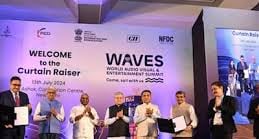

India is rapidly becoming a major force in producing media content, thanks to the rise of OTT (Over-The-Top) platforms like Netflix and Amazon Prime. These platforms have made it easier for Indian content to reach audiences all over the world, giving Indian creators a chance to showcase their work on a global stage. This growth is helping the Indian Media and Entertainment (M&E) industry make a big impact internationally.
Diverse Content Production
India’s content creation is incredibly diverse, covering everything from movies and television shows to news, sports, and digital media. This variety reflects India’s rich culture and traditions. The focus is on entertainment, but there’s also a strong push for innovation and inclusion, making sure the content keeps up with global trends and appeals to a wide range of audiences.
OTT Platforms
The rise of OTT platforms is changing the game for Indian media. These platforms allow Indian movies, shows, and other content to be streamed in more than 130 countries. This not only increases the reach of Indian content but also positions India as a key player in producing high-quality and affordable media. It has opened doors for international partnerships and collaborations, making India a central hub for content production.
Recognition of India’s Potential
India is already known as a leader in animation and visual effects (VFX), with a reputation for creative excellence. The Indian government recognizes the potential of the M&E sector and is actively supporting its growth. The government sees this industry as a key area that can drive economic development and create new opportunities for the country.
World Audio Visual & Entertainment Summit (WAVES)
To further boost India’s M&E industry, the Ministry of Information and Broadcasting is organizing the first-ever World Audio Visual & Entertainment Summit (WAVES), in Goa from 20th to 24th November 2024. This event aims to strengthen India’s connections with the global entertainment industry, focusing on the economics of entertainment and new technological advancements.
‘Create in India Challenge’
During the WAVES summit, Union Minister Ashwini Vaishnaw launched the ‘Create in India Challenge – Season 1,’ which introduces 25 new initiatives to encourage innovation in the M&E sector. This challenge reflects the government’s commitment to improving creativity and attracting investment in the industry. The WAVES summit is expected to be a crucial platform for discussions, trade partnerships, and solving industry challenges. By bringing together industry leaders and innovators, the summit aims to shape the future of India’s M&E sector and expand its influence around the world.
(NNI / Latest news / Latest news india / India latest news/UPSC Preparation)
Sanjeev Raina Appointed ITBP Additional Director General
Latest News: 24th August 2024, UPSC Preparation
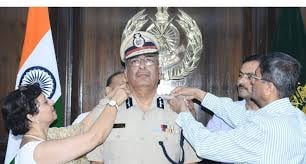

Sanjeev Raina, a senior officer from the 1987 batch of the Indo-Tibetan Border Police (ITBP), has been appointed as the Additional Director General (ADG) of the ITBP. He will be specifically responsible for overseeing the forces along the India-China Line of Actual Control (LAC). This is a significant event because he is only the second officer who is not from the Indian Police Service (IPS) to reach this high rank in the history of the ITBP.
Why This Appointment Is Important
The ITBP was created in 1962, mainly to handle mountain warfare and protect the borders. Normally, the ADG position is filled by IPS officers, who usually come from a broader police background. Raina’s promotion to ADG shows that there is increasing respect and recognition for the skills and expertise within the ITBP itself, especially for officers who have spent many years working directly in challenging field conditions.
Sanjeev Raina’s Career
Sanjeev Raina has been with the ITBP for more than 30 years, starting his service in November 1987. Throughout his career, he has played key roles in some of India’s most sensitive and difficult areas, such as Ladakh and Jammu and Kashmir. One of his major achievements is setting up the Counter Insurgency and Jungle Warfare (CIJW) school in Mahidanda, Uttarakhand. This school has been important for improving the training of ITBP personnel, particularly in techniques for fighting in mountainous terrain. As the ADG of the Western Command, which is based in Chandigarh, Raina will be in charge of the ITBP units stationed along the LAC. This includes areas like Ladakh, Uttarakhand, and Himachal Pradesh. He will also supervise units in other regions, such as Punjab, Delhi, and Jammu and Kashmir, ensuring that the forces are prepared and effective in their duties. Although this appointment is a big deal, Raina’s time in this role will be short. He is set to retire in just over a month. After he retires, Inspector General (IG) Jaspal Singh will take over as the new ADG.
About Indo-Tibetan Border Police (ITBP)
The Indo-Tibetan Border Police (ITBP), established in 1962, is one of India’s Central Armed Police Forces. Its main job is to secure the Indo-Tibetan border, which stretches for 3,488 km. The ITBP is especially known for operating in very high-altitude areas, with some units stationed at altitudes over 21,000 feet. The ITBP was the first Indian force to reach the war front in Kashmir during the 1965 war.
uniform civil code / what is uniform civil code / uniform civil code meaning / uniform civil code article / uniform civil code in india / uniform civil code in hindi / uniform civil code upsc / uniform civil code kya hai / ucc uniform civil code / what is uniform civil code in india / uniform civil code Uttarakhand / uniform civil code essay / uttarakhand uniform civil code / uniform civil code means / uniform civil code kerala / kerala uniform civil code / uniform civil code in which state of india / uniform civil code pdf / uniform civil code in Uttarakhand / uniform civil code india
Former Army Chief General Sundararajan Padmanabhan Dies at 83
Latest News: 22nd August 2024, UPSC Preparation
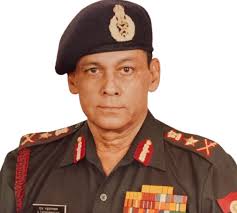

General Sundararajan Padmanabhan, a former Chief of Army Staff of the Indian Army, died on August 19, 2024, in Chennai at the age of 83. Known as “Paddy” among friends, he is remembered for his outstanding leadership.
Career Overview
General Padmanabhan had a long military career of over 43 years. He was Chief of Army Staff from September 30, 2000, to December 31, 2002, and played a key role in important military operations.
Early Life and Education
He was born on December 5, 1940, in Thiruvananthapuram, Kerala. He attended several top military schools, including the Rashtriya Indian Military College and the National Defence Academy. He also studied at the Defence Services Staff College and the National Defence College.
Military Contributions
Padmanabhan was commissioned into the Regiment of Artillery on December 13, 1959. Throughout his career, he held several important positions:
Commander of the Gazala Field Regiment
Led two infantry brigades and an artillery brigade
Commanded an infantry division in the Western Sector as a Major General
Led a Corps in Kashmir, focusing on counter-terrorism operations as a Lieutenant General
Legacy and Tributes
General Padmanabhan is remembered for his dedication to the nation and military excellence. His death has been mourned by many, including Tamil Nadu Chief Minister M K Stalin and State Governor R N Ravi, who praised his respected leadership. His funeral will be held on Tuesday evening.
About General Sundararajan Padmanabhan
General Padmanabhan was the 19th Chief of Army Staff from 2000 to 2002. He played a significant role in the Kargil War and was known for his strategic planning. He was the first Indian Army chief to earn a PhD in military studies and was an advocate for modernizing the army with advanced technology. After retiring, he continued to contribute to defense policy and served on various committees, also focusing on leadership training within the armed forces.
uniform civil code / what is uniform civil code / uniform civil code meaning / uniform civil code article / uniform civil code in india / uniform civil code in hindi / uniform civil code upsc / uniform civil code kya hai / ucc uniform civil code / what is uniform civil code in india / uniform civil code Uttarakhand / uniform civil code essay / uttarakhand uniform civil code / uniform civil code means / uniform civil code kerala / kerala uniform civil code / uniform civil code in which state of india / uniform civil code pdf / uniform civil code in Uttarakhand / uniform civil code india
Broad definitions in Telecom Act pit telcos and OTTs against each other yet again
Latest News: 21st August 2024


A war over interpretation of what a telecommunication service is under the new Telecommunication Act has broken out between telecom operators and social media companies, with the former arguing that over-the-top (OTT) communications platforms like WhatsApp and Google Meet are indeed covered under the definition of a telecom service.
This points to the vague manner in which telecom services have been defined under the Act, and despite the government’s clarification to the media earlier that OTTs don’t fall under the definition, experts believe media statements do not have the same sanctity as the legal word – and see this as the key reason behind this new divergence in the interpretation.
(NNI / Latest news / Latest news india / India latest news/UPSC Preparation)
17th Divya Kala Mela in Raipur
Latest News: 20th August 2024

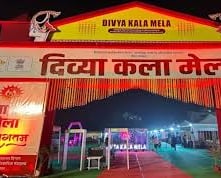
Union Minister Dr. Virendra Kumar inaugurated the 17th Divya Kala Mela in Raipur, Chhattisgarh. Organized by the Department of Empowerment of Persons with Disabilities, this event celebrates the talents of Divyang (disabled) individuals.
Purpose of the Event
The Divya Kala Mela aims to empower disabled artisans and entrepreneurs by giving them a platform to showcase their skills and creativity. The fair features 100 Divyang artisans, artists, and entrepreneurs from 20 different states and union territories across India. They present a diverse range of products and cultural expressions. In addition to product displays, the week-long fair includes cultural programs where participants can showcase their talents in music, dance, and drama, adding to the event’s cultural richness.
Facts About Divya Kala Mela
Divya Kala Mela is a cultural festival in India that celebrates the talents of people with disabilities.
Organized by the Ministry of Social Justice and Empowerment, it showcases crafts, arts, and performances.
Since its inception in 2012, the mela has aimed to promote inclusivity and empower disabled artisans.
The event includes stalls featuring handicrafts, food, and cultural programs, providing participants with exposure and livelihood opportunities.
It also raises awareness about accessible art and fosters interaction between the disabled community and the public.
Facts About Raipur
Raipur, the capital of Chhattisgarh, India, is known for its steel and cement industries.
It is home to the Mahant Rajiv Gandhi Memorial Medical College and has a population of over one million, making it one of the state’s largest cities.
Raipur features attractions like the Doodhadhari Monastery and Temple and the historic Rajiv Gandhi Smriti Mandir.
The city is also a bustling trade and agricultural hub, especially for rice and tendu leaves.
Raipur Airport connects the city to major destinations, boosting its economic importance.
(NNI / Latest news / Latest news india / India latest news/UPSC Preparation)
Union Cabinet Approves Three Major Metro Projects in India
Latest News: 19th August 2024

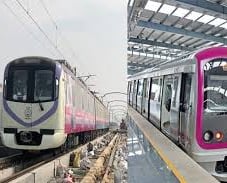
The Union Cabinet approved three new Metro projects in India to improve city transportation. These are the Bengaluru Metro Phase-3, Thane Integral Ring Metro, and an extension of the Pune Metro, with a total estimated cost of ₹30,765.5 crore.
Bengaluru Metro Phase-3
This expansion will add 42.3 km to the existing Metro network and introduce 14 new stations. It will connect key areas such as Kempegowda International Airport and the IT corridor. A notable feature is a 22.8 km underground section, which will help reduce traffic congestion on the surface. The project, utilizing advanced tunneling technology, is set to be completed by 2025. It is expected to improve public transportation significantly and cut travel times. The estimated cost is around ₹15,000 crore, with partial funding from the Asian Infrastructure Investment Bank.
Thane Integral Ring Metro
The extension will include two lines: Line 1, running from PCMC to Swargate, and Line 2, from Bhosari to Swargate. It covers about 32 kilometers and aims to reduce urban congestion. Started in 2019, the project features a combination of elevated and underground tracks and uses modern, energy-efficient trains. The first section opened in 2022, and the full extension is expected by 2025. This extension is designed to improve travel time and connectivity while promoting sustainable urban transport.
Pune Metro Extension
Part of Mumbai’s metro network, this project will span around 30.5 kilometers and include 27 stations. It is intended to ease congestion and integrate different transport modes. Construction began in 2016, with the first phase expected to be completed by 2023. The metro will significantly cut travel time between Thane and Cuffe Parade. It incorporates eco-friendly measures, including reduced land use, and aims to serve about 500,000 passengers daily, thereby enhancing urban connectivity.
Environmental and Economic Impact
These Metro projects will significantly increase the number of daily passengers, potentially reaching millions by 2045. They will enhance urban mobility, stimulate economic growth, and reduce reliance on private vehicles, contributing to a cleaner environment. The Pune and Thane Metro projects will be managed by Maha Metro. Funding will come from the Government of India, the Government of Maharashtra, and international agencies, highlighting a strong commitment to modernizing urban infrastructure.
(NNI / Latest news / Latest news india / India latest news/UPSC Preparation)
Central India Forests Face High Fire Risk, Study Warns
Latest News: 18th August 2024, UPSC Preparation

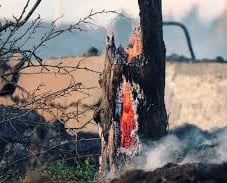
Forests in Khandwa and North Betul, located in Central India, are increasingly at risk of forest fires due to a combination of human activities and natural factors. This concern was highlighted in a study published on August 14, 2024.
Study Overview
The research was led by Vibha Sahu from the Indian Institute of Forest Management. By analyzing 22 years of satellite data from the MODIS (Moderate Resolution Imaging Spectroradiometer), the study uncovered a troubling trend: the number of forest fires in Khandwa has been rising by an average of three fires per year, while North Betul has seen an increase of one fire per year.
Fire Risk Assessment
The study found that about 45% of Khandwa’s forests and 50% of North Betul’s forests are now in areas classified as having a high or very high risk of fire. In Khandwa, the most vulnerable areas are in the northern and southeastern regions. In North Betul, the high-risk zones are mainly in the northwestern and northeastern parts.
Factors Influencing Fire Risks
Several factors contribute to the increased fire risks in these forests. The type of vegetation, the shape of the land (topography), and human activities play significant roles. For example, areas near roads or forests with highly flammable trees, like the teak forests in Khandwa, are particularly prone to fires.
Predictive Modelling
The researchers used a method called the Analytic Hierarchy Process (AHP) to predict where future fires are most likely to occur. This approach categorizes different areas into five levels of fire risk, helping to focus fire prevention efforts where they are needed most. Local communities contribute to fire risks through certain practices. For example, people often burn undergrowth to harvest mahua flowers and tendu leaves, which unintentionally increases the likelihood of fires. This highlights the need for better education and awareness among these communities about safer ways to manage their resources.
Implications for Conservation
The findings of this study are crucial for conservation efforts. By identifying the most fire-prone areas, authorities can develop effective fire management strategies to protect these forests and the communities that depend on them. The study emphasizes the urgent need for targeted planning and resource allocation to reduce the threat of forest fires in Khandwa and North Betul. Lead researcher Vibha Sahu calls for immediate action to address this growing problem.
About Khandwa
Khandwa, located in Madhya Pradesh, is known for its rich cultural heritage. It is a home to historic sites like the Ujjain and Omkareshwar temples. The city also has historical significance due to its involvement in the Sepoy Mutiny of 1857. Khandwa is important for its agricultural production, especially of cotton and pulses, and is well-connected by the Indian Railways. Additionally, the sacred Narmada River flows nearby, adding to the region’s cultural significance.
About North Betul
North Betul, part of the Betul district in Madhya Pradesh, is known for its rich biodiversity and forests. The area is home to the Satpura Range, which offers scenic landscapes and a variety of wildlife. Betul is one of India’s top producers of soybeans and hosts an annual Jain festival that celebrates local culture. The region also features historical sites like the Bhimbetka rock shelters, and its tropical climate influences both agriculture and daily life in the area.
(NNI / Latest news / Latest news india / India latest news/UPSC Preparation)
Maharashtra Launches ₹1,500 Monthly Aid for Eligible Women
Latest News: 17th August 2024, UPSC Preparation
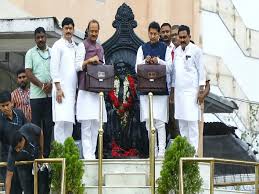

Maharashtra will launch the ‘Mukhyamantri Ladki Bahin’ scheme on August 17, announced by Deputy Chief Minister Devendra Fadnavis. This scheme is designed to give financial help to more than one crore (10 million) eligible women in the state. The launch coincides with Raksha Bandhan, a festival celebrated on August 19.
What is the Scheme?
The Mukhyamantri Ladki Bahin scheme will provide ₹1,500 per month to eligible women aged 21 to 65 years who come from low-income families (those earning less than ₹2.5 lakh per year). The scheme is inspired by the successful ‘Ladli Behna Yojana’ from Madhya Pradesh.
How the Financial Help Works
Eligible women will first receive ₹3,000, covering the months of July and August. This amount was already given to some women during a trial run of the scheme to ensure that the assistance arrives on time. The scheme is expected to cost the government ₹46,000 crore every year. This amount has been included in the supplementary budget prepared by Deputy Chief Minister and Finance Minister Ajit Pawar.
Political Importance
The scheme is being launched ahead of the upcoming Assembly elections, and it seems to be designed to appeal to women voters. Chief Minister Eknath Shinde has assured the public of the government’s commitment to this scheme, even as the opposition has raised questions. Aditi Tatkare, the Women and Child Development Minister has begun meetings with officials to ensure the smooth registration of women for the scheme and to make sure the scheme is properly implemented.
Overall Impact
The Mukhyamantri Ladki Bahin scheme is both a social and political initiative aimed at helping women in Maharashtra by providing them with financial support. This is especially significant as the state prepares for elections.
More About the Mukhyamantri Ladki Bahin Scheme
The Mukhyamantri Ladki Bahin Scheme, which began in Madhya Pradesh, aims to empower girls by providing financial assistance for their education. It targets underprivileged families and gives ₹25,000 for each girl. The scheme also focuses on skill development and health check-ups, promoting gender equality and encouraging families to invest in their daughters’ futures.
(NNI / Latest news / Latest news india / India latest news/UPSC Preparation)
How has unity in creativity contributed to the evolution and preservation of India’s cultural and artistic heritage?
Latest News: 14th August 2024
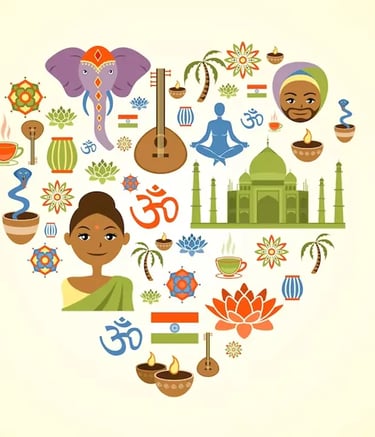

Unity in creativity refers to the harmonious collaboration and cooperation of individuals or groups who come together to create something new and unique. In India, unity in creativity has been an integral part of the country’s cultural and artistic heritage for centuries.
One of the most prominent examples of unity in creativity in India is the country’s rich tradition of classical dance and music. Bharatanatyam, Kathak, and Kuchipudi are some of the classical dance forms that have evolved and thrived over the centuries through the collaborative efforts of dancers, musicians, and choreographers. In these classical dance forms, unity in creativity is achieved through the synchronisation of hand gestures, body movements, and facial expressions with the rhythm and melody of the accompanying music.
Another example of unity in creativity in India can be seen in the country’s film industry, commonly referred to as Bollywood. Bollywood movies are a fusion of drama, music, dance, and action, and bring together a team of actors, directors, writers, choreographers, and musicians to create an entertaining and engaging experience for the audience. The collaboration between these various artists and technicians is what makes Bollywood movies so unique and special.
India’s rich and diverse cultural heritage also provides a platform for unity in creativity in the form of folk arts and crafts.
In summary, unity in creativity is a fundamental aspect of India’s cultural and artistic heritage. From classical dance and music to film and folk arts, the country’s rich artistic legacy is a testament to the power of collaboration and cooperation in bringing people and communities together. Whether it’s in the form of a classical dance performance, a Bollywood movie, or a traditional folk art, unity in creativity continues to play a crucial role in shaping India’s cultural identity and preserving its artistic heritage for future generations.
(NNI / Latest news / Latest news india / India latest news)
(UPSC current affairs / UPSC / UPSC Preparation / UPSC Preparation Books / UPSC Preparation Strategy )
Union Cabinet Approves ₹24,657 Crore Railway Projects for Connectivity
Latest News: 12th August 2024, UPSC Preparation
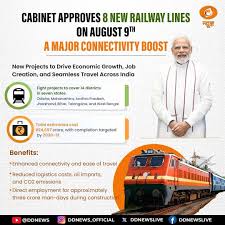

On August 9, 2024, the Union Cabinet in India approved eight new railway projects, with a total investment of ₹24,657 crore. These projects aim to improve connectivity, make travel more efficient, and be environmentally friendly by reducing logistics costs and cutting down on carbon emissions.
Project Overview
The new projects will add 900 kilometers to the railway network, covering 14 districts in Odisha, Maharashtra, Andhra Pradesh, Jharkhand, Bihar, Telangana, and West Bengal. The projects are expected to be finished by 2030-31.
Key Railway Line Routes
The Railway routes include:
Gunupur – Therbubali: 73.62 km
Junagarh – Nabrangpur: 116.21 km
Badampahar – Kandujhargarh: 82.06 km
Bangriposi – Gorumahisani: 85.60 km
Malkangiri – Pandurangapuram: 173.61 km
Buramara – Chakulia: 59.96 km
Jalna – Jalgaon: 174 km
Bikramshila – Katareah: 26.23 km
Logistical Efficiency and Economic Growth
These new routes will connect areas that were previously not linked by rail, improving the efficiency of transportation. This will help create a smoother supply chain and boost economic growth. The construction phase of these projects is expected to generate around three crore man-days of direct employment, which will benefit local economies. The projects will help reduce oil imports by 32.20 crore liters and cut CO2 emissions by 0.87 million tonnes. This is roughly equivalent to planting 3.5 crore trees. The expansion supports the PM-Gati Shakti National Master Plan, which focuses on integrated planning for better multi-modal connectivity.
About PM-Gati Shakti National Master Plan
The PM-Gati Shakti National Master Plan started in October 2021 to improve how infrastructure is planned and built in India. It brings together 16 ministries and focuses on connecting different types of transport. The plan has a huge budget of 100 lakh crore and aims for sustainable development. It uses Geographic Information System (GIS) technology for smooth coordination. By making logistics better, it helps the economy grow and cuts time and costs. Gati Shakti also works with the National Infrastructure Pipeline and aims to support local industries by improving supply chains.
Interesting Railway Facts
Highest Railway: The Qinghai-Tibet Railway in China is the highest railway in the world, reaching 5,072 meters above sea level.
Konkan Railway: India’s Konkan Railway project includes over 147 tunnels.
Longest Iron Ore Railway: Brazil’s Estrada de Ferro Carajás is one of the longest iron ore railways, stretching 892 kilometers.
First Railway Project: The first recorded railway project began in England in 1604 using wooden wagons.
Fast Trains: Japan’s Shinkansen trains can reach speeds of up to 300 km/h.
Channel Tunnel: The Channel Tunnel, which connects the UK to France, took seven years to build.
Longest Railway Line: The Trans-Siberian Railway is the longest railway line in the world, covering about 9,289 kilometers.
Longest Railway Tunnel: The Gotthard Base Tunnel in Switzerland is the world’s longest railway tunnel, measuring 57 km.
Mumbai Local Trains: The local train system in Mumbai carries over 7.5 million passengers daily.
First Steam Locomotive: The first steam locomotive, built by George Stephenson in 1814, was a key development in modern railways.
(NNI / Latest news / Latest news india / India latest news)
(UPSC current affairs / UPSC / UPSC Preparation / UPSC Preparation Books / UPSC Preparation Strategy )
What is e-Sankhyiki Portal?
Latest News: 8th August 2024, UPSC Preparation


On June 29, the Ministry of Statistics and Programme Implementation (MoSPI) launched the e-Sankhyiki portal. This new portal is a big step forward for how India manages and shares data. It makes it easier to access and analyze important information.
Key Features
Comprehensive Data Listing: Users can easily search for and download important data from the Ministry.
Time Series Data: Provides access to important economic indicators over time, making it easier to analyze trends.
Data Filtering and Visualization: Improved tools for filtering data and creating visual representations to better understand the information.
Metadata Access: Detailed information that comes with the data sets to help with deeper analysis.
Data Safety Protocols
The portal has several features to keep data safe:
Cloud Storage: Data is securely stored on the National Informatics Centre (NIC) cloud.
Security Audits: Regular checks are conducted to ensure data integrity.
SSL Implementation: Secure Sockets Layer (SSL) is used for secure connections.
Vulnerability Assessments: Continuous evaluations are done to find and fix potential security issues.
Cybersecurity Support
CERT-In, part of the Ministry of Electronics and Information Technology (MeitY), supports the portal by:
Advisories and Guidelines: Providing security guidelines to enhance data protection.
Training and Sensitization: Conducting workshops and training sessions to raise cybersecurity awareness.
Cyber Threat Exchange: Offering platforms to share threat information among stakeholders.
Cyber Crisis Management: Developing plans for managing cyber crises and getting support from the National Cyber Coordination Centre (NCCC).
About e-Sankhyiki portal
The e-Sankhyiki portal, launched by the Indian government, aims to make the process of collecting and using statistical data more efficient and digital. It provides real-time access to data, helping with better planning and decision-making. The portal focuses on various sectors like agriculture, health, and education. It improves transparency and makes data more accessible to the public. Users can submit data online, reducing paperwork and increasing efficiency. The portal also supports strong data analysis, helping create evidence-based policies. Additionally, it encourages collaboration among government agencies, improving overall statistical management.
(NNI / Latest news / Latest news india / India latest news)
(UPSC current affairs / UPSC / UPSC Preparation / UPSC Preparation Books / UPSC Preparation Strategy )
Maharashtra Approves Prisons and Correctional Services Bill
Latest News: 7th August 2024, UPSC Preparation
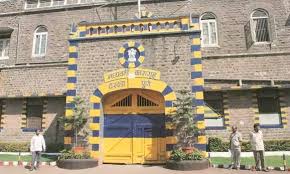

On July 12, 2024, the Maharashtra State government introduced the Maharashtra Prisons and Correctional Services Bill during the Legislative Assembly’s monsoon session. Although the Bill was not passed, it has been approved by the State Cabinet to be enacted as an Ordinance. This means it will become law temporarily while waiting for approval from the Central government and the President.
Legislative Framework
Prison governance is managed by the state according to the Constitution’s Seventh Schedule. Currently, Maharashtra’s prisons operate under the old Prisons Act of 1894. There is a need for reform due to significant overcrowding, with over 40,428 prisoners in facilities meant for only 27,110.
Current Issues in Prisons
Maharashtra’s prisons are among the top five states in terms of prisoner population and undertrials. The existing rules, from 1962 to 1979, are outdated and hard to access, causing concerns about deaths in custody and poor prison conditions.
Overview of the New Bill
The new Bill takes ideas from the Union’s Model Prisons and Correctional Services Act, 2023, to modernize prison operations. It includes better staffing, technology upgrades, and mental health initiatives.
Notable Provisions
Convict Overseer: A prisoner chosen to supervise others, given certain privileges, but this role has faced criticism.
Public Servant Status: All convict overseers are defined as public servants, which raises questions about their relevance today.
Prisons and Correctional Services Force: A new body with the power to make arrests and use weapons, though its practical use is unclear.
Welfare Funds: The Bill proposes funds for both prison staff and prisoners, unlike the Model Bill which focuses on prisoner welfare alone. This could face challenges in implementation.
Potential for Reform
Despite some shortcomings, the Bill addresses important areas like provisions for transgender prisoners and creating an Undertrial Review Committee. With further input and amendments, it offers a crucial chance to improve Maharashtra’s prison system and move towards a rehabilitative justice model.
(NNI / Latest news / Latest news india / India latest news)
(UPSC current affairs / UPSC / UPSC Preparation / UPSC Preparation Books / UPSC Preparation Strategy )
Cities Set to Launch Rs 5,000 Crore AMRUT 2.0 Projects
Latest News: 6th August 2024, UPSC Preparation
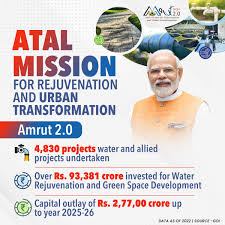

The Atal Mission for Rejuvenation and Urban Transformation (AMRUT) 2.0 is an important project started in 2021 by the National Democratic Alliance (NDA) government. Its goal is to improve city infrastructure in India with a big investment.
Funding and Scope
AMRUT 2.0 has been given ₹66,750 crore by the central government to use from 2021 to 2026. The main aim is to provide tap water to all homes in about 4,800 towns across the country, with a total cost of ₹2.99 lakh crore.
Project Progress
So far, the tendering processes are finished, and the selected contractors are ready to start the projects. Out of 8,205 planned projects, 4,065 have been awarded. These projects will improve water supply, sewage treatment, and the overall management of city environments. Around 50% of these projects focus on water supply and sewage management. The rest aim to rejuvenate water bodies and develop parks. The plan includes building sewage treatment plants (STPs) and water treatment plants to help local households.
Completion Timeline
As part of the government’s 100-day agenda, many big projects are expected to be up and running soon, focusing on immediate improvements in city infrastructure before the upcoming Lok Sabha elections. Plans include approving long-pending proposals, such as a detailed Delhi Master Plan 2041, and creating new greenfield cities. These are important for sustainable urban development and managing resources effectively.
About Atal Mission for Rejuvenation and Urban Transformation (AMRUT 2.0)
Basic Services: AMRUT 2.0, launched in 2021, aims to improve essential services like water supply and sewage management in cities.
Green and Smart Cities: The mission focuses on creating green spaces and implementing smart city projects, promoting a cleaner and more efficient urban environment.
Citizen Participation: It encourages people to take part in planning their cities, aiming to improve the quality of life and sustainability in 500 cities with a budget of ₹2.77 lakh crore.
(NNI / Latest news / Latest news india / India latest news)
(UPSC current affairs / UPSC / UPSC Preparation / UPSC Preparation Books / UPSC Preparation Strategy )
States can sub-classify SCs for quotas: top court
Latest News: 5th August 2024, UPSC Preparation

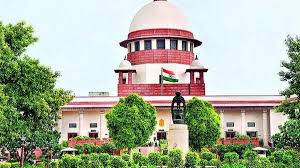
Syllabus: Indian Constitution, reservation
Mains: Sub-classification of SCs
Context: A seven-judge Constitution Bench of the Supreme Court, led by Chief Justice of India D.Y. Chandrachud, recently upheld the states’ right to sub-classify Scheduled Castes (SCs) within the Presidential List. The judgment, delivered by a 6:1 majority, emphasizes the constitutional need for such sub-categorization to achieve substantive equality. This landmark decision is grounded in the principles of social justice and aims to address intra-class disparities among SCs.
Background of the Judgment
Indra Sawhney Case Reference: The Supreme Court referred to the Indra Sawhney case, which allowed the classification of backward classes into “backward” and “more backward” categories. Chief Justice Chandrachud noted that this principle applies to SCs as well.
Sub-Classification for Substantive Equality: The judgment underscores that sub-categorization within SCs is a constitutional requirement when the social positions of various constituents are not comparable.
Key Aspects of the Judgment
State’s Right to Sub-Classify: States can sub-classify SCs to provide more preferential treatment in public employment and education.
Exclusion of Creamy Layer: Four judges on the Bench suggested extending the creamy layer principle to SCs and STs, arguing that affluent individuals should be excluded from reservation benefits to ensure these benefits reach the truly underprivileged.
Issues
Potential for Political Manipulation
Apprehensions of Tinkering: Concerns about potential political tinkering to expand vote banks were acknowledged but deemed insufficient to negate the constitutional need for sub-classification.
Judicial Vigilance: Continuous judicial oversight is necessary to prevent misuse of sub-classification for political gains.
Identification of Creamy Layer
Criteria Development: The judgment calls for developing specific criteria to identify the creamy layer among SCs and STs, different from those applied to OBCs.
Policy Formulation: The state must formulate policies to exclude the affluent within SCs and STs from reservation benefits.
Reasons and Causes
Intra-Class Disparities
Unequal Social Positions: The judgment is based on the recognition that not all members of SCs share the same level of social and economic disadvantage.
Historical Neglect: Certain sub-groups within SCs have historically faced greater neglect and discrimination, necessitating targeted affirmative action.
Constitutional Mandate
Articles 15(4) and 16(5): These articles of the Constitution empower the state to make special provisions for the advancement of socially and educationally backward classes, including sub-classification for achieving substantive equality.
Significance
Ensuring Substantive Equality
Targeted Benefits: Sub-classification ensures that the benefits of reservation reach the most disadvantaged groups within SCs.
Real Equality: The exclusion of the creamy layer helps in achieving real equality by preventing affluent members from monopolizing reservation benefits.
Policy and Social Implications
Affirmative Action Reforms: This judgment could lead to significant reforms in affirmative action policies, ensuring a more equitable distribution of benefits.
Social Justice: It reinforces the commitment to social justice and the upliftment of the most marginalized sections of society.
Government Initiatives
State-Level Policies
Reservation Acts: States like Tamil Nadu and Punjab have enacted laws to sub-classify SCs for reservations in education and employment.
Policy Formulation: States are now encouraged to develop policies to identify and exclude the creamy layer among SCs and STs.
National Framework
Central Guidelines: The central government may provide guidelines to states for implementing sub-classification and identifying the creamy layer.
Monitoring Mechanisms: Establishing robust monitoring mechanisms to ensure compliance with sub-classification policies and prevent misuse.
Solutions
Developing Criteria for Creamy Layer
Inclusive Criteria: Formulate criteria that consider social, economic, and educational parameters to identify the creamy layer among SCs and STs.
Periodic Review: Regularly review and update the criteria to reflect changing socio-economic conditions.
Strengthening Policy Implementation
Capacity Building: Enhance the capacity of state institutions to effectively implement sub-classification policies.
Awareness Campaigns: Conduct awareness campaigns to educate stakeholders about the benefits and rationale behind sub-classification.
Judicial Oversight
Constitutional Safeguards: Ensure that sub-classification policies are in line with constitutional safeguards and principles of social justice.
Redressal Mechanisms: Establish mechanisms for addressing grievances related to sub-classification and reservation benefits.
Nut Graf: The Supreme Court’s judgment on sub-classifying SCs for quotas marks a significant step towards achieving substantive equality and social justice. By acknowledging intra-class disparities and advocating for the exclusion of the creamy layer, the judgment aims to ensure that affirmative action benefits reach the most disadvantaged sections of SCs.
(NNI / Latest news / Latest news india / India latest news)
(UPSC current affairs / UPSC / UPSC Preparation / UPSC Preparation Books / UPSC Preparation Strategy )
Madras High Court Declares Section 77-A Unconstitutional
Latest News: 4th August 2024, UPSC Preparation

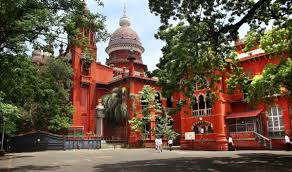
The Madras High Court has recently ruled that Section 77-A of the Registration Act, 1908, is unconstitutional. This section, added through a 2022 State amendment, gave District Registrars too much power to cancel property documents if there were accusations of fraud or forgery.
Key Findings of the Court
Justices S.S. Sundar and N. Senthilkumar raised concerns about this. They noted that while the section could help protect honest landowners, it also had the potential to cause serious problems for property owners who were actually in the right.
Legal Implications
The judges pointed out that the existing Sections 22-A and 22-B already allow officials to refuse to register documents under certain conditions. Disputes over property titles are usually handled by civil courts, which follow a structured legal process.
Judicial vs. Executive Authority
The court also mentioned that District Registrars are not qualified as judges. This means there could be a risk of bias because they work within the government. This raises concerns about fairness in handling property disputes.
Purpose of the Registration Act
The main goal of the Registration Act is to keep accurate public records of property. The court stressed that just registering a document doesn’t settle property title issues, which are often complex and need a detailed legal review. Although Section 77-A gave District Registrars the power to cancel registrations, these cancellations are not final. People who disagree with these decisions can challenge them in civil courts, which limits the effectiveness of this provision.
About Section 77-A
Section 77-A of the Indian Income Tax Act, introduced in 2015, allows taxpayers to correct errors in their tax returns within a year of filing without facing penalties. This provision is meant to address honest mistakes rather than deliberate tax evasion, aiming to build trust and reduce disputes. However, it has limitations based on the type of error and when the correction is made.
(NNI / Latest news / Latest news india / India latest news)
(UPSC current affairs / UPSC / UPSC Preparation / UPSC Preparation Books / UPSC Preparation Strategy )
Cyber Crime Prevention Against Women and Children (CCPWC) Initiative
Latest News: 2nd August 2024, UPSC Preparation


Safe City Projects are organized efforts by local police and city authorities to make cities safer, especially for women, and to fix problems with infrastructure. These projects are part of national plans to prevent cyber crimes against women and children, supported by the Nirbhaya Fund.
What is CCPWC?
The CCPWC initiative, under the Nirbhaya Fund, focuses on tackling cyber crimes. A key part of this initiative is the National Cybercrime Reporting Portal (NCRP), where people can report various cyber crimes, especially those targeting women and children.
NCRP and Reporting Mechanisms
The NCRP has been visited over 16.18 crore times and has reported 1.94 lakh incidents of child pornography and related crimes. Additionally, a partnership between India and the USA improves cooperation in addressing online child exploitation. To help investigate cyber crimes, Cyber Forensic cum Training Labs have been set up in 33 States and Union Territories, with a financial investment of more than Rs. 131.60 crore. These labs help handle and analyze cyber crime data effectively.
Emergency Response Support Systems
The Emergency Response Support System (ERSS) is available in all States and Union Territories, managing over 36.29 crore calls. It works with the Women Helpline (181) to provide better support for women in distress.
Safe City Projects Implementation
The Safe City Projects aim to use advanced technologies for smarter policing in eight cities: Ahmedabad, Bengaluru, Chennai, Delhi, Hyderabad, Kolkata, Lucknow, and Mumbai. These projects focus on addressing safety concerns raised by women and improving public safety infrastructure.
About National Cybercrime Reporting Portal (NCRP)
Launch and Purpose: The National Cybercrime Reporting Portal (NCRP) was launched in 2020 in India to make reporting cybercrimes such as hacking, identity theft, and financial fraud easier.
Features: The NCRP is available 24/7, offers anonymity for reporters, and includes online resources to raise awareness about cyber safety. It also helps law enforcement track cybercrime trends.
Broader Initiative: The portal is part of India’s Digital India campaign, aiming to boost public involvement in fighting cybercrime.
(NNI / Latest news / Latest news india / India latest news)
(UPSC current affairs / UPSC / UPSC Preparation / UPSC Preparation Books / UPSC Preparation Strategy )
DAE Launches ‘One DAE One Subscription’ Initiative in Mumbai
Latest News: 1st August 2024, UPSC Preparation
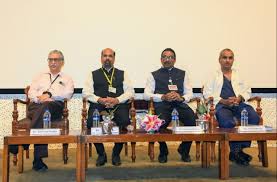

The first ceremony for the ‘One DAE One Subscription’ (ODOS) program took place at Tata Memorial Hospital in Mumbai. This initiative aims to improve access to scientific research for the Department of Atomic Energy (DAE) and its around 60 units.
Overview of ODOS
ODOS is created to make it easier for DAE members to access both national and international research papers and journals online. This will help promote growth in scientific knowledge and encourage collaboration among the DAE community.
Collaboration with Publishers
DAE has set up special agreements with two major publishers: Wiley India Private Limited and Springer Nature Group. These new agreements significantly increase the number of journals available to DAE compared to previous ones.
Details of Agreements
Wiley Agreement: This agreement gives DAE access to 1,353 journals, including those published from 1997 onwards. This is a big upgrade from the previous access, which was limited to just 166 journals for 12 units.
Springer Agreement: This agreement allows access to 2,686 titles, including 553 journals that are fully open access. Before this, DAE only had access to 1,752 journals for 14 units.
Perpetual Rights and Open Access Publishing
Both agreements offer permanent access to all these journals in 2024 and support publishing in open-access formats. This means DAE researchers can have their research published openly without having to pay extra fees called Article Processing Charges (APC). ODOS is part of a larger plan called One Nation One Subscription (ONOS), which aims to improve access to knowledge across the whole country. The Secretary of DAE mentioned that this program will benefit thousands of researchers and students, contributing to India’s overall development.
About One DAE One Subscription (ODOS)
Additionally, the term One DAE One Subscription (ODOS) is also used in the tourism sector. It refers to a subscription model that allows customers to access a variety of travel experiences under one plan. This model, introduced in recent years, focuses on offering value, flexibility, and convenience. It supports sustainability by encouraging local tourism and usually provides exclusive deals, discounts, and curated travel itineraries. This model often uses digital platforms to make booking easier and caters to both adventure seekers and business travelers, enhancing the overall travel experience.
(NNI / Latest news / Latest news india / India latest news)
(UPSC current affairs / UPSC / UPSC Preparation / UPSC Preparation Books / UPSC Preparation Strategy )
What is LTCG Tax?
Latest News: 31st July 2024, UPSC Preparation
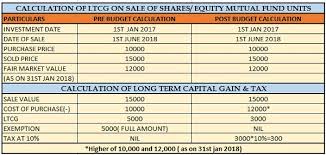

The long-term capital gains (LTCG) tax system underwent substantial modifications in the Union Budget for 2024–2025; most notably, the indexation advantage was eliminated. Taxpayers were confused and concerned about this choice, but the government clarified it and insisted that the adjustments would be beneficial in the majority of cases.
What is Indexation?
The process of indexation involves modifying an asset’s acquisition price to reflect inflation during the asset’s holding period. It is possible to compute capital gains or losses upon sale more precisely by updating the acquisition cost. Because it accounts for the depreciation of money’s purchasing power owing to inflation, the adjusted figure—also referred to as the indexed cost of acquisition—reflects a more realistic number.
Impact of Withdrawal of Indexation Benefit
Because the indexation benefit is no longer available, earnings from asset sales may seem inflated without taking inflation into account. If tax rates stay the same, this could mean that taxpayers owe more in taxes. Those who have owned assets for a long time may be most impacted by this.
Changes in the LTCG Regime
The LTCG tax rate is being lowered from 20% to 12.5% under the recently announced new regime, which also does away with indexation for determining gains on assets like gold and real estate. The fair market value as of April 1, 2001, will be applied as the acquisition cost for assets acquired prior to that date; this exception is meant to reduce the tax burden on inherited properties.
Government’s Justification
The government claims that by eliminating distinct tax rates for different asset classes, this streamlining of the capital gains tax system benefits the majority of taxpayers. They contend that real estate nominal gains frequently outpace inflation, indicating possible tax benefits under the new system.
Criticism and Grandfathering Issues
Opponents draw attention to the absence of grandfathering clauses, which would have permitted older transactions to continue to be subject to older tax laws through July 2024. Long-term investors are concerned about this move because, in the absence of transitional relief measures, their tax bills may rise. According to the government, the lower tax rate makes up for the lack of grandfathering benefits.
(NNI / Latest news / Latest news india / India latest news)
(UPSC current affairs / UPSC / UPSC Preparation / UPSC Preparation Books / UPSC Preparation Strategy )
Kerala transwoman breaks barriers to make mark in Kathakali
Latest News: 30th July 2024
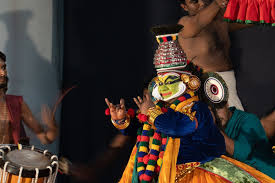

Kathakali was never alien to Ranjumol Mohan. Growing up, she had seen her uncles and cousins, trained in temple percussion instruments like thimila and chenda, perform at local temple festivals. Her first brush with art happened in class 5 when she was picked by a school teacher, who saw glimpses of rhythm and music in her, for a sub-district competition in Ottanthullal, a local dance-cum-recitation art form steeped in humour and satire. She won the first prize there too.
(NNI / Latest news / Latest news india / India latest news)
Khap panchayat leaders seek ban on same-sex marriage, live-in relations
Latest News: 29th July 2024
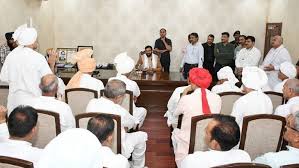

Leaders of around 300 khap panchayats on Sunday held a 'mahapanchayat' in Haryana's Jind and threatened to stage a massive protest if their demand to impose a ban on live-in relationships and same-sex marriages were not accepted.
Members from khap Panchayats from Haryana, Uttar Pradesh, Rajasthan, Gujarat, and Madhya Pradesh took part in the meeting.
Chief of Benain Khap, Raghubir Nain, said, "Live-in relationships should be banned. Same-sex marriages should be banned as even the animals avoid this".
"We also discussed about love marriage. The khaps are not against the love marriage, but the parents' consent is a must because no parent wants to harm his or her children," he said, adding that the Khaps were against "marriage within the same gotra (clan)".
(NNI / Latest news / Latest news india / India latest news)
India’s 500th Community Radio Station in Aizawl
Latest News: 28th July 2024, UPSC Preparation


Ashwini Vaishnaw, the Union Minister of Information and Broadcasting, recently launched India’s 500th community radio station, ‘Apna Radio 90.0 FM’, in Aizawl. At the same time, he announced the winners of the 10th National Community Radio Awards. This event shows that the government is serious about using media to get more people involved in their communities.
Significance of Community Radio
Community radio gives people in the area a chance to be heard and allows people at the local level to communicate. It encourages participation in politics, artistic expression, and social change, which makes it an important part of the media landscape. The launch of Apna Radio is in line with the government’s Act East strategy, which aims to improve community welfare and connectivity, especially in India’s North East. It shows a dedication to making local problems and stories heard.
Awards Overview
The National Community Radio Awards recognize outstanding contributions by stations across various categories, highlighting innovation, cultural promotion, and sustainability.
Award Categories
Thematic Award: Celebrating specific impactful themes.
Most Innovative Community Engagement Award: Creativity in audience participation.
Promoting Local Culture Award: Highlighting local traditions and culture.
Sustainability Model Award: Encouraging sustainable practices in radio operation.
Award Winners
Thematic Award:
1st: Radio Mayur, Bihar (Tech Sakhi)
2nd: Radio Kochi, Kerala (Nirangal)
3rd: Hello Doon, Uttarakhand (Meri Baat)
Most Innovative Community Engagement Award
1st: Yerlawani Sangli, Maharashtra (Kahani Sunandachi)
2nd: Vaylaga Vanoli, Tamil Nadu (Let’s Build a New Norm)
3rd: Salaam Namaste, Uttar Pradesh (Maid Didi)
Promoting Local Culture Award:
1st: Radio Brahmaputra, Assam (Igarekun)
2nd: Radio Kotagiri, Tamil Nadu (En Makkaludan Oru Payanam)
3rd: Radio Active, Bihar (Ang Pradesh ki Adbut Dharohar)
Sustainability Model Award
1st: Radio Benziger, Kerala
2nd: Radio Namaskar, Odisha
3rd: Radio Antarwani, Karnataka
(NNI / Latest news / Latest news india / India latest news)
(UPSC current affairs / UPSC / UPSC Preparation / UPSC Preparation Books / UPSC Preparation Strategy )
Vriksharopan Abhiyan 2024
Latest News: 27th July 2024, UPSC Preparation
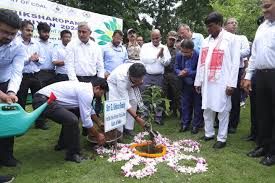

Union Minister Shri G. Kishan Reddy led the launch of the Vriksharopan Abhiyan 2024 at Bharat Coking Coal Limited (BCCL) in Dhanbad on July 25, 2024. This project is part of Prime Minister Narendra Modi’s “Ek Ped Maa Ke Naam” program and took place in 300 places in 47 districts across 11 coal- and lignite-rich states.
Key Participants
At the launch event, important people like Shri Dulu Mahato, MP for Dhanbad and Secretary of the Ministry of Coal, Shri Amrit Lal Meena, Chairman of Coal India Limited, and other top officials were present.
Planting Initiatives
About a million saplings were planted by different Coal and Lignite Public Sector Undertakings (PSUs) on the day of the start alone. About 24 million saplings have been planted by these PSUs on 10,942 hectares of land in coalfield areas over the last five years. The PSUs have big goals. In the next five years, aims to cover over 15,350 hectares with plants. Two thousand six hundred hectares have been set as the goal for this fiscal year.
Reforestation Techniques
To improve their reforestation efforts, the initiative employs:
Miyawaki method for dense planting
Seed balls for easier sowing
Drone technology to improve planting efficiency and manage resources
About Vriksharopan Abhiyan 2024
The Indian government’s Vriksharopan Abhiyan 2024 program aims to plant more trees. It was made to fight climate change and air pollution. A lot of trees will be planted all over India as part of the program. To increase variety, it focuses on local species. The project includes the neighborhood, schools, and non-governmental organizations (NGOs). It makes people more aware of how important trees are for the environment. It also wants to make cities look better and create green jobs. The program wants to get young people involved in taking care of the environment and promote a mindset of sustainability.
(NNI / Latest news / Latest news india / India latest news)
(UPSC current affairs / UPSC / UPSC Preparation / UPSC Preparation Books / UPSC Preparation Strategy )
National Maritime Domain Awareness Centre
Latest News: 26th July 2024


India is going to open a National Maritime Domain Awareness Center (NMDAC) to fight new dangers in the Indian Ocean Region (IOR). The NMDAC will focus on terrorism, piracy, trafficking, and illegal fishing. There are already advanced talks going on, and the final deal should be signed early next year.
Objective of NMDAC
The NMDAC’s job is to quickly gather and analyze information in order to come up with useful solutions to maritime security problems, all while keeping an eye on China’s growing military presence in the area.
Collaborative Framework
The plan will bring together 15 departments from seven ministries, such as those that handle oil, defense, fishing, and shipping. This multi-agency method is meant to make it easier for maritime security efforts to work together. Bharat Electronics Limited (BEL) has been asked to provide the NMDAC with the tools and software it needs to run, which will ensure that it has a high-tech infrastructure.
Historical Context
The 2008 terrorist strikes in Mumbai made people more aware of how vulnerable people are at sea, which led to calls for stronger maritime security. This is what led to the creation of the Information Management and Analysis Centre (IMAC) in 2014 and the Information Fusion Centre-Indian Ocean Region (IFC-IOR) in 2018. Both of these centers are meant to improve maritime domain knowledge.
About Indian Ocean Region
20% of the water on Earth’s surface is in the Indian Ocean Region (IOR). The ocean is surrounded by 38 countries and is the third biggest in the world. There are about 2,000 islands in the IOR. Madagascar is the biggest. The ocean has a big impact on weather and trade lines because it holds important shipping lanes. The Monte Carlo Agreement wants everyone in the region to work together to keep everyone safe. Coral reefs and deep-sea trenches are two of the IOR’s unique habitats. It also supports a lot of different species, such as the rare dugong and many types of whales.
(NNI / Latest news / Latest news india / India latest news)
(UPSC current affairs / UPSC / UPSC Preparation / UPSC Preparation Books / UPSC Preparation Strategy )
Mattel launches first-ever blind Barbie in Braille packaging
Latest News: 25th July 2024


Mattel has launched its first-ever blind Barbie doll as it aims to increase the representation of visually-impaired and low-vision children in society.
(NNI / Latest news / Latest news india / India latest news)
U-WIN Portal
Latest News: 24th July 2024, UPSC Preparation
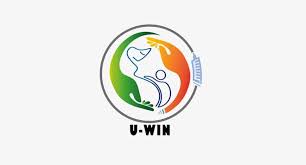

The Indian government has made a 100-day health plan that includes U-WIN, an online platform for managing vaccines that aims to increase the number of children in the country who get vaccinated. U-WIN is about to go live across the whole country, building on the successful digital infrastructure that was set up during the Covid-19 vaccination program by CoWIN.
What is U-WIN?
U-WIN is a website that helps people keep track of immunization records for kids younger than six and women who are pregnant. Users sign up with a government ID (like Aadhaar) and a cellphone number, which lets the system keep track of their vaccination records.
How Does U-WIN Work?
When a kid signs up for U-WIN, all of their required vaccinations can be added, which creates a color-coded vaccination certificate. Users are reminded of future vaccines by text message, and the platform makes it easy to find vaccination centers and make appointments. It gets rid of the need for actual vaccination books, making them easy to get all over the country.
Integration with Existing Systems
U-WIN will be linked to eVIN, a system that keeps track of vaccine stock and temperatures all along the cold chain. Using digital frameworks that health workers already know how to use, this integration aims to make sure that vaccine stocks are managed efficiently and that waste is kept to a minimum.
Benefits of U-WIN for Immunisation
U-WIN is expected to offer several advantages:
Improved Compliance: SMS reminders are likely to improve adherence to vaccination schedules.
Portability: It allows vaccinations to be recorded across different geographical locations, accommodating mobile populations.
Error Reduction: The platform provides safeguards against incorrect dose administration.
Granular Data: Individual vaccination records will help identify gaps in coverage, tackling the issue of “zero dose” children more effectively.
Centralised Database: A comprehensive data repository could support informed policy-making, improving immunization strategies over time. U-WIN represents a significant step toward modernizing childhood immunization processes in India, promising to enhance healthcare delivery and governance.
(NNI / Latest news / Latest news india / India latest news)
(UPSC current affairs / UPSC / UPSC Preparation / UPSC Preparation Books / UPSC Preparation Strategy )
Progress made, but skills gap, agri big hurdles on road to 2047: Economic Survey
Latest News: 23rd July 2024

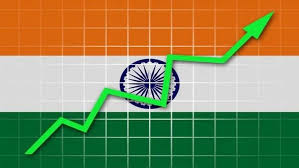
The Economic Survey has struck a realistic note while listing the challenges involved in India becoming a developed country by 2047, a stated objective of the current government, even as it acknowledges the progress made over the past decade.
(NNI / Latest news / Latest news india / India latest news)
The promise of parametric insurance
Latest News: 21st July 2024
UPSC preparation, UPSC, UPSC strategy

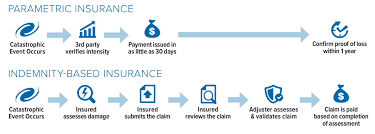
Parametric insurance offers a promising solution to the increasing frequency and severity of natural disasters. By providing quick and reliable payouts based on predefined triggers, it addresses the limitations of traditional indemnity-based insurance. For effective implementation, precise data, collaborative efforts, and innovative policy frameworks are essential.
The year 2023 was recorded as the warmest year, with natural disasters causing losses amounting to $280 billion globally. However, only $100 billion of these losses were insured, highlighting a significant gap in insurance coverage, especially between developed and developing economies. As extreme weather events become more frequent, the insurance industry must explore alternative coverage methods to enhance disaster resilience.
Current Insurance Methods:
Indemnity-Based Insurance: The widely used method involves physical assessment of damage for payouts. This method becomes problematic during large-scale disasters affecting economically disadvantaged communities with little asset documentation.
Need for Parametric Insurance:
Real-Time Measurements: Payments are triggered by specific weather parameters (e.g., rain levels, wind speed) without the need for physical loss verification.
Examples: Disaster-prone island countries have adopted parametric insurance, leading to better trust between states and insurers, reasonable pricing, and efficient trigger-payout combinations.
Global and Indian Context:
Global Use: Standardised parametric products for low-frequency, high-impact disasters (e.g., earthquakes, cyclones) are common. For instance, Morocco received $275 million in parametric insurance coverage after a 6.8 magnitude earthquake in 2023.
India’s Adoption: The Pradhan Mantri Fasal Bima Yojana for crop insurance and the Restructured Weather Based Crop Insurance Scheme are notable examples. States like Nagaland and organizations like the Co-operative Milk Marketing Federation in Kerala have also implemented parametric insurance.
Issues
Premium Payment Burden: Determining who should bear the premium costs—governments, corporations, or individuals—remains a challenge.
Data Accuracy: Precise thresholds and reliable data are crucial for effective parametric insurance.
Awareness and Trust: Building awareness and trust among stakeholders is essential for the widespread adoption of parametric insurance.
Significance
Disaster Resilience: Enhances the ability to recover quickly from natural disasters.
Economic Stability: Reduces financial burden on governments and individuals post-disaster.
Climate Adaptation: Facilitates climate adaptation strategies by providing financial protection against extreme weather events.
Solutions
Government Initiatives: States can tender parametric insurance products with clear terms to ensure competitive pricing and maximum payouts.
Data Utilization: Leveraging credible data from institutions like the India Meteorological Department for accurate monitoring and thresholds.
Collaboration: Encouraging collaboration between governments, private insurers, and multilateral institutions for risk pooling and better bargaining power.
Awareness Campaigns: Conducting awareness campaigns to educate stakeholders about the benefits and functioning of parametric insurance.
(NNI / Latest news / Latest news india / India latest news)
Vasco da Gama’s toxic legacy is now a ‘pandemic’ that kills 8 million globally
Latest News: 20th July 2024
UPSC preparation, UPSC, UPSC strategy


Tobacco consumption, introduced globally by explorers like Vasco da Gama, has evolved into a pandemic, causing millions of deaths and extensive health issues worldwide. The historical, economic, and ethical dimensions of tobacco use necessitate urgent and coordinated action to mitigate its impact.
The voyage of Vasco da Gama on July 8, 1497, marked a significant moment in global history, reshaping maritime routes and trade. Among the many exchanges catalyzed by this era of exploration was the introduction and dissemination of tobacco, a commodity that has had profound and multifaceted effects on societies worldwide. Today, tobacco consumption is a global health crisis, causing numerous diseases and deaths annually.
Historical Context
Introduction of Tobacco: Vasco da Gama’s voyage facilitated the introduction of tobacco to Europe, which was later brought to South Asia by European traders and colonizers, particularly the Portuguese, Dutch, and British.
Cultural Integration: Tobacco quickly embedded itself into the cultural and social fabric of South Asian societies, despite being alien to Indian ethos and culture.
Health Impact
Addiction: Nicotine, a highly addictive substance in tobacco, leads to severe addiction among users.
Diseases: Tobacco consumption contributes to a range of health issues, including:
Cancers: Lung, mouth, throat, esophagus, pancreas, and bladder cancers.
Respiratory Diseases: Chronic obstructive pulmonary disease (COPD), emphysema, chronic bronchitis.
Cardiovascular Problems: Heart disease, stroke, hypertension.
Other Conditions: Diabetes, infertility, weakened immune system, and complications in pregnancy.
Issues
Economic Impact
Employment: Tobacco cultivation is economically significant, employing over 45 million people in India.
Revenue: Tobacco accounts for 2% of India’s agri-exports and generates significant revenue through taxation and exports exceeding ₹22,000 crore annually.
Economic Cost: The total economic cost of smoking in India, including health expenditure and productivity losses, amounts to ₹1.82 trillion annually.
Ethical Dilemmas
Conflict of Priorities: A significant policy and ethical dilemma exists between the Indian Council of Medical Research (ICMR), which advocates for tobacco elimination, and the Indian Council of Agricultural Research (ICAR), which focuses on enhancing tobacco productivity.
Health vs. Economy: The health impacts of tobacco use clash with its economic benefits, creating a complex issue for policymakers.
Significance
Public Health Crisis: Tobacco use is responsible for over 1.2 million deaths in India each year and is a major contributor to the country’s cancer burden.
Historical Legacy: The introduction of tobacco by European colonizers has left a lasting legacy of addiction and disease, highlighting the darker aspects of colonial history.
Solutions
Legal Framework
Constitutional Rights: Article 21 of the Indian Constitution guarantees the right to life and health.
Directive Principles: Articles 39(e), 39(f), 41, 42, and 47 of the Directive Principles of State Policy mandate the state to improve public health and raise living standards.
Scientific Innovations
CRISPR Technology: Gene editing techniques, such as CRISPR, offer potential solutions by developing genetically modified tobacco plants with reduced nicotine content.
Research Collaboration: A collaborative effort between ICMR and ICAR is essential to develop tobacco crops that reduce health risks while maintaining economic viability.
Advertising Regulations
Surrogate Advertising: Stricter enforcement of advertising bans and regulations to curb surrogate advertising practices by the tobacco industry is crucial to reducing tobacco consumption.
(NNI / Latest news / Latest news india / India latest news)
Man to get Rs 1 lakh after company pulled up for selling 'spiked' protein powder
Latest News: 19th July 2024


A consumer forum in Mumbai ordered a company to pay a compensation of Rs 1.1 lakh to a fitness enthusiast after he found out that the product he purchased from the firm had sugar, contrary to what was advertised for the product.
(NNI / Latest news / Latest news india / India latest news)
Bengaluru mall that denied entry to farmer in dhoti to be temporarily closed
Latest News: 18th July 2024

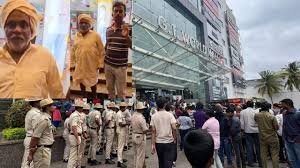
The incident occurred on Tuesday evening when an elderly farmer and his son were stopped at the entrance of the mall despite having tickets for a film.
NEET-UG 2024 case highlights | SC adjourns hearing of pleas alleging ‘paper leak’ to July 18
Latest News: 17th July 2024
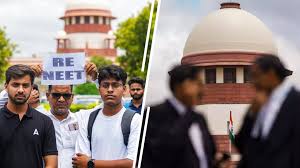

The Centre has claimed that there is no indication of any “mass malpractice” referring to a data analytics report by IIT Madras
(NNI / Latest news / Latest news india / India latest news)
Legal Metrology (Packaged Commodities) Rules, 2011 – Recent Updates
Latest News: 16th July 2024
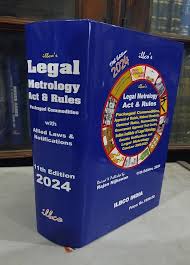

The Consumer Affairs Ministry wants to change the Legal Metrology (Packaged Commodities) Rules, 2011. The goal of the change is to require that important information about pre-packaged goods sold in stores that are bigger than 25 kilograms or 25 liters be made public. The goal of this move is to get rid of the current exemption for bulk packages and give customers more information.
Muslim board to explore ways to overturn Supreme Court’s alimony verdict
Latest news 15th July 2024
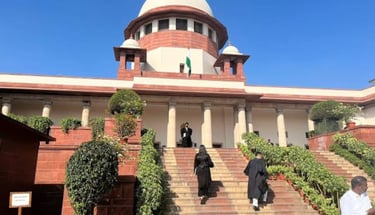

The board asserted that it doesn’t augur well “with human reasoning that the man is held responsible to maintain his ex-wives when the marriage itself is non-existent”.
(NNI / Latest news / Latest news india / India latest news)
Centralised hiring leads to cultural barriers in Eklavya schools
Latest news 14th July 2024
UPSC preparation
The centralisation of hiring for EMRS, although intended to streamline recruitment and address teacher shortages, has inadvertently created cultural barriers that hinder the educational experience of tribal students. A balanced approach that combines the benefits of centralisation with the necessity of local cultural sensitivity is crucial for the success of these schools.
The Eklavya Model Residential Schools (EMRS), designed to provide quality education to tribal students, have recently undergone a significant change in their hiring process. The centralisation of recruitment and the mandatory requirement of Hindi competency have sparked concerns regarding cultural barriers between teachers and students.
Background
Previous Hiring Practices: Until 2022, the recruitment for EMRS was managed by state authorities, allowing for local hiring practices that matched state-specific requirements and reservation quotas.
Centralisation: In 2023, the responsibility for hiring was transferred to the National Education Society for Tribal Students (NESTS), aiming to fill 38,000 positions across 400 schools with a standardised recruitment process.
Issues
Cultural and Language Barriers: Teachers recruited from Hindi-speaking states are unfamiliar with the local languages, foods, and cultures of southern states, leading to discomfort and inefficacy in teaching.
Teacher Shortage: The centralisation aimed to address the severe shortage of teachers in the EMRS system but has instead led to an influx of transfer requests from teachers unwilling to adapt to unfamiliar cultural settings.
Impact on Students: Tribal students, who benefit from teachers familiar with their cultural context, may face difficulties in relating to and learning from teachers who do not understand their local languages and traditions.
Significance
Standardisation vs. Localisation: While centralisation aims to standardise recruitment and fill vacancies efficiently, it undermines the importance of local cultural contexts essential for effective teaching and learning.
Policy Implications: The shift highlights the broader debate on the balance between centralised policies and local needs, particularly in education systems catering to culturally diverse populations.
Solutions
Flexible Hiring Policies: Implement flexible hiring policies that allow for local recruitment to ensure teachers are familiar with the cultural and linguistic contexts of the regions they serve.
Cultural Training Programs: Develop and mandate comprehensive cultural training programs for teachers recruited from outside the local regions to bridge the cultural gap and enhance their effectiveness.
Localized Recruitment Quotas: Introduce quotas that prioritize local candidates, ensuring that a significant portion of the teaching staff hails from the same cultural and linguistic background as the students.
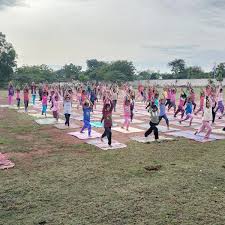

Secular remedy
The Supreme Court of India affirmed that divorced Muslim women can seek maintenance under secular laws, alongside personal law provisions, ensuring their rights are preserved and clarifying the impact of the 1986 Act without undermining secular legal remedies.
Background and Legal Context:
Supreme Court Clarification: The Supreme Court of India clarified that divorced Muslim women can seek maintenance under the Code of Criminal Procedure (CrPC), a secular remedy.
1986 Law Impact: The Muslim Women (Protection of Rights on Divorce) Act, 1986, appeared to restrict relief to what is allowed in Muslim personal law, countering the Shah Bano case judgment (1985).
Key Judgments and Interpretations:
Constitution Bench Ruling (2001): The 1986 law was upheld but interpreted not to limit Muslim women’s access to secular remedies.
High Court Divergence: Various High Courts had differing views on whether Muslim women should use the 1986 Act or Section 125 of the CrPC for maintenance.
Supreme Court’s Recent Verdict:
Parallel Provisions: The Court ruled that the 1986 Act’s provisions are in addition to, not in derogation of, the CrPC.
Justice Masih’s Opinion: Both personal law and secular remedies should coexist, with CrPC applicable if the woman cannot maintain herself and the 1986 Act obligating the husband to provide support.
Justice Nagarathna’s Perspective: The CrPC aims to prevent vagrancy among women by mandating husband support, and the 1986 Act codifies this right without negating other legal rights.
Implications and Significance:
Harmonious Interpretation: The verdict expands rights and secularises access to remedies, ensuring Muslim women’s rights under secular law remain intact.
Neutralizing Misperceptions: The Court’s decision counters the view that Muslim women’s right to seek maintenance under secular provisions was extinguished in 1986.
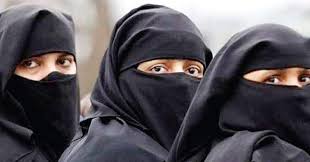

Divorced Muslim women entitled to maintenance under secular statute: SC
The Supreme Court’s ruling is a significant step towards ensuring justice and equality for divorced Muslim women. By recognizing their right to maintenance under the secular Section 125 of the CrPC, he court has upheld the principles of equality and non-discrimination. This judgment not only provides legal clarity but also strengthens the financial and social security of divorced Muslim women in India.
The Supreme Court of India, in a landmark judgment, held that divorced Muslim women are entitled to maintenance under the secular Section 125 of the Code of Criminal Procedure (CrPC). This ruling emphasizes the equal rights of divorced Muslim women to maintenance, aligning with the principles of justice and equality irrespective of personal laws.
The judgment was delivered while hearing an appeal against a Telangana High Court order.
The appeal was filed by Mohammad Abdul Samad, who challenged the interim maintenance granted to his divorced wife under Section 125 of the CrPC.
The Supreme Court upheld the Telangana High Court’s decision, reinforcing that a divorced Muslim woman can seek maintenance under Section 125 of the CrPC.
Section 125 of the CrPC: Provides a mechanism for maintenance for wives, children, and parents irrespective of their religion.
Muslim Women (Protection of Rights on Divorce) Act, 1986: Provides for a “reasonable and fair provision of maintenance” during the iddat period.
Conflict of Laws: The primary issue was whether the 1986 Act supersedes Section 125 of the CrPC for divorced Muslim women.
Maintenance Post-Iddat Period: Under the 1986 Act, the obligation to provide maintenance ceases after the iddat period, whereas Section 125 mandates continuous maintenance.
Maintenance for Children: The 1986 Act limits maintenance for children to two years from birth, while Section 125 covers maintenance until children attain the age of majority.
Equality Before Law: This judgment reinforces the constitutional commitment to equality and non-discrimination.
Empowerment of Women: It ensures that divorced Muslim women are not deprived of their right to maintenance, providing them with financial security and dignity.
Harmonious Interpretation: The court clarified that both Section 125 of the CrPC and the 1986 Act can coexist, offering choices to divorced Muslim women for seeking maintenance.
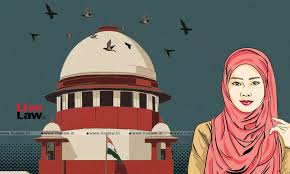

Divorced Muslim women entitled to maintenance under secular statute: SC
The Supreme Court’s ruling is a significant step towards ensuring justice and equality for divorced Muslim women. By recognizing their right to maintenance under the secular Section 125 of the CrPC, he court has upheld the principles of equality and non-discrimination. This judgment not only provides legal clarity but also strengthens the financial and social security of divorced Muslim women in India.
The Supreme Court of India, in a landmark judgment, held that divorced Muslim women are entitled to maintenance under the secular Section 125 of the Code of Criminal Procedure (CrPC). This ruling emphasizes the equal rights of divorced Muslim women to maintenance, aligning with the principles of justice and equality irrespective of personal laws.
The judgment was delivered while hearing an appeal against a Telangana High Court order.
The appeal was filed by Mohammad Abdul Samad, who challenged the interim maintenance granted to his divorced wife under Section 125 of the CrPC.
The Supreme Court upheld the Telangana High Court’s decision, reinforcing that a divorced Muslim woman can seek maintenance under Section 125 of the CrPC.
Section 125 of the CrPC: Provides a mechanism for maintenance for wives, children, and parents irrespective of their religion.
Muslim Women (Protection of Rights on Divorce) Act, 1986: Provides for a “reasonable and fair provision of maintenance” during the iddat period.
Conflict of Laws: The primary issue was whether the 1986 Act supersedes Section 125 of the CrPC for divorced Muslim women.
Maintenance Post-Iddat Period: Under the 1986 Act, the obligation to provide maintenance ceases after the iddat period, whereas Section 125 mandates continuous maintenance.
Maintenance for Children: The 1986 Act limits maintenance for children to two years from birth, while Section 125 covers maintenance until children attain the age of majority.
Equality Before Law: This judgment reinforces the constitutional commitment to equality and non-discrimination.
Empowerment of Women: It ensures that divorced Muslim women are not deprived of their right to maintenance, providing them with financial security and dignity.
Harmonious Interpretation: The court clarified that both Section 125 of the CrPC and the 1986 Act can coexist, offering choices to divorced Muslim women for seeking maintenance.


SC judge says men should share funds to empower their homemaker wives
Justice Nagarathna’s observations highlight a significant aspect of marital relationships in India, emphasizing the need for financial empowerment of homemaker wives. By recognizing the financial contributions and needs of homemaker wives, the ruling promotes a more secure and respectful family environment. Ensuring the financial empowerment of homemaker wives is not just a matter of equity but also a step towards building stronger families and a stronger nation.
Context and Ruling:
Justice Nagarathna’s observations were made in the context of upholding the right of divorced Muslim women to maintenance under a secular law.
She stressed that the financial empowerment of homemaker wives, who lack independent income, is crucial for their security and well-being within the family.
Key Observations:
Financial Empowerment: Justice Nagarathna highlighted that Indian married men should become conscious of the need to financially empower their wives by providing financial resources, especially for their personal needs.
Recognition of Contributions: She acknowledged those men who provide access to their financial resources for their spouses, either through joint bank accounts or ATM cards, should be recognized for their efforts.
Distinction Between Women: A clear distinction was made between financially independent women and homemaker wives who lack financial independence and struggle to meet their personal expenses.
Issues
Financial Dependence: Many homemaker wives in India do not have independent sources of income and are financially dependent on their husbands.
Lack of Financial Empowerment: The absence of financial empowerment leaves homemaker wives vulnerable and insecure within their families.
Emotional and Financial Dependency: Homemaker wives are often dependent on their husbands not only financially but also emotionally, which is not always reciprocated.
Significance
Strengthening Families: Financial empowerment of homemaker wives contributes to stronger family units, which in turn, strengthens society and the nation.
Recognition of Unpaid Work: Acknowledging and supporting the unpaid work done by homemaker wives is essential for their dignity and well-being.
Security of Residence: Financial empowerment also impacts the security of residence for homemaker wives, ensuring they have a stable and secure home environment.
Solutions
Joint Financial Management: Encouraging joint bank accounts and shared financial management between spouses can provide homemaker wives with better financial security.
Awareness Programs: Increasing awareness among men about the importance of financially empowering their homemaker wives.
Legal Reforms: Implementing legal measures that ensure financial support for homemaker wives, even in cases of divorce or separation.
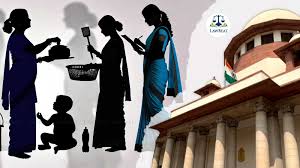

India’s demographic journey of hits and misses
India’s demographic journey reflects significant progress in fertility reduction, improved health outcomes, and poverty alleviation. However, challenges like income inequality, malnutrition, and gender inequality remain. Addressing these is crucial for achieving the Sustainable Development Goals by 2030.
Introduction: India’s Demographic Journey
World Population Day: Established by the UN in 1989 after a proposal by Dr. K.C. Zachariah.
1960s-1970s Predictions: Global population growth at 2% annually, leading to fears of poverty and hunger in India.
Positive Turnaround: Decline in global fertility rates, improved living conditions, and increased life expectancy.
India’s Progress: Fertility rates have fallen since the 1970s, currently below replacement level, with significant reductions in maternal and child mortality.
Population Dynamics:
Key Components: Fertility, mortality, and migration shape India’s demographic landscape.
Fertility Rate: Decreased from 3.4 (1992) to 2 (2021), below the replacement level of 2.1.
Mortality Rate: Significant decline with increased life expectancy.
Ageing Population: 8.6% aged 60+ in 2011, projected to rise to 19.5% by 2050.
Implications: Smaller family norms, potential demographic dividend, need for geriatric care and social security.
SDG Journey:
Poverty Eradication: Population below the poverty line reduced from 48% (1990) to 10% (2019). MGNREGA and Janani Suraksha Yojana were critical.
Food Security: The Green Revolution averted a food crisis; hunger reduced from 18.3% (2001) to 16.6% (2021). Malnutrition remains a challenge.
Health Improvements: Steady decline in critical mortality indicators. MMR decreased from 384.4 (2000) to 102.7 (2020), IMR from 66.7 (2000) to 25.5 (2021).
Challenges and Focus Areas:
Income Inequality: Top 10% holds 77% of national wealth, skewing development.
Nutrition Crisis: India ranks 111 out of 125 in the Global Hunger Index (2023).
Health Burden: Double burden of communicable and non-communicable diseases (NCDs).
Gender Equality: Critical for solving many issues and propelling SDG progress.
Path to Sustainable Development:
Policy Formation: Acknowledge changing population dynamics.
Job Creation: Harness demographic dividend by creating employment opportunities.
Health and Nutrition: Increase budgetary allocations and strengthen programs.
Gender Equality: Empower vulnerable women for holistic progress.
Collaboration and Will: Multi-sectoral collaboration and strong political will are essential for meeting SDG targets by 2030.

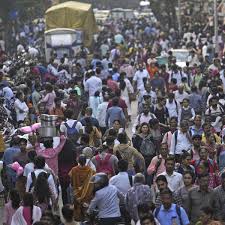
A pathway for the most populous nation
Global population trends highlight rising urbanisation, challenges in women’s health, and significant migration patterns. For India, addressing urban infrastructure, accurate population data, and workforce readiness are crucial to leveraging its demographic potential and sustaining future development.
Introduction: Global Population Trends
The global population is projected to reach 8.5 billion by the end of this decade.
Asia is expected to be overpopulated, while Europe will be underpopulated.
Falling fertility levels and rising longevity will result in a higher number of older people.
Imbalanced population distribution and skewed age structure are significant transformations.
Urbanisation and Its Challenges:
The population is increasingly centred in urban areas, with two-thirds expected to live in cities by 2030.
This urban concentration will strain infrastructure and amenities, potentially lowering the quality of life.
The uneven distribution of children and elderly within households will impact inequality, especially in India.
Women’s Health and Rights:
The theme for World Population Day focuses on women’s sexual and reproductive health and rights, marking the 30th anniversary of the International Conference on Population and Development (ICPD).
Significant progress has been made in access to modern contraceptives and in reducing maternal deaths.
Despite progress, 800 women die daily from preventable pregnancy-related causes, primarily in developing countries.
Lower fertility levels and rising longevity transform household composition, affecting care burdens and inequality.
Migration and Urban Development:
Migration trends will shape future population distribution, with 60 crore Indians migrating domestically and 2 crore abroad annually.
The emergence of new cities with adequate infrastructure is crucial to alleviate pressure on mega cities.
Cities drive the global economy, with 600 urban centres generating 60% of the world’s GDP.
Indian cities rank poorly in global assessments due to environmental and quality-of-life issues.
India’s Population and Workforce:
India lacks a realistic count of its population, relying on decades-old data for projections.
Conducting a census is vital for accurate population data to inform policy-making.
India must prepare its workforce for the global labour market to validate its potential in the 21st century.
Despite stringent immigration policies, Indian emigration is expected to continue in the near future.

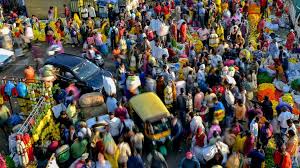
Double health budget, reduce out-of-pocket spends
The paradox of health being a non-issue in Indian politics despite its critical importance needs to be addressed urgently. Doubling the health budget and reducing out-of-pocket expenses can lead to significant improvements in health outcomes, economic benefits, and social equity. By aligning health spending with the needs of the population and recognizing healthcare as a fundamental right, India can move closer to its aspiration of being a developed country by 2047.
Context: Health care in India has been a persistent challenge, characterized by inadequate public health spending, high out-of-pocket expenses, and disparities in access to quality care. Despite the critical nature of health, it remains a non-issue in the political discourse and electoral priorities of the country.
Current Health Expenditure
Public Health Spending: India’s total health expenditure is around 3.5% of GDP, with public health spending at a mere 1.35%.
Out-of-Pocket Expenditure: Low public spending leads to high out-of-pocket expenses for households, with 13.4% of rural and 8.5% of urban households borrowing money to pay medical bills.
Impact of Recent Economic Changes
Demonetisation, GST, and COVID-19: These events have exacerbated the financial strain on households, making healthcare affordability even more critical.
Poverty Line: An estimated 60-80 million households have fallen below the poverty line due to medical expenses.
Dual Burden of Disease
Communicable Diseases: Easier to handle episodically but can have devastating consequences if neglected.
Non-Communicable Diseases: Require lifelong management, necessitating a robust and steady healthcare system.
Issues
Inadequate Budget Allocation
Stagnant Public Spending: Since 2010, public health spending has hovered between 1.12% and 1.35% of GDP.
Disproportionate Spending: States like Bihar spend only about 5% of their revenue budgets on health against the targeted 8%.
Insufficient Infrastructure
Glaring Gaps: The COVID-19 pandemic exposed significant deficiencies in health infrastructure, particularly in poorer states.
Resource Shortfall: States like Bihar, U.P., MP, Orissa, Rajasthan, Chhattisgarh, Jharkhand, and Assam face a higher than average shortfall of facilities and human resources.
Ineffective Financial Strategies
Misaligned Priorities: Increasing sums assured under social health insurance schemes without addressing systemic flaws.
Underutilized Funds: Only 25% of the health cess collected has been allocated to the Health Ministry.
Significance
Improved Health Outcomes
Reduced Financial Burden: Increasing public health spending can significantly reduce out-of-pocket expenses for households.
Enhanced Access to Care: Strengthening health infrastructure can improve access to quality care, especially in underserved regions.
Economic Benefits
Poverty Reduction: Reducing medical expenses can prevent households from falling into poverty.
Productivity Gains: A healthier population contributes to higher productivity and economic growth.
Social Equity
Public Good: Recognizing health as a public good and a foundational prerequisite for human development.
Social Contract: Fulfilling the societal obligation to provide healthcare as part of the social contract between citizens and the state.
Solutions
Budget Reforms
Double Health Budget: Substantially increase the health budget, particularly for the National Health Mission (NHM).
Utilize Health Cess: Allocate all funds collected under the health cess to the health budget.
Infrastructure Development
Focus on Poorer States: Prioritize funding for states with significant shortfalls in health facilities and human resources.
Strengthen Primary Care: Invest in primary health care facilities and district-level disease surveillance infrastructure.
Rationalize GST Levies
Reduce GST on Health Products: Lower GST on health insurance premiums and essential medical supplies like insulin and hepatitis diagnostics.
Disincentivize Costly Private Care: Implement measures to control the rising costs of private healthcare despite existing tax exemptions and subsidies.



